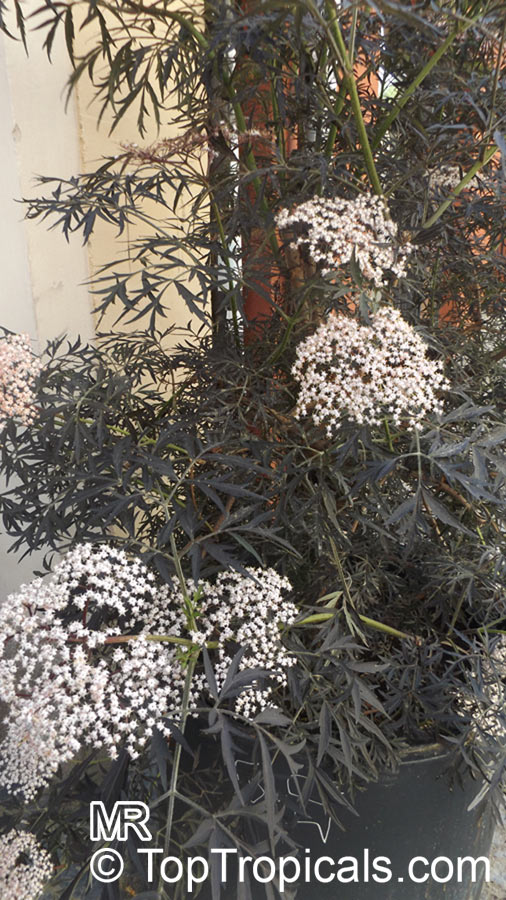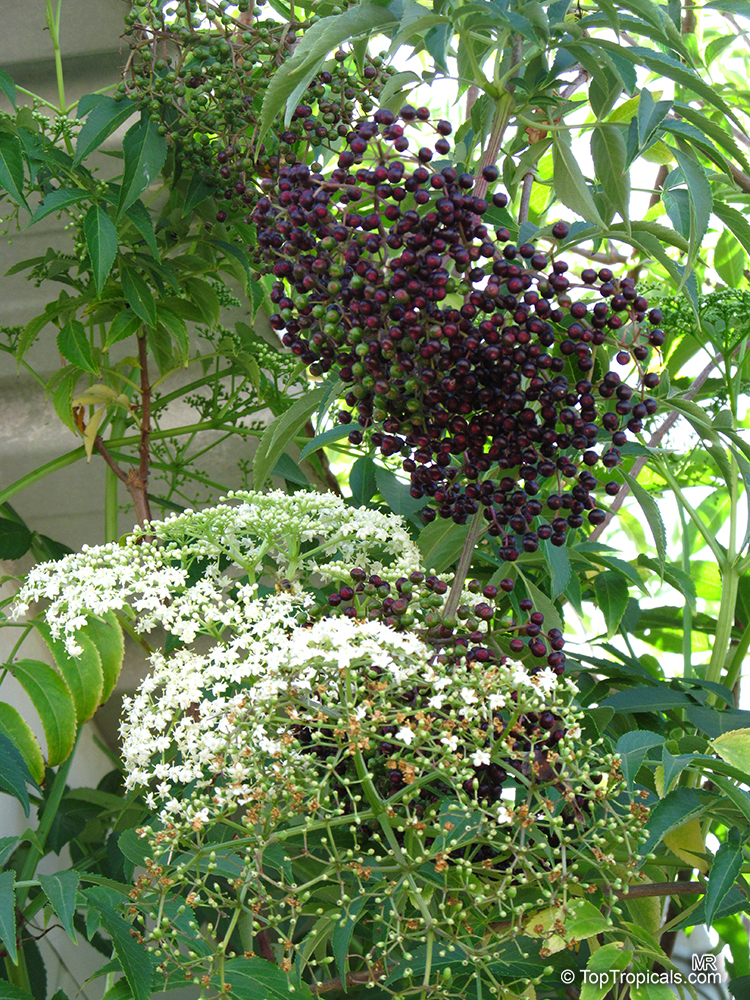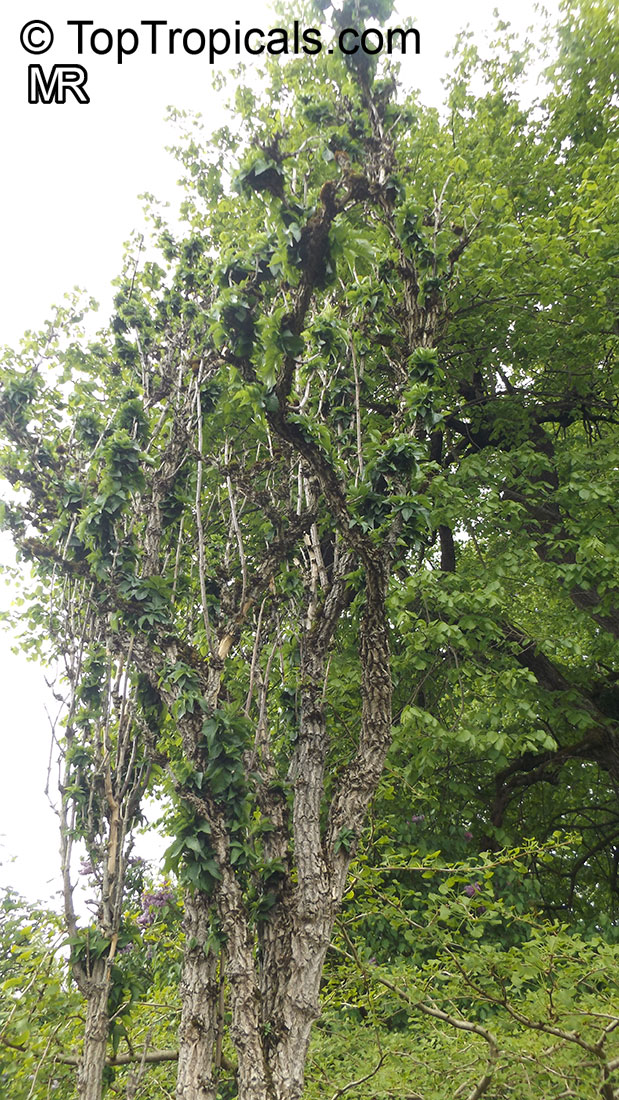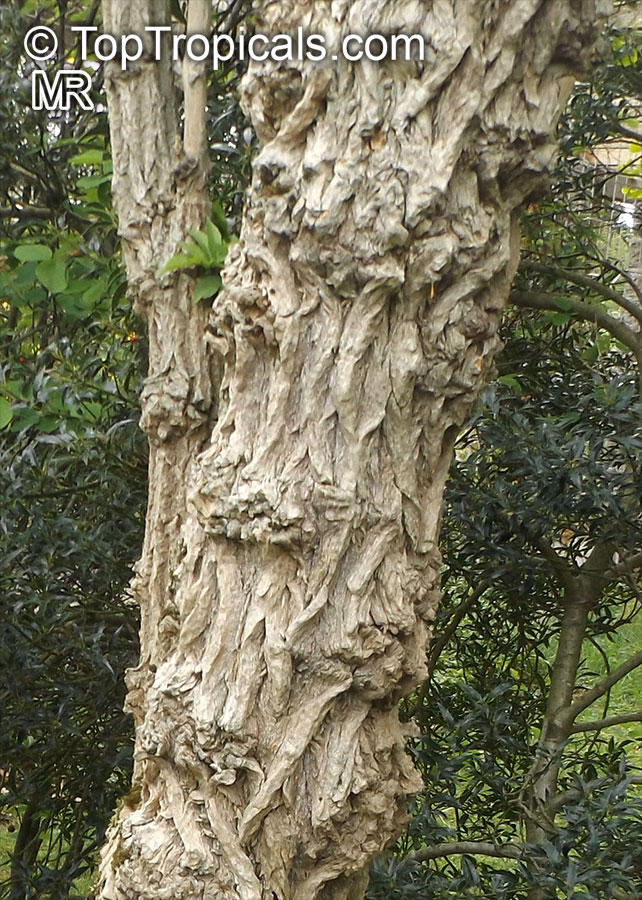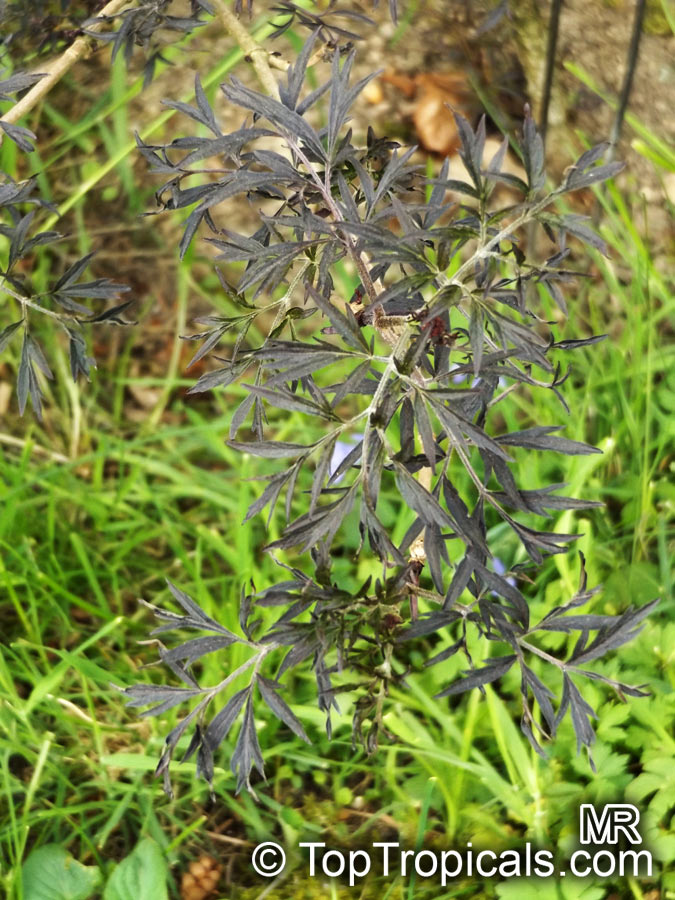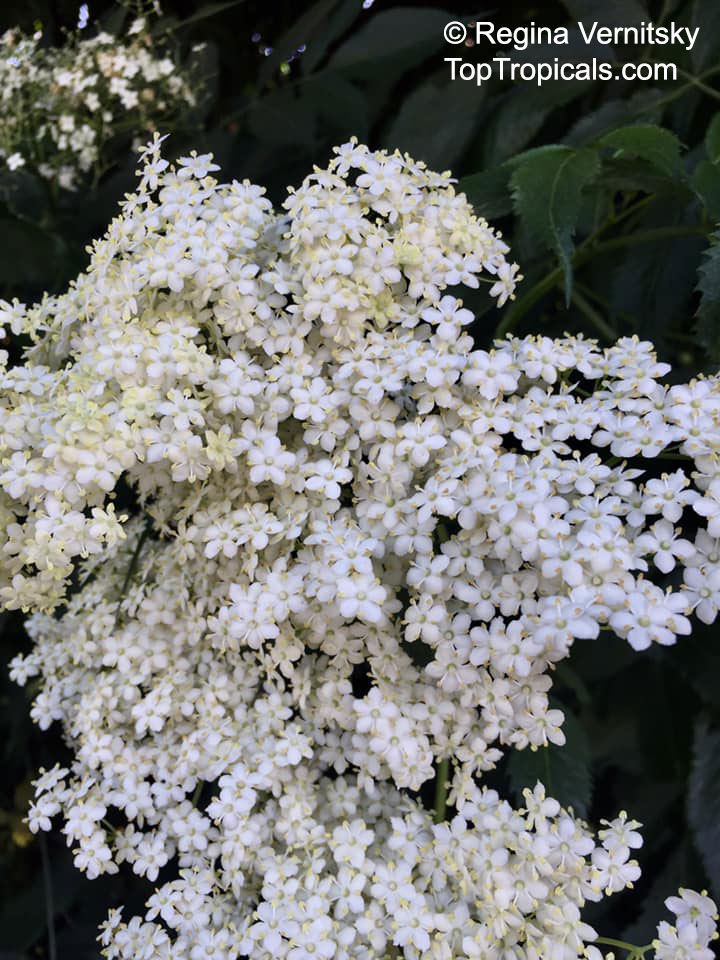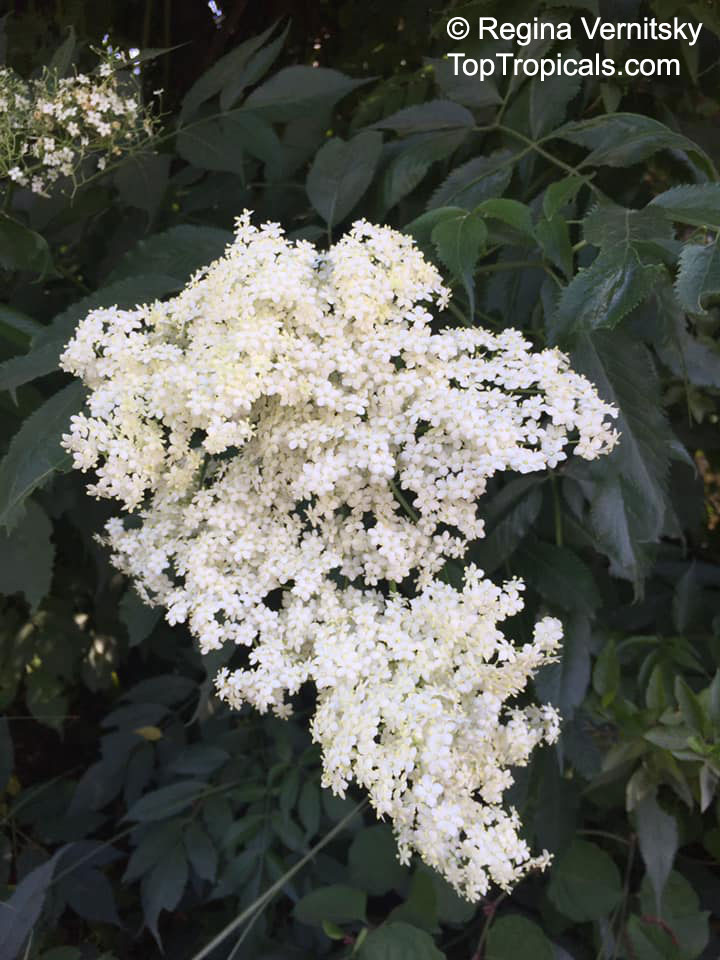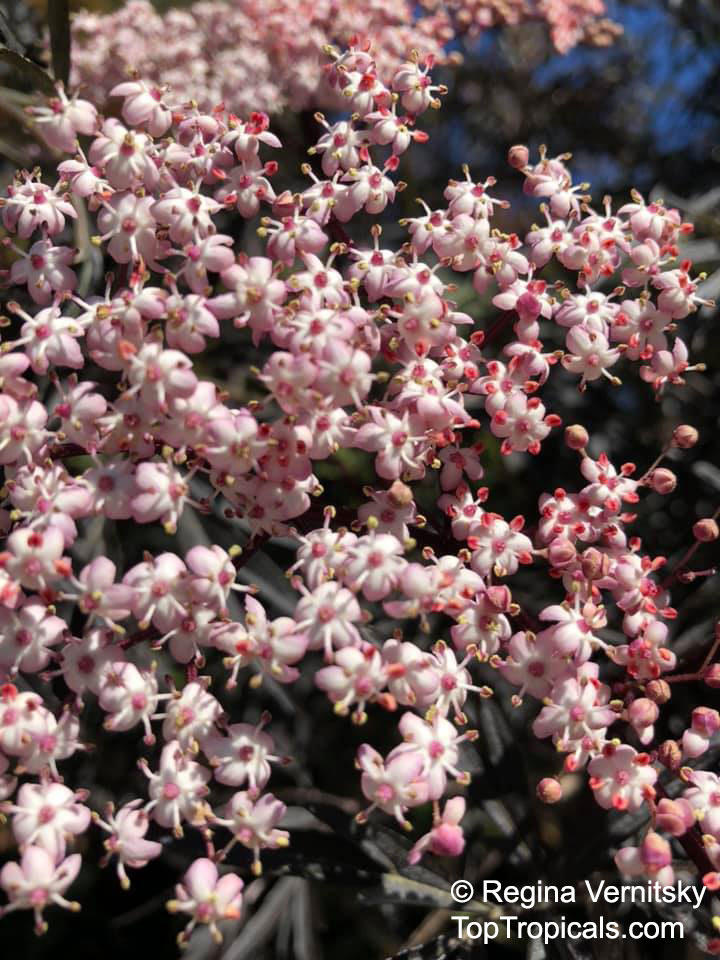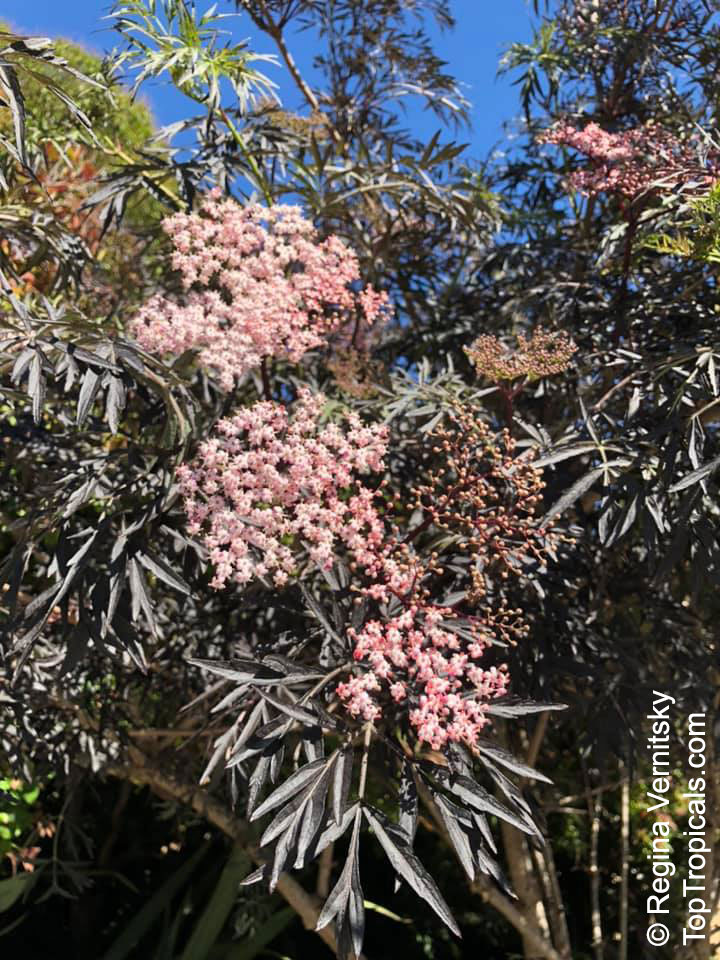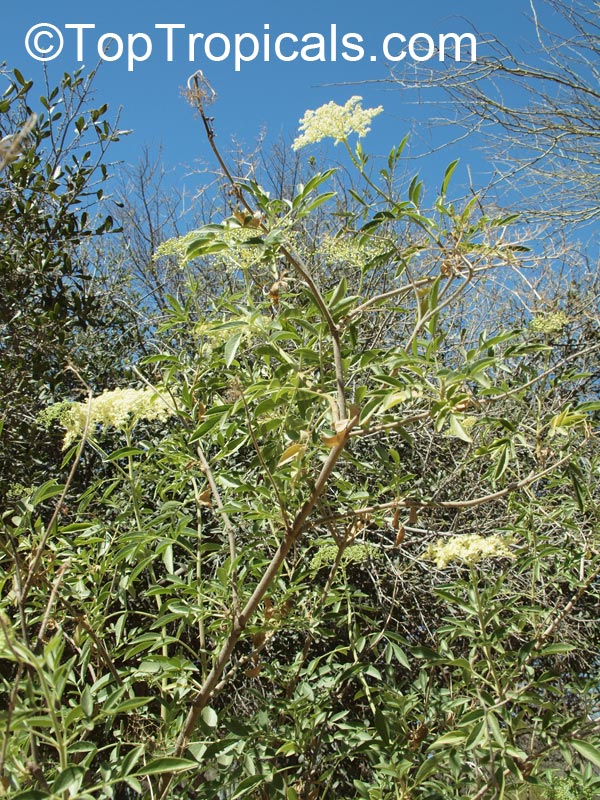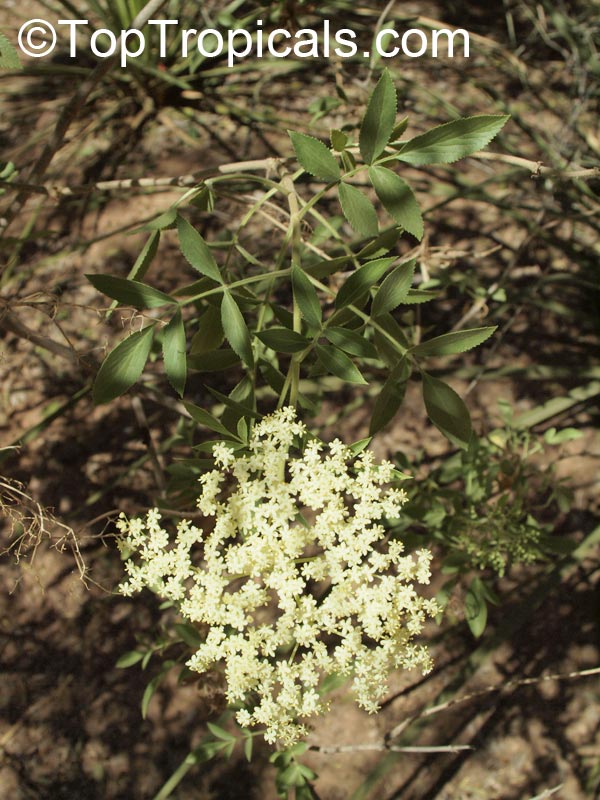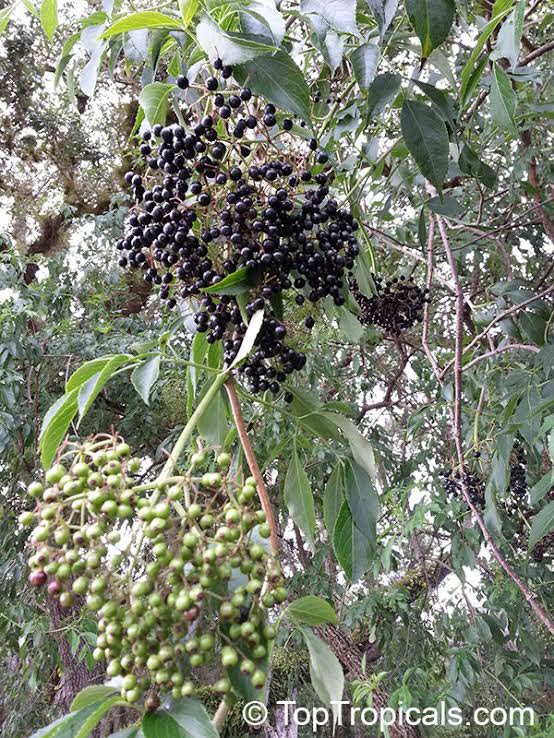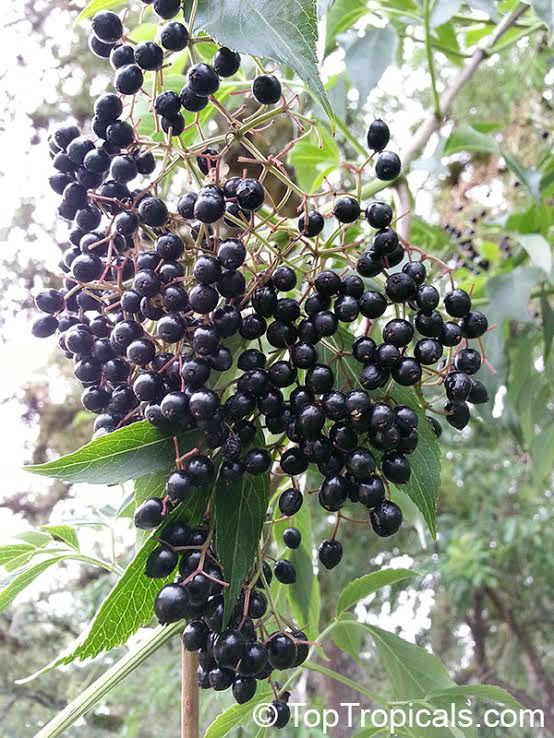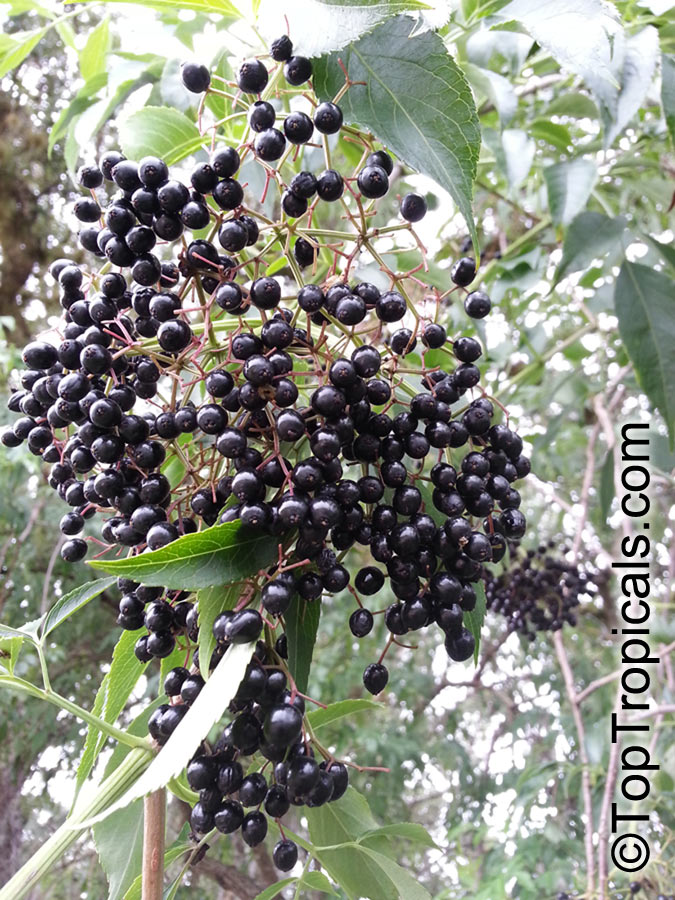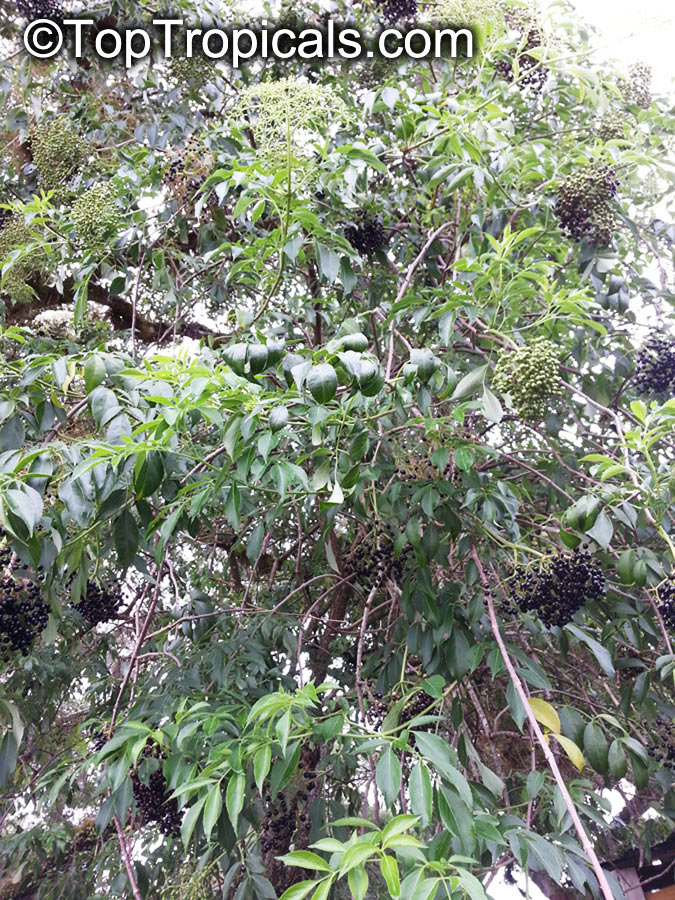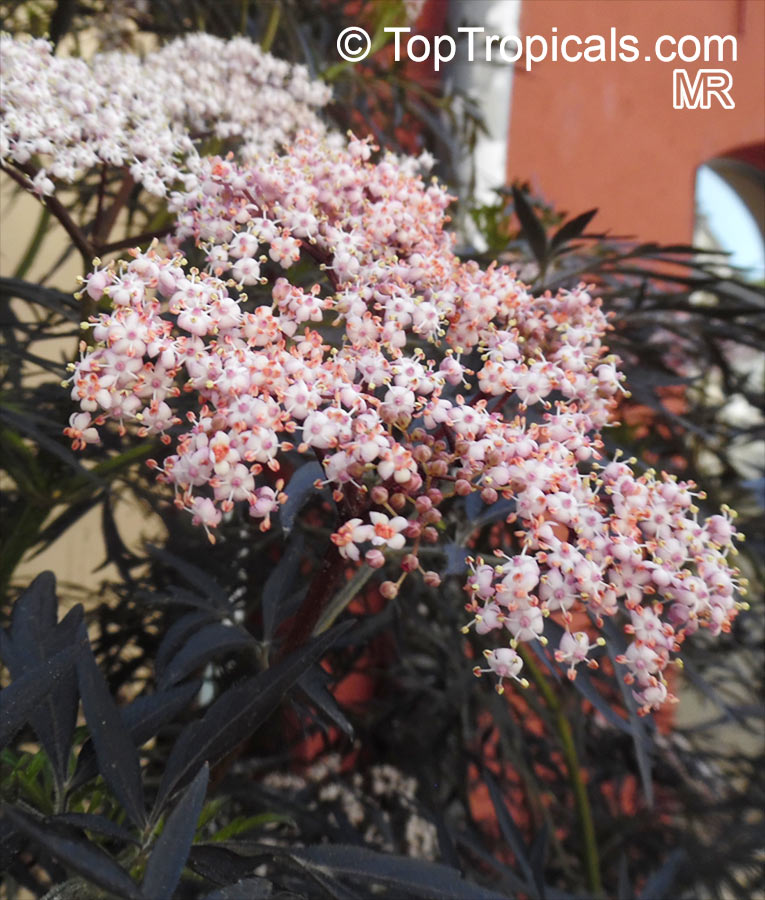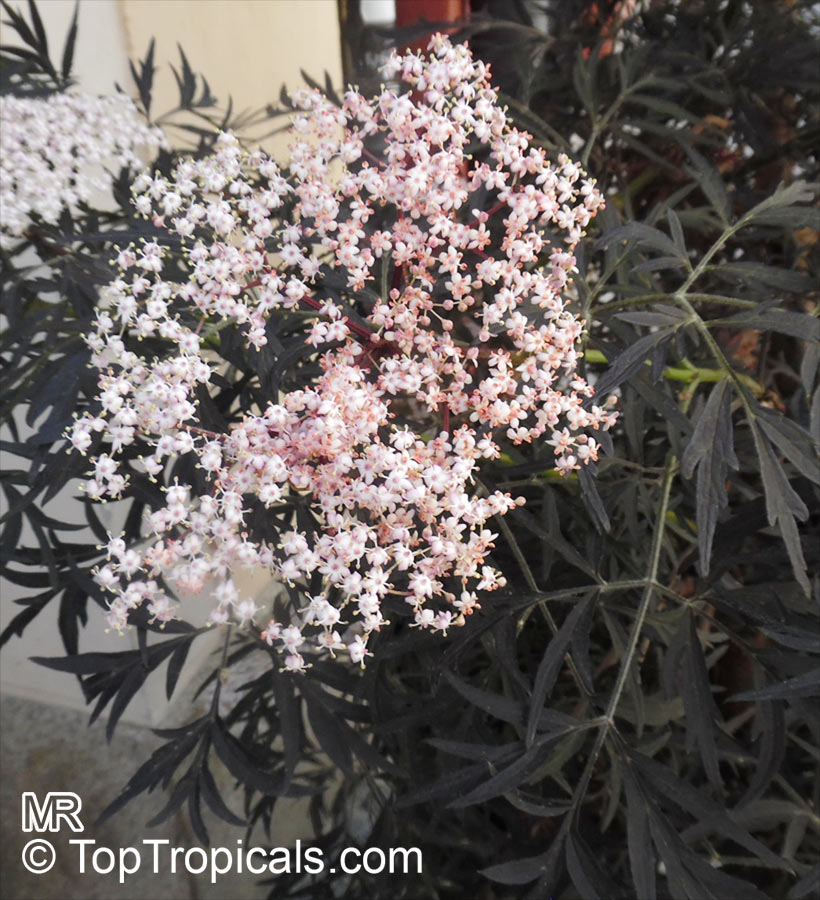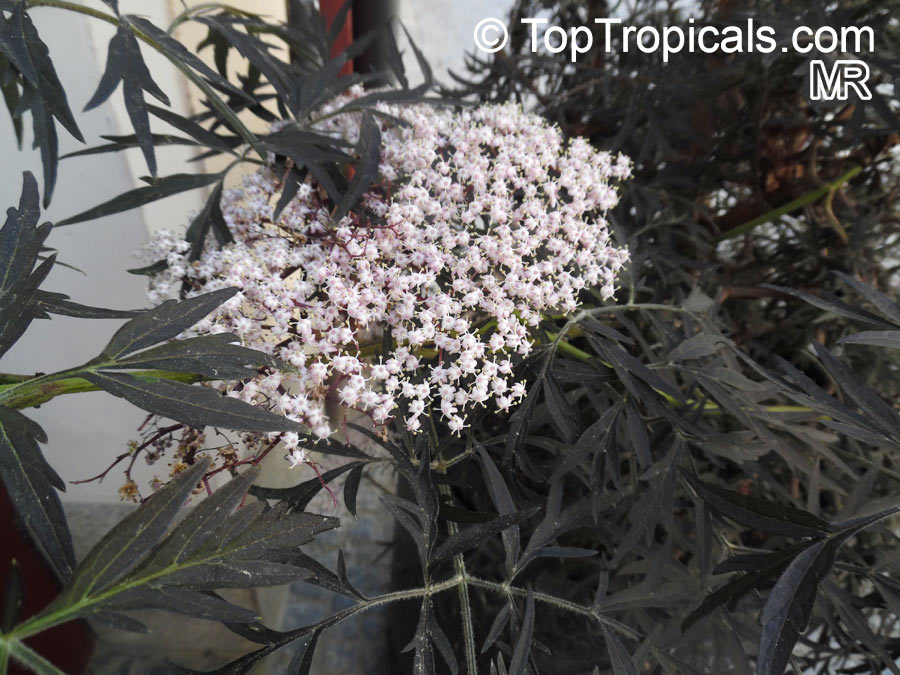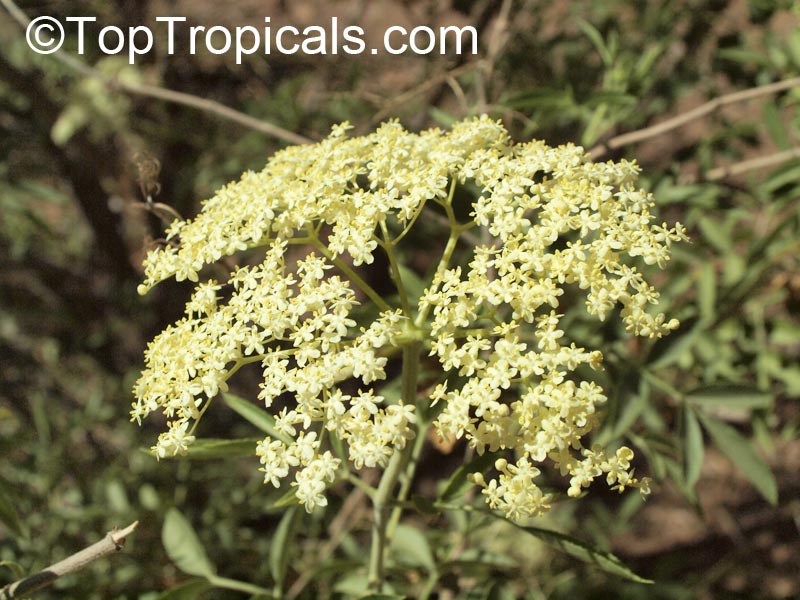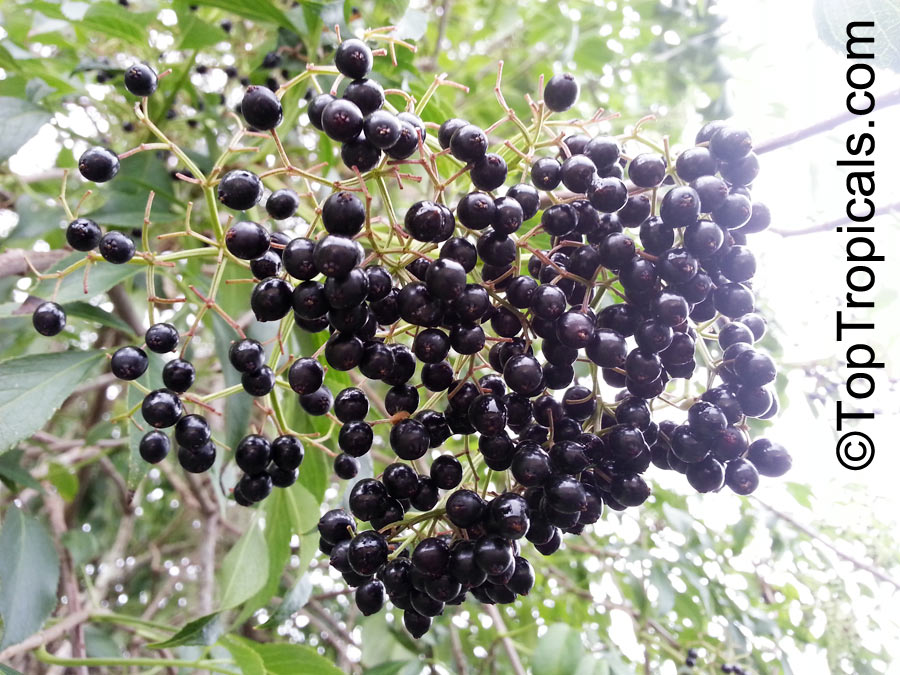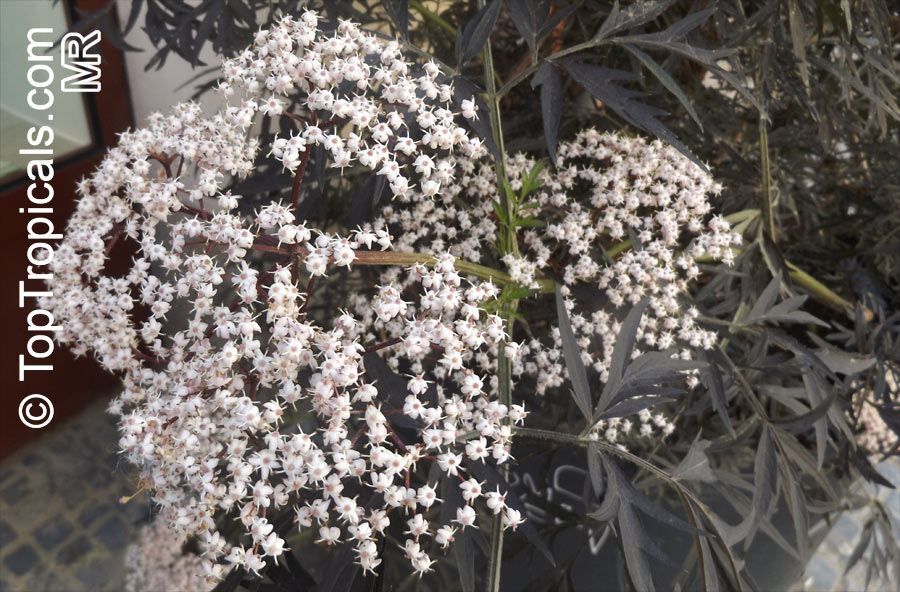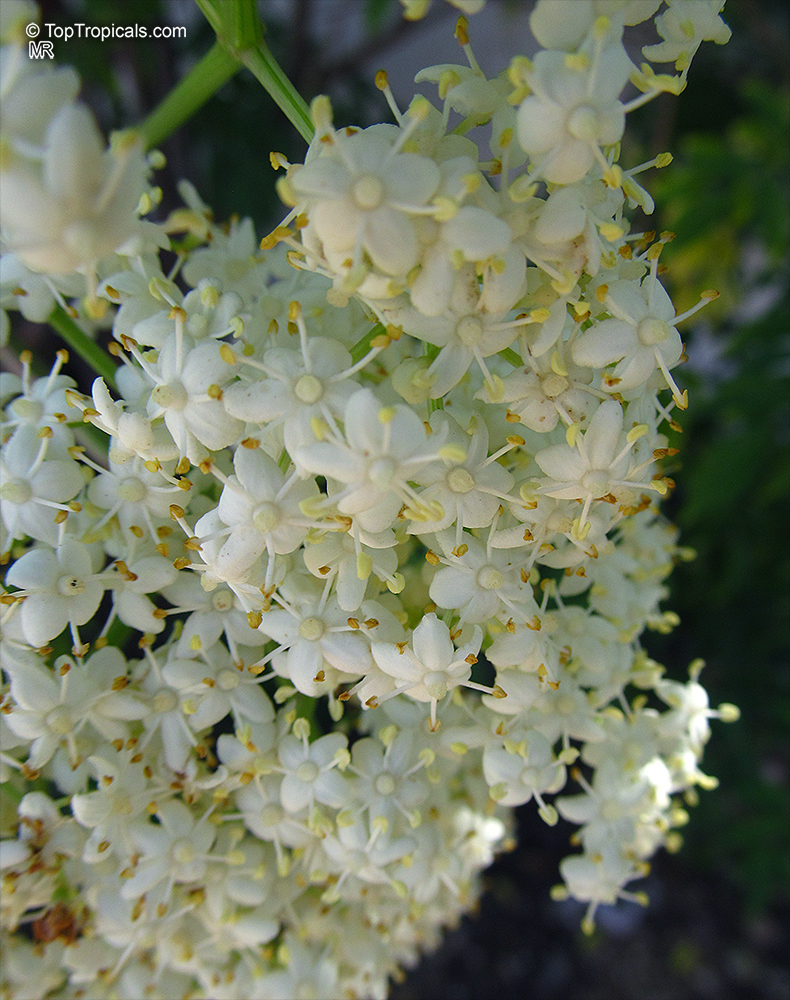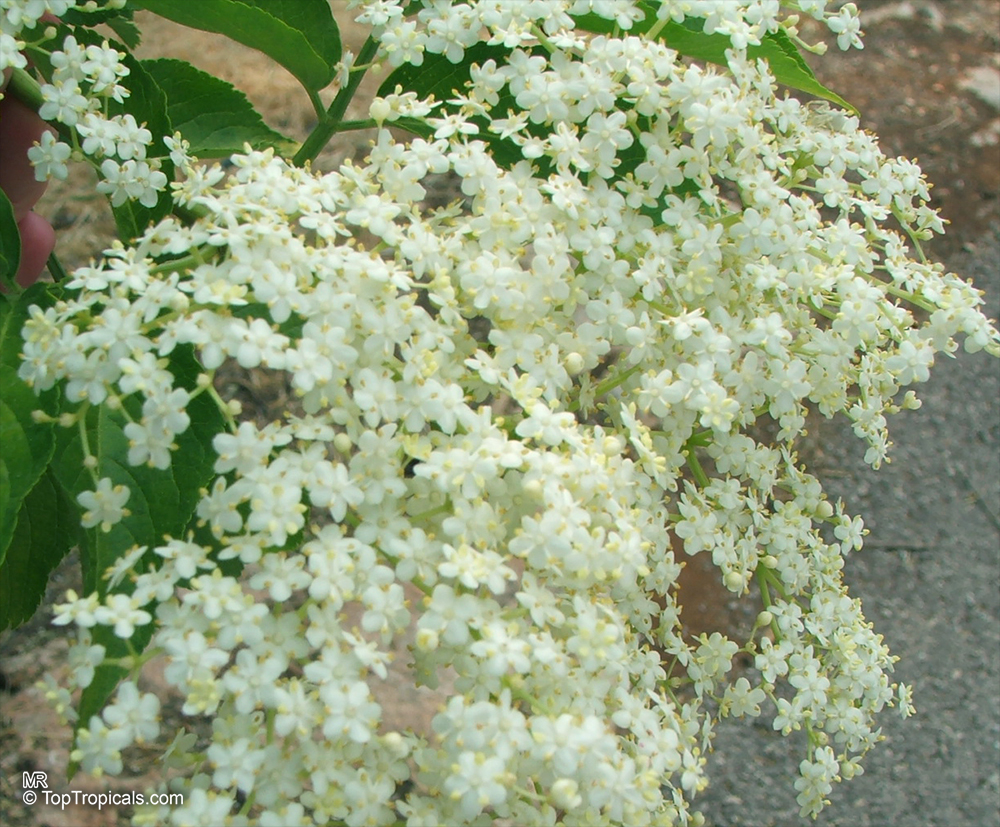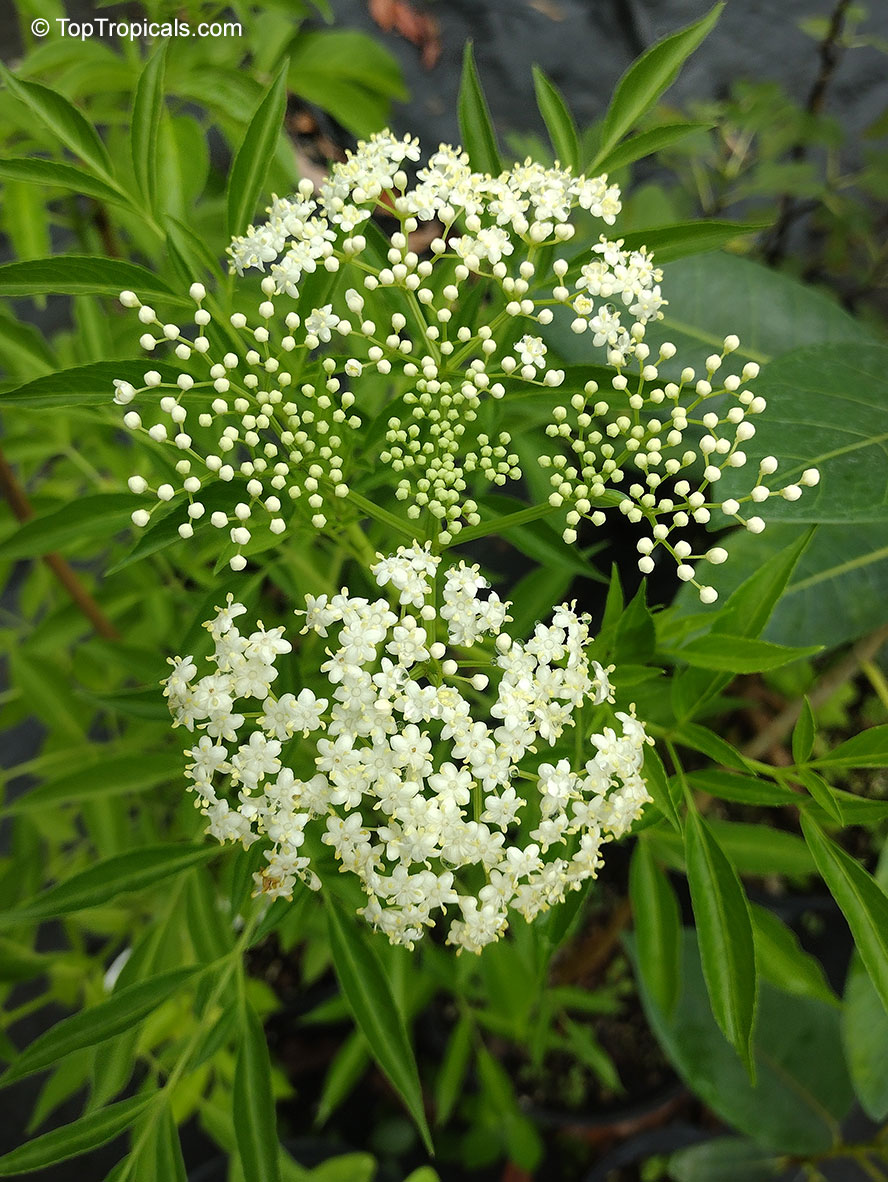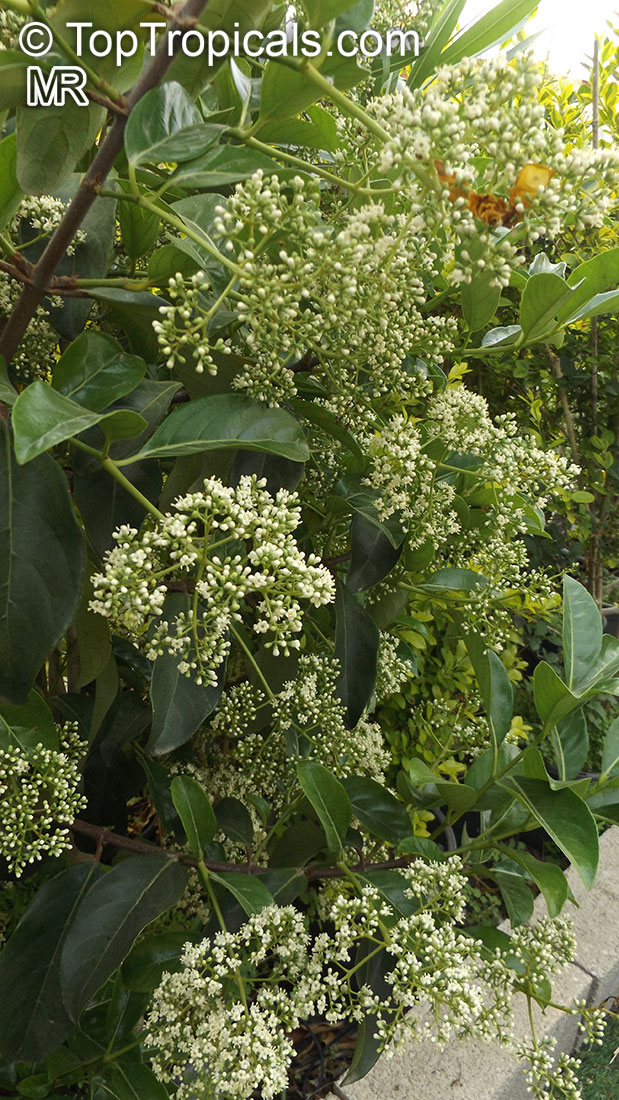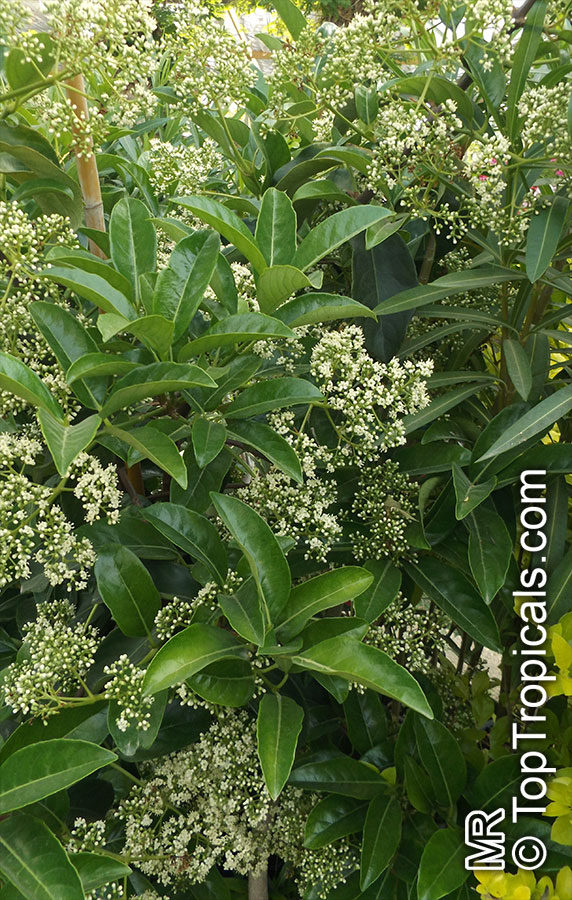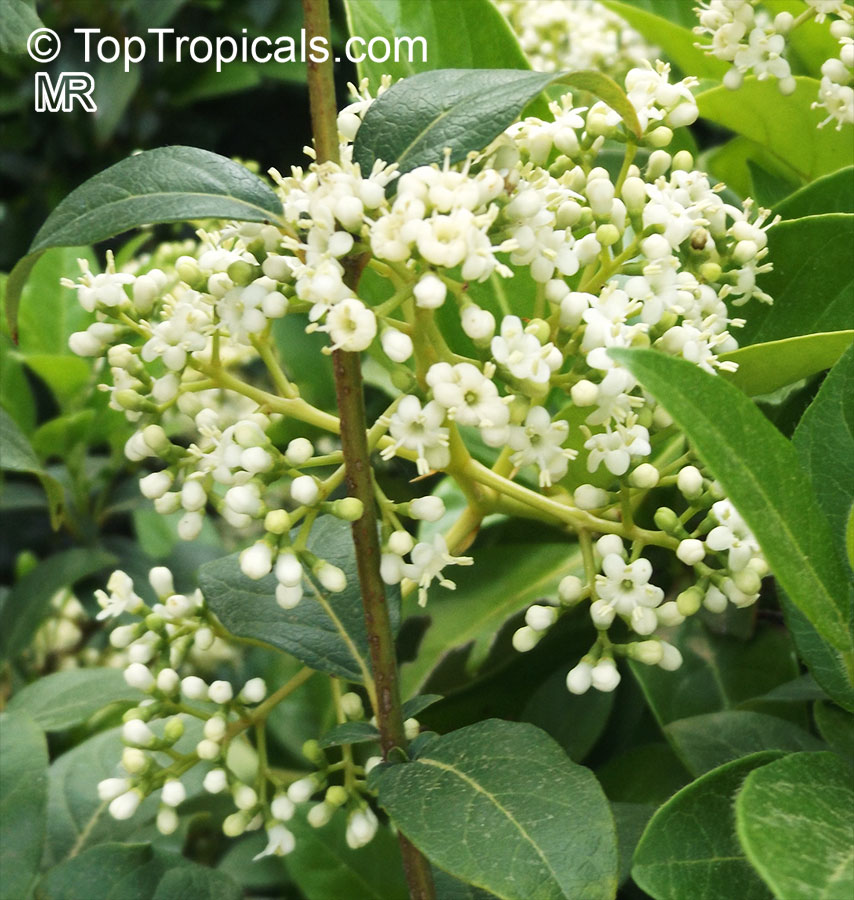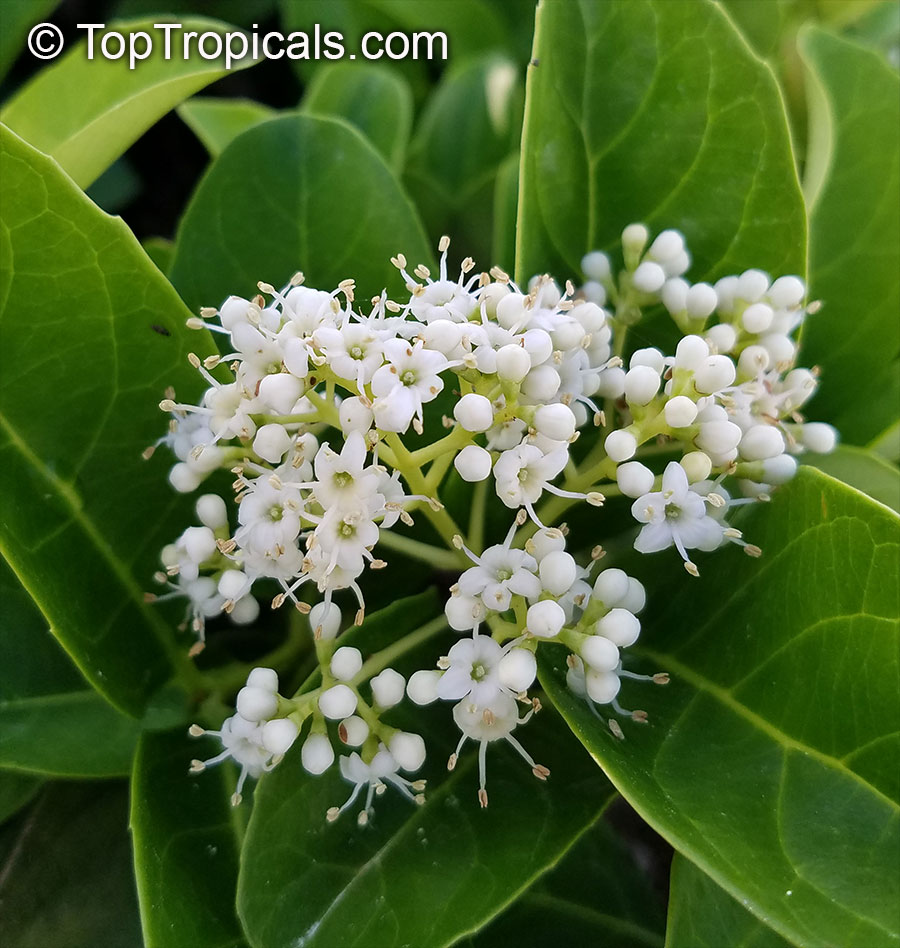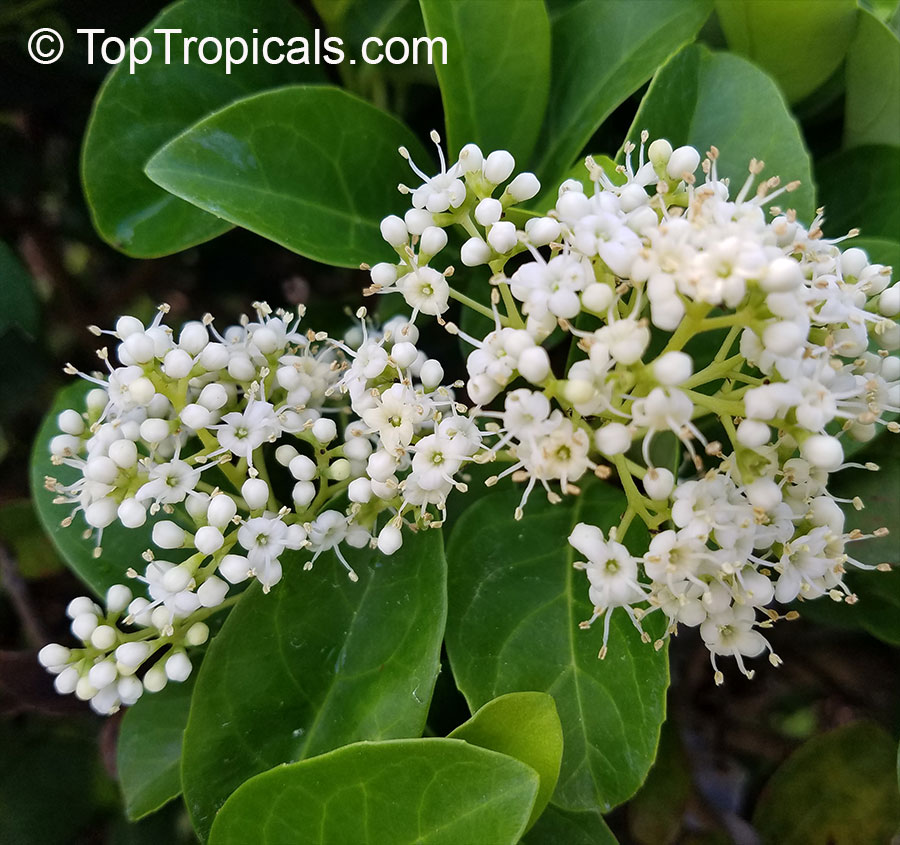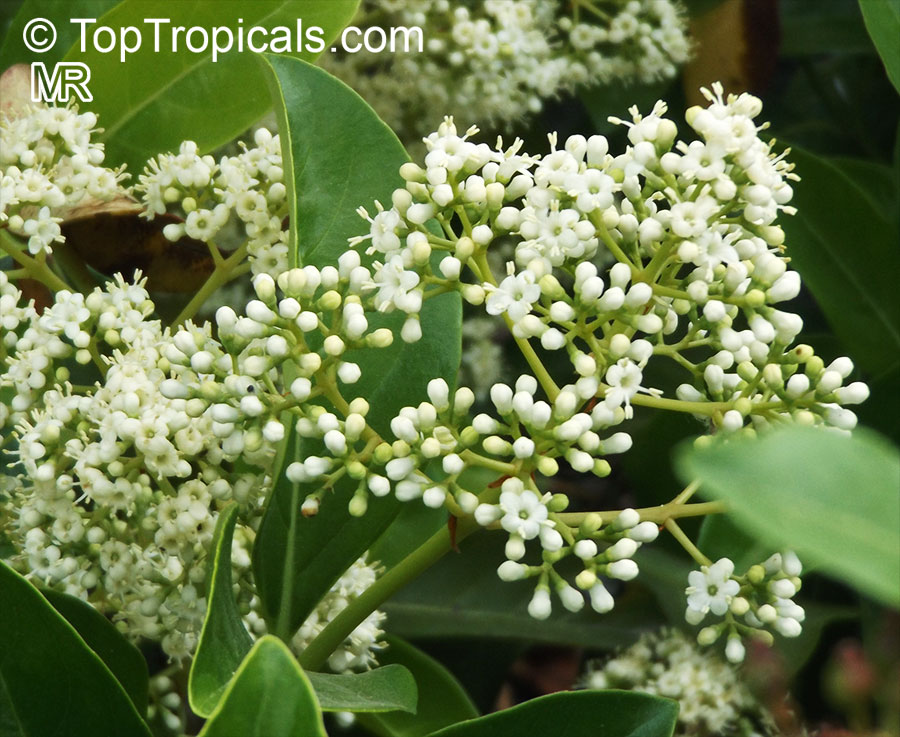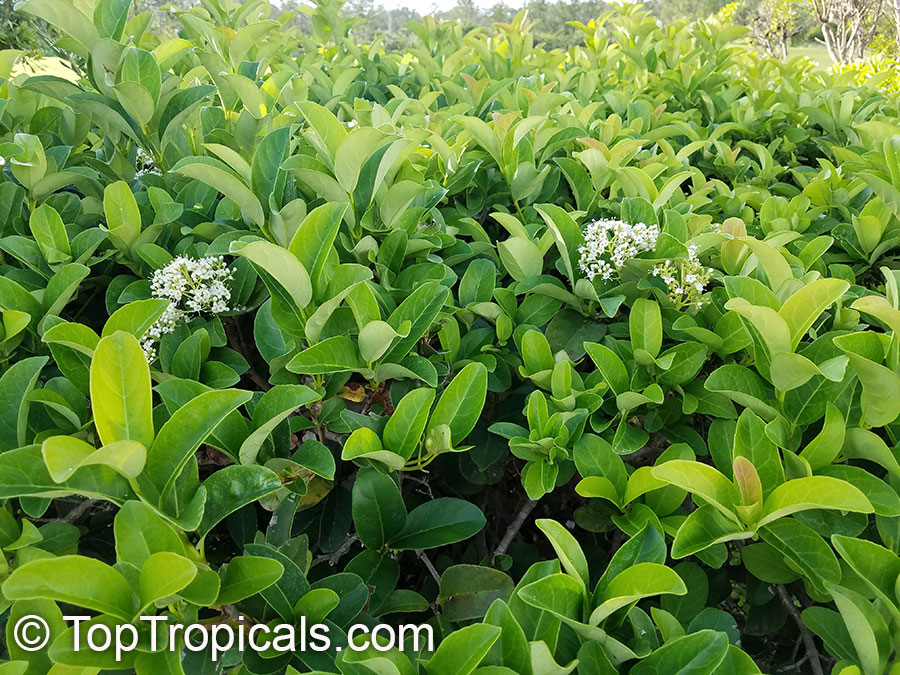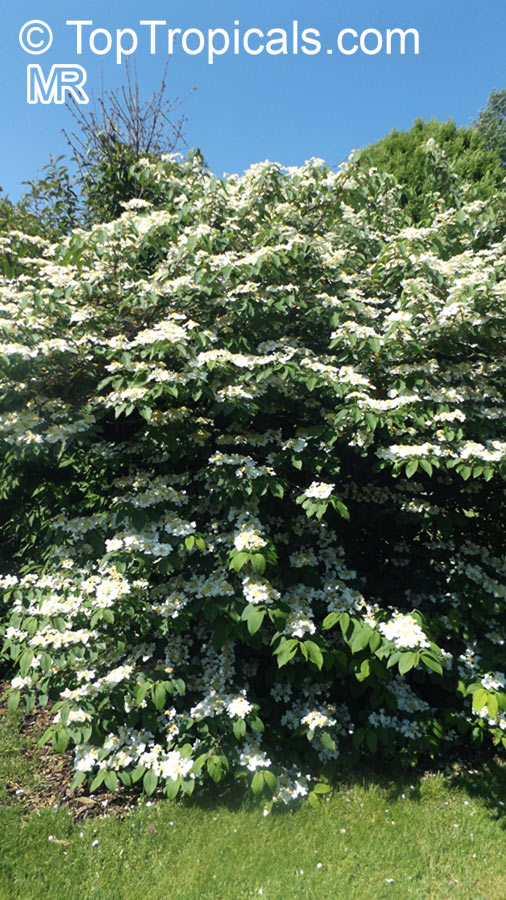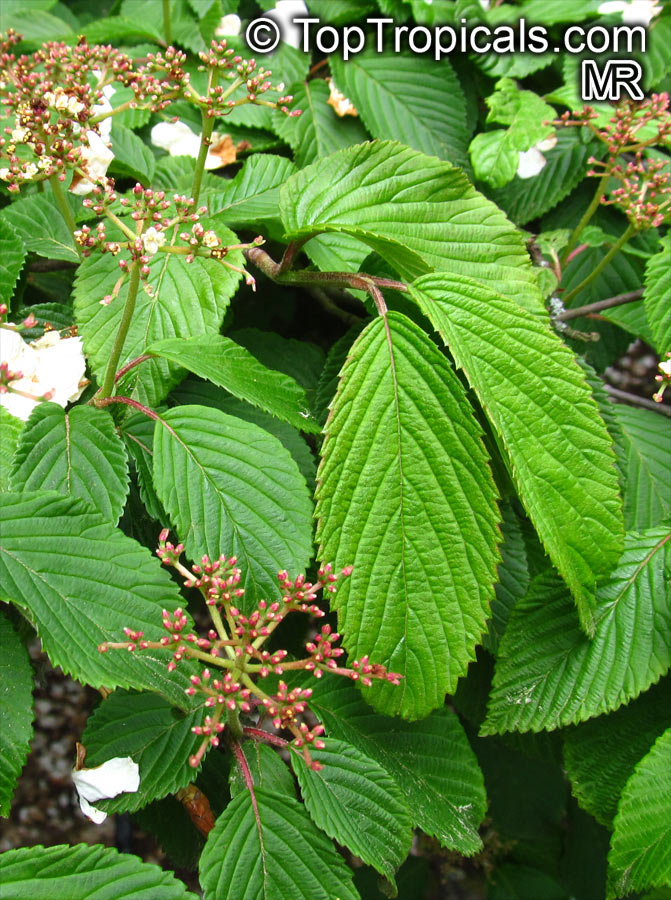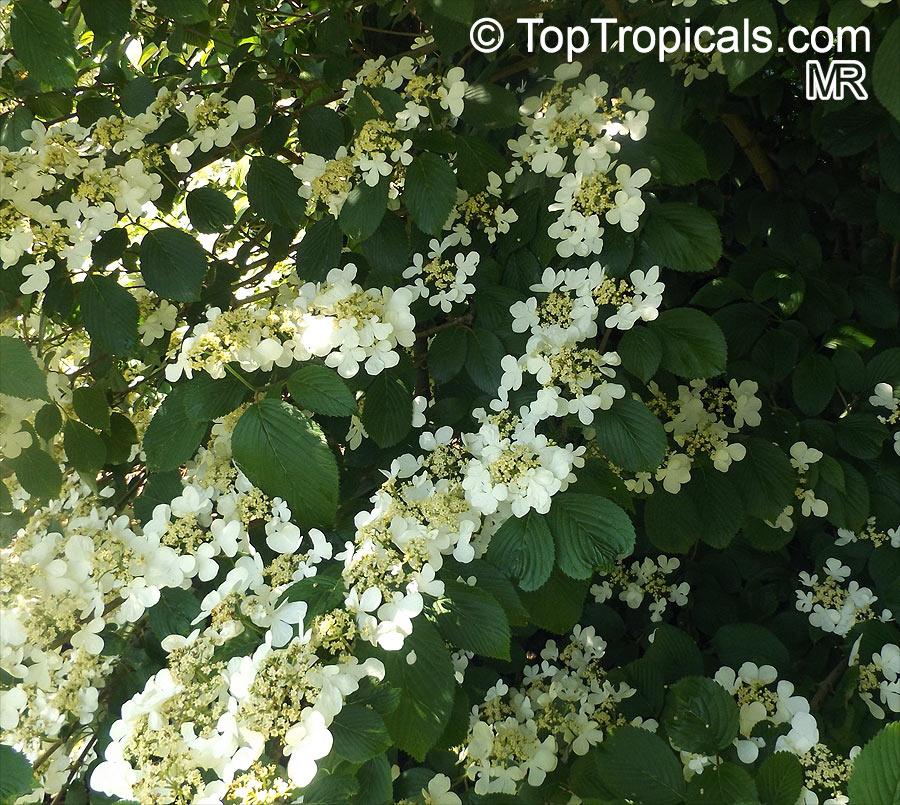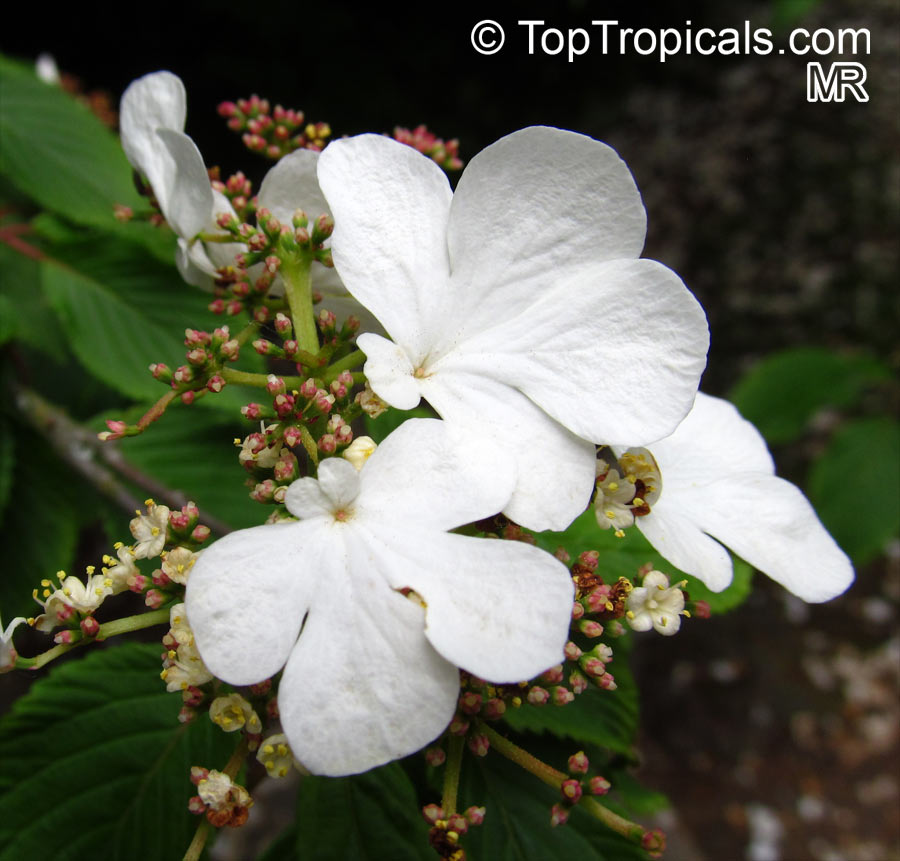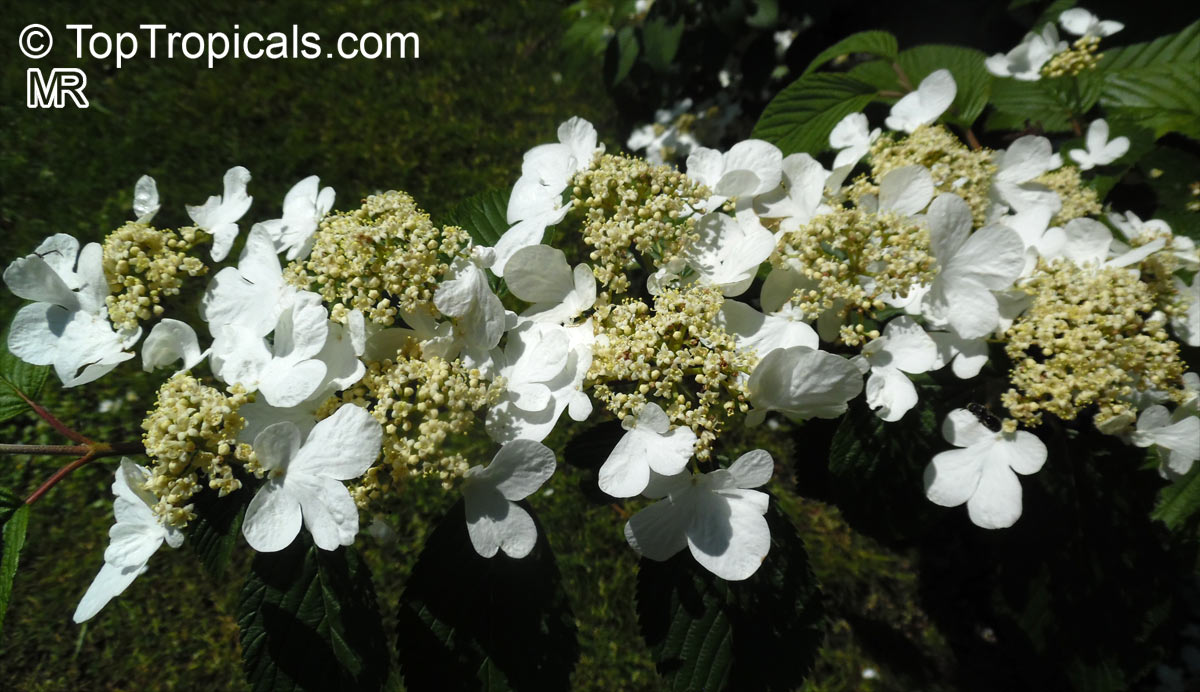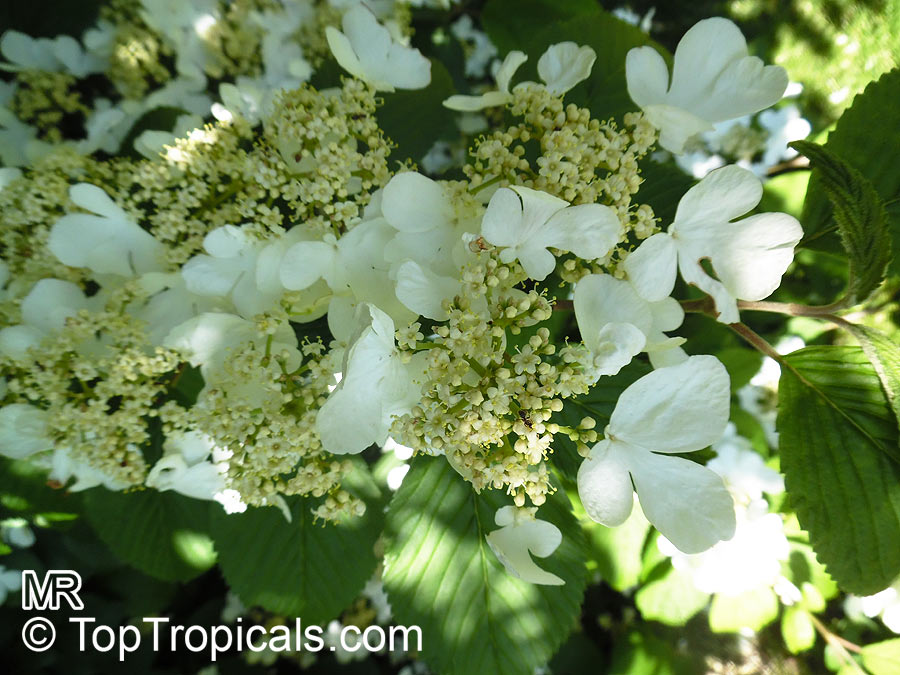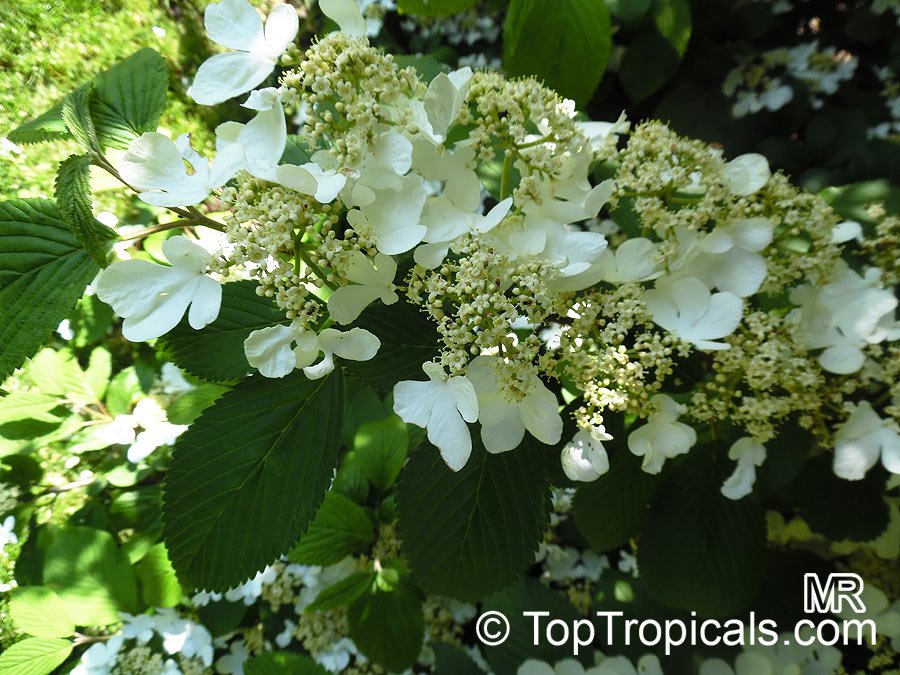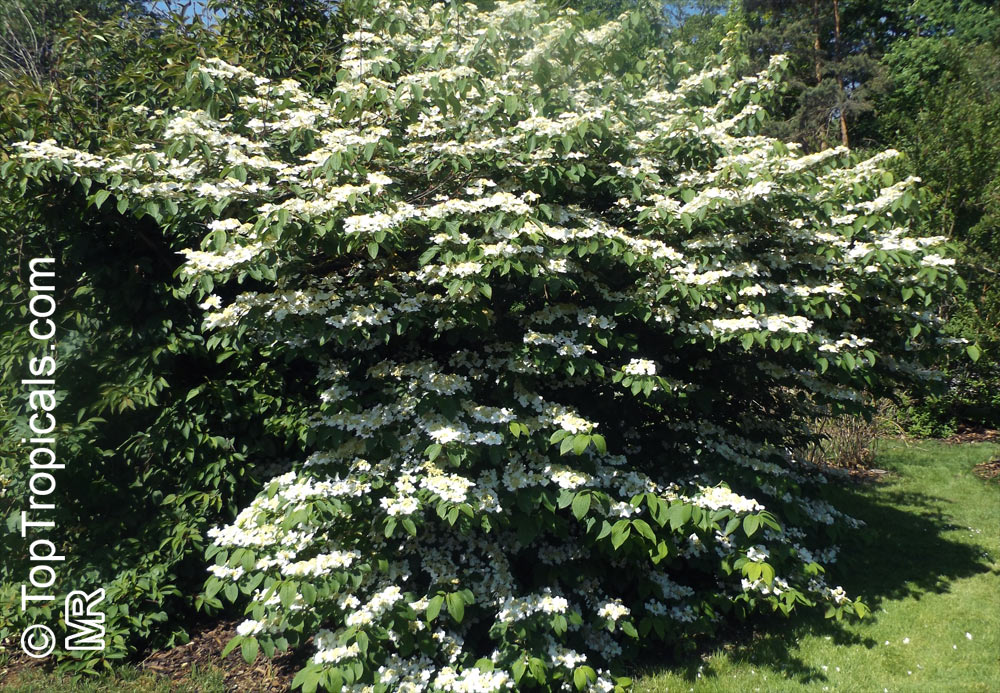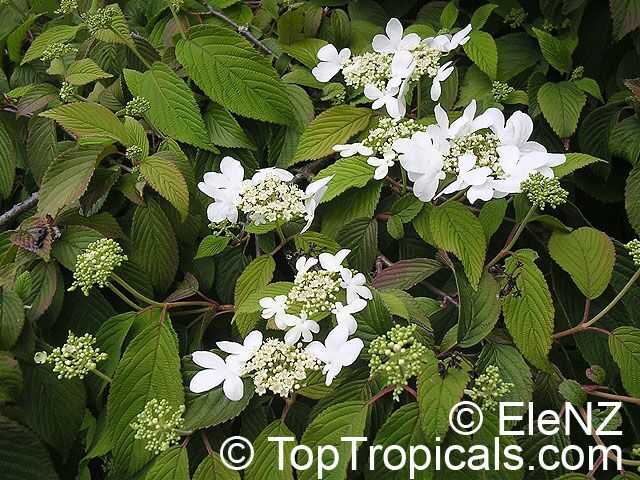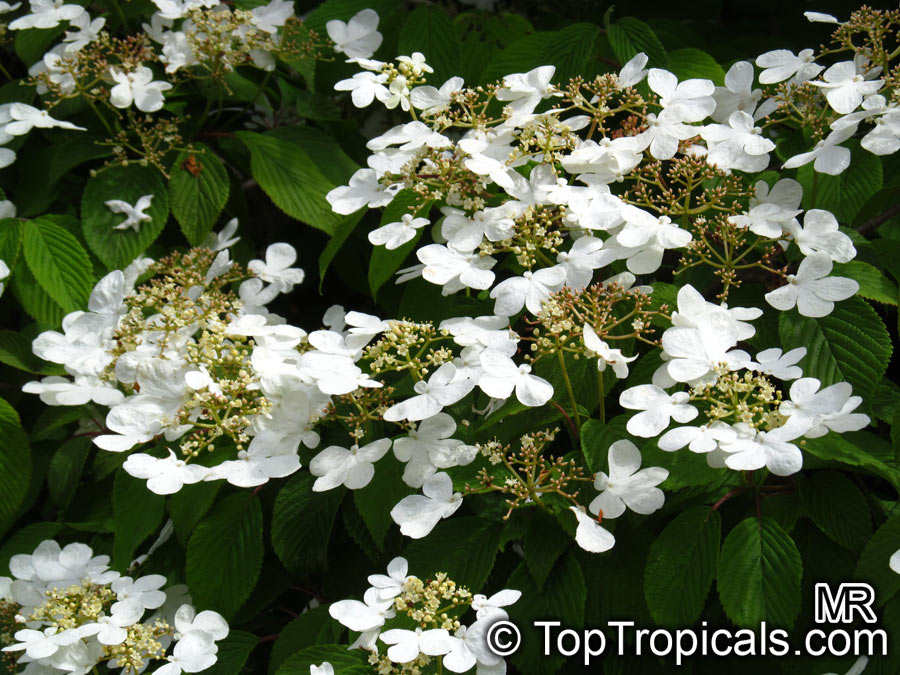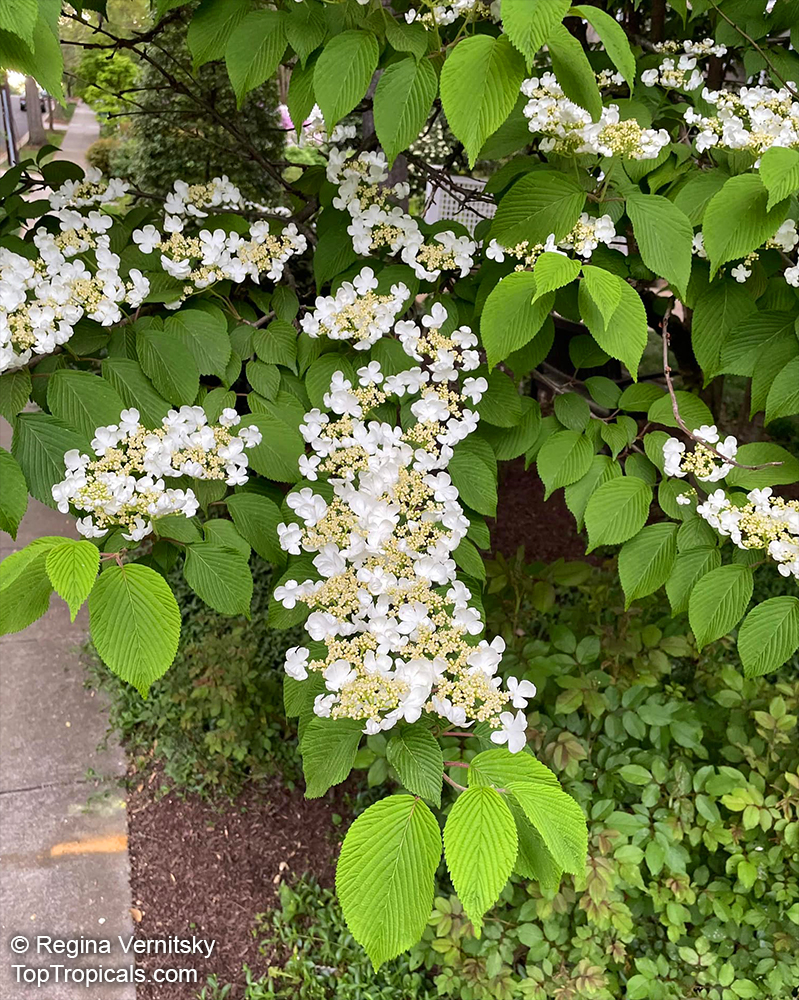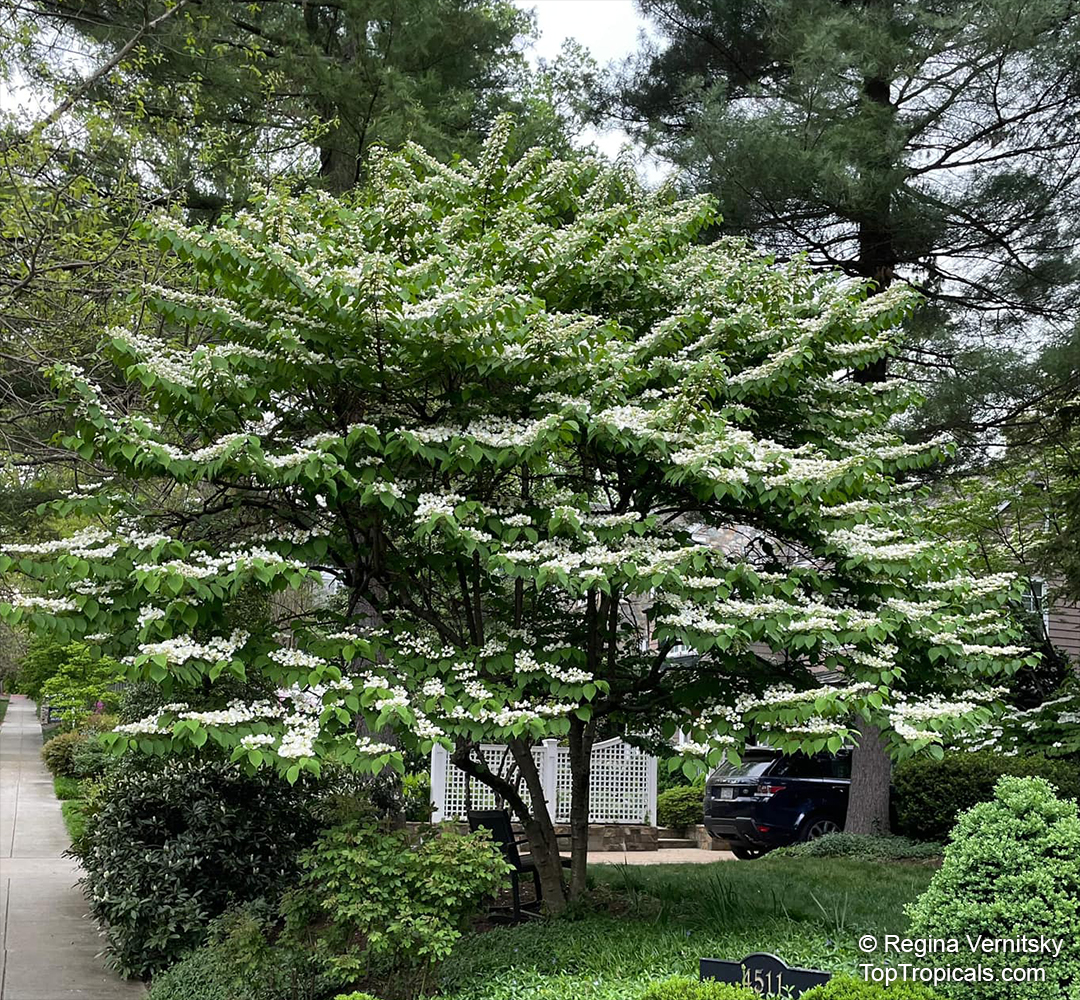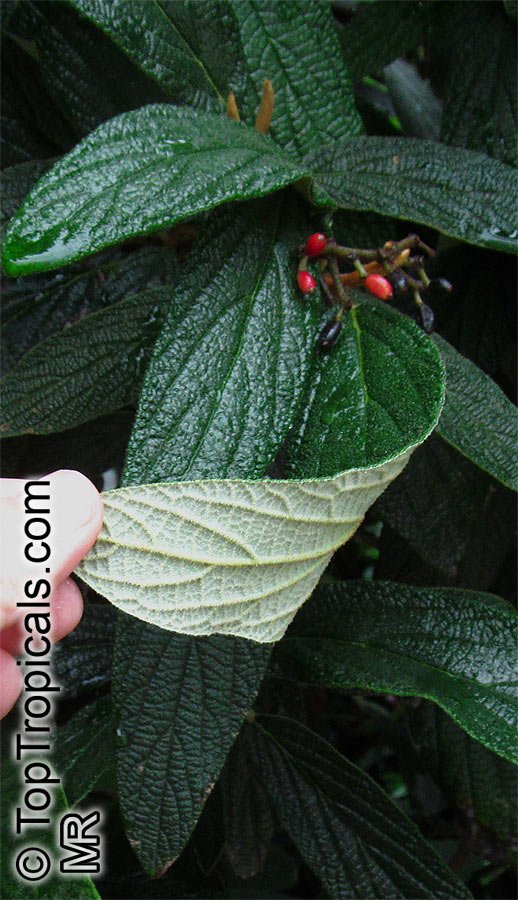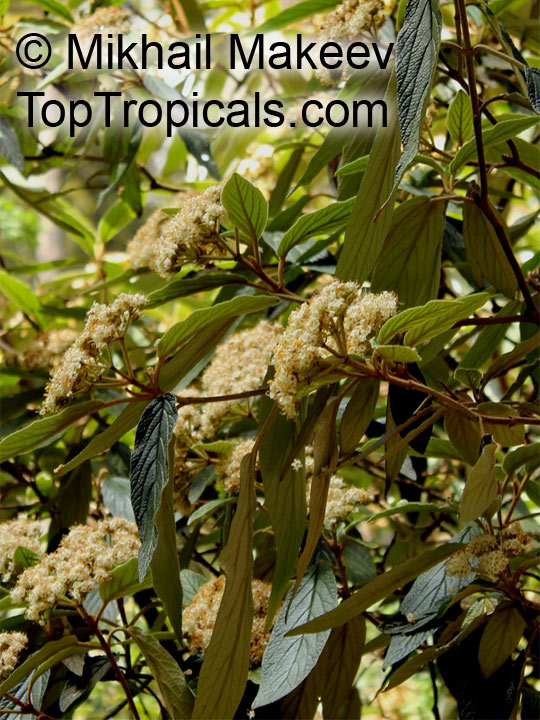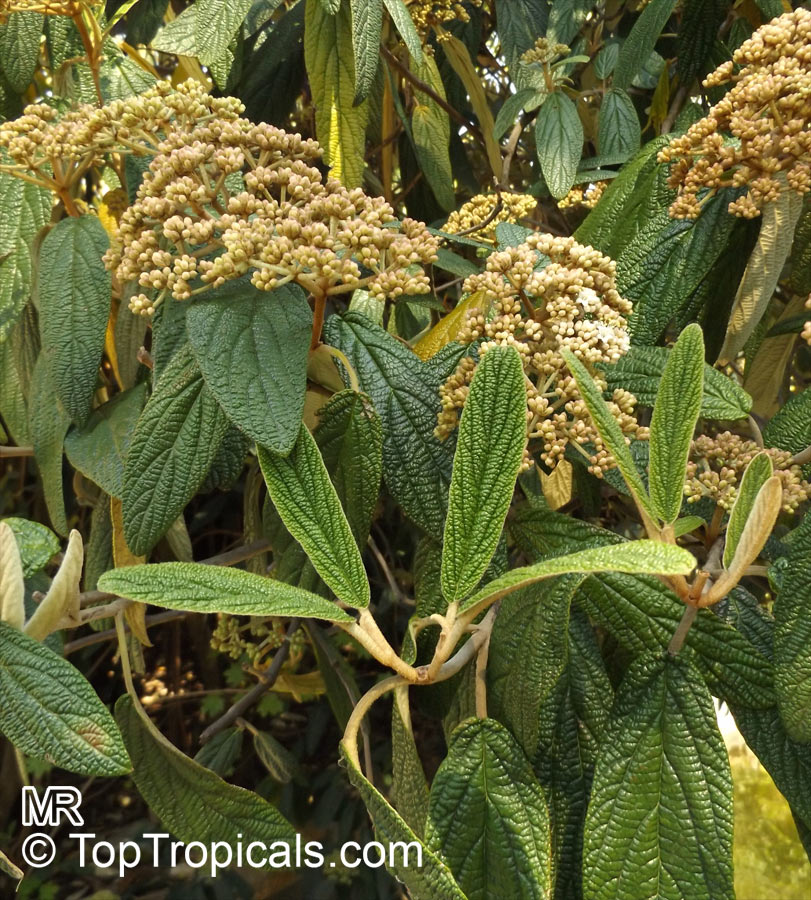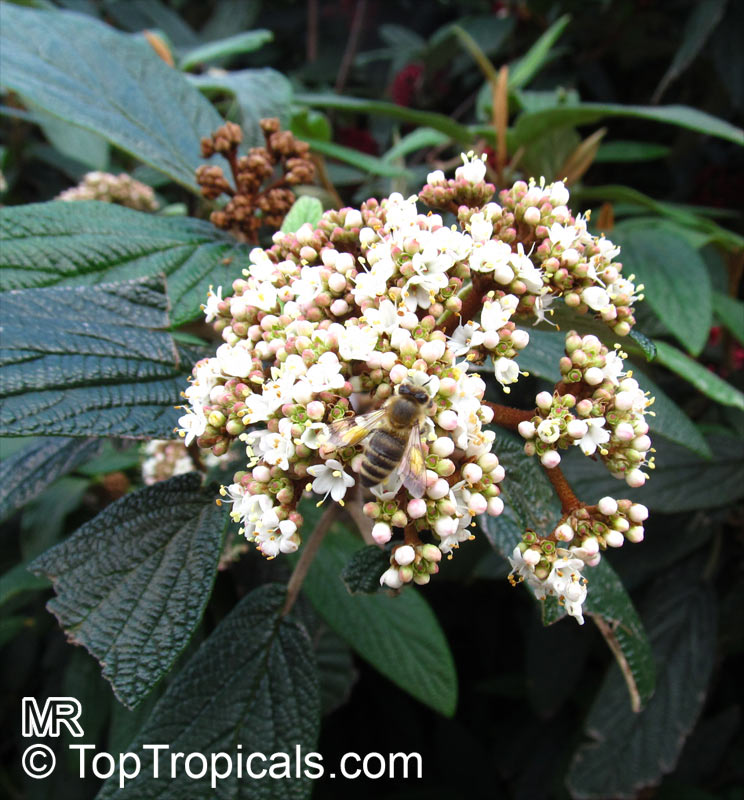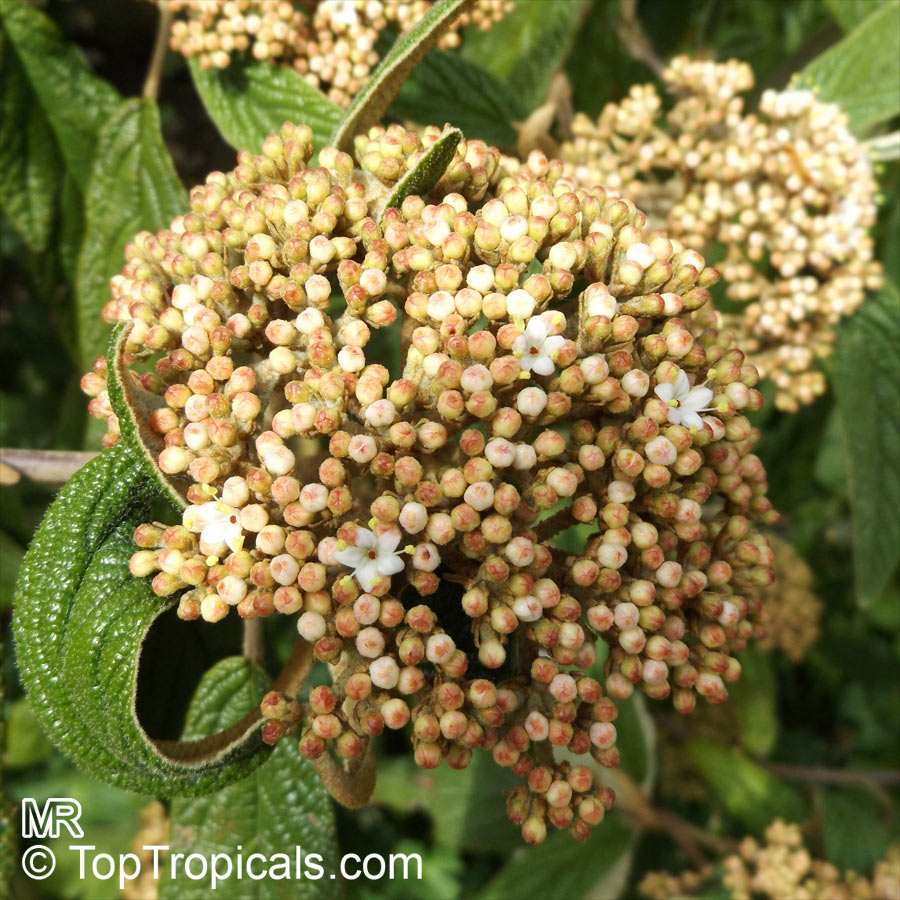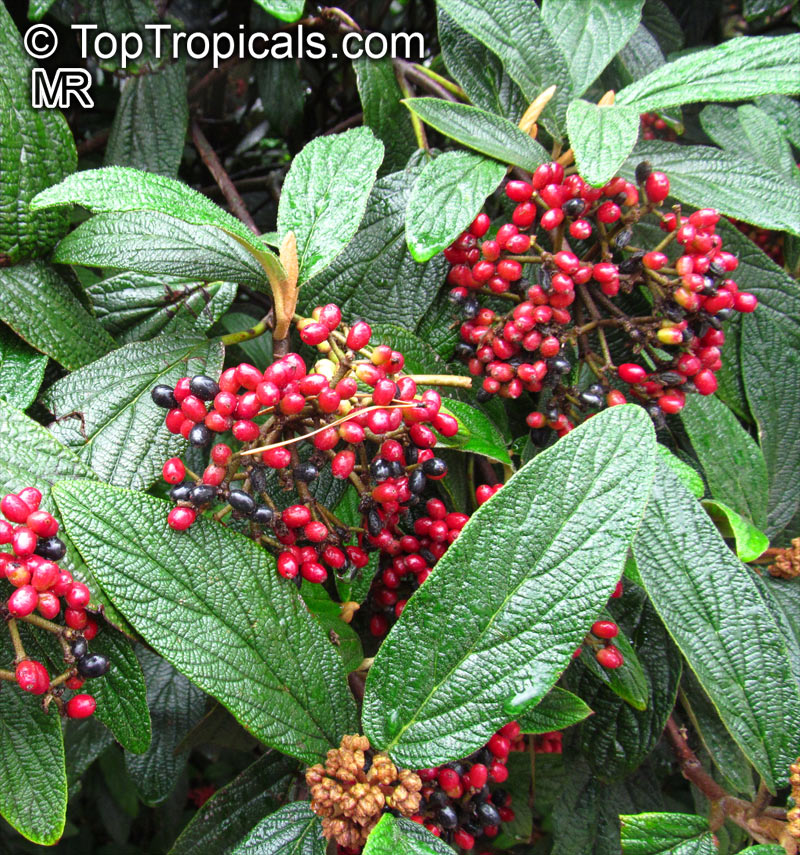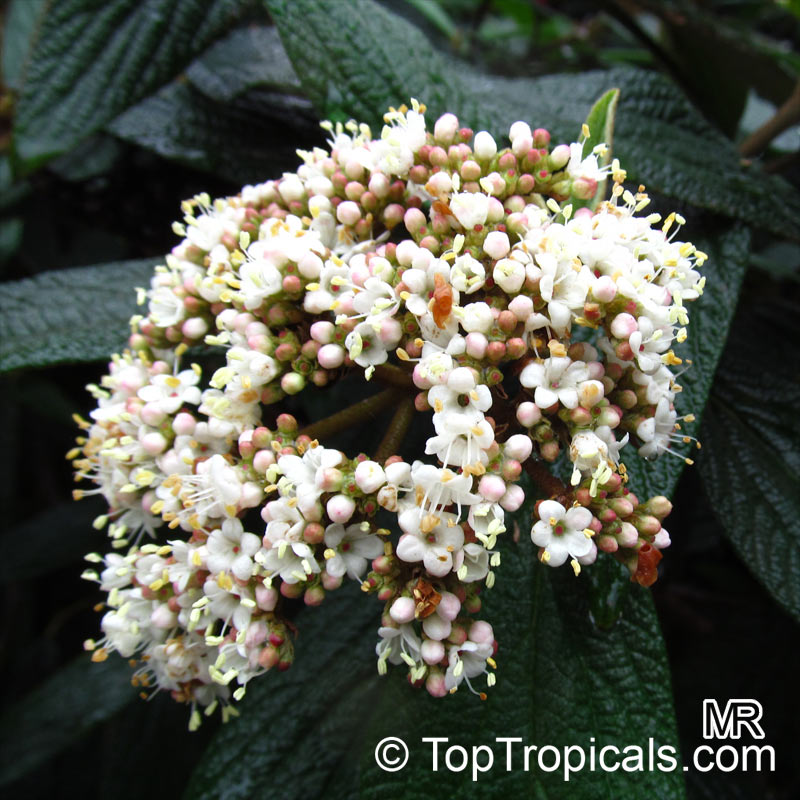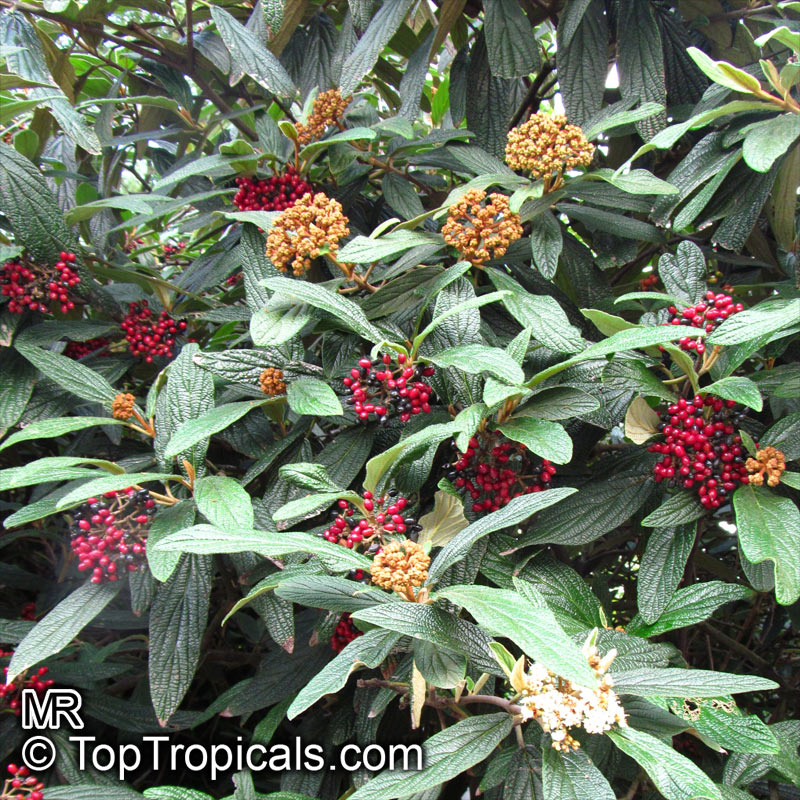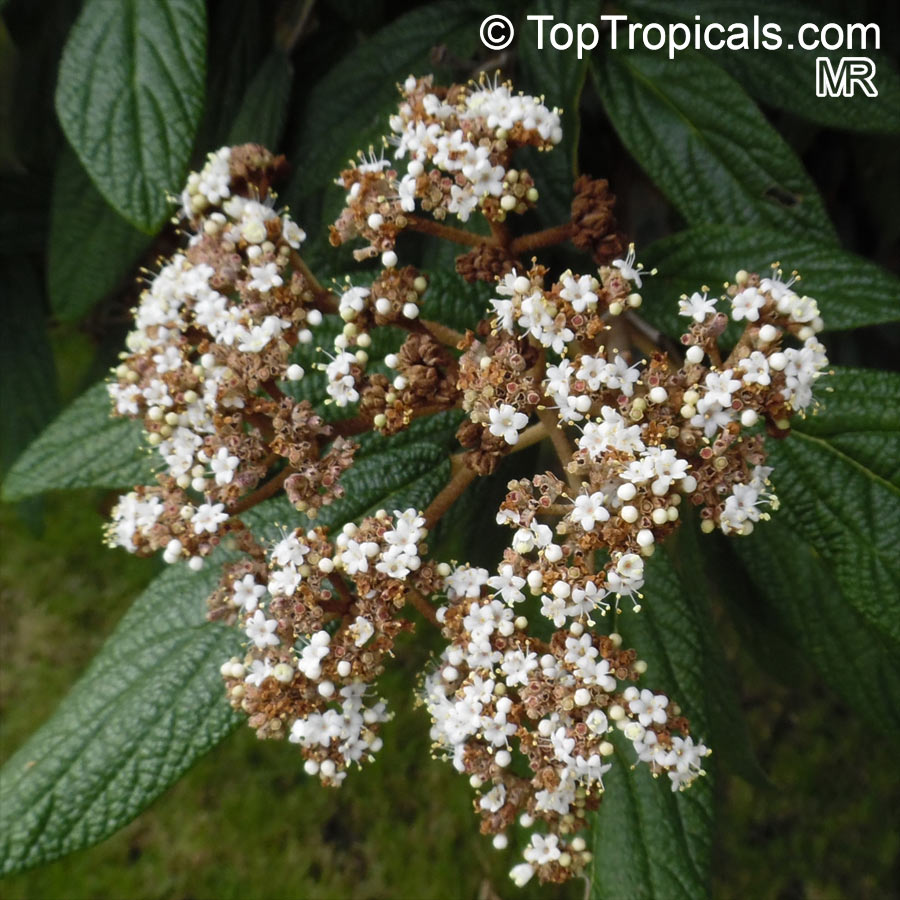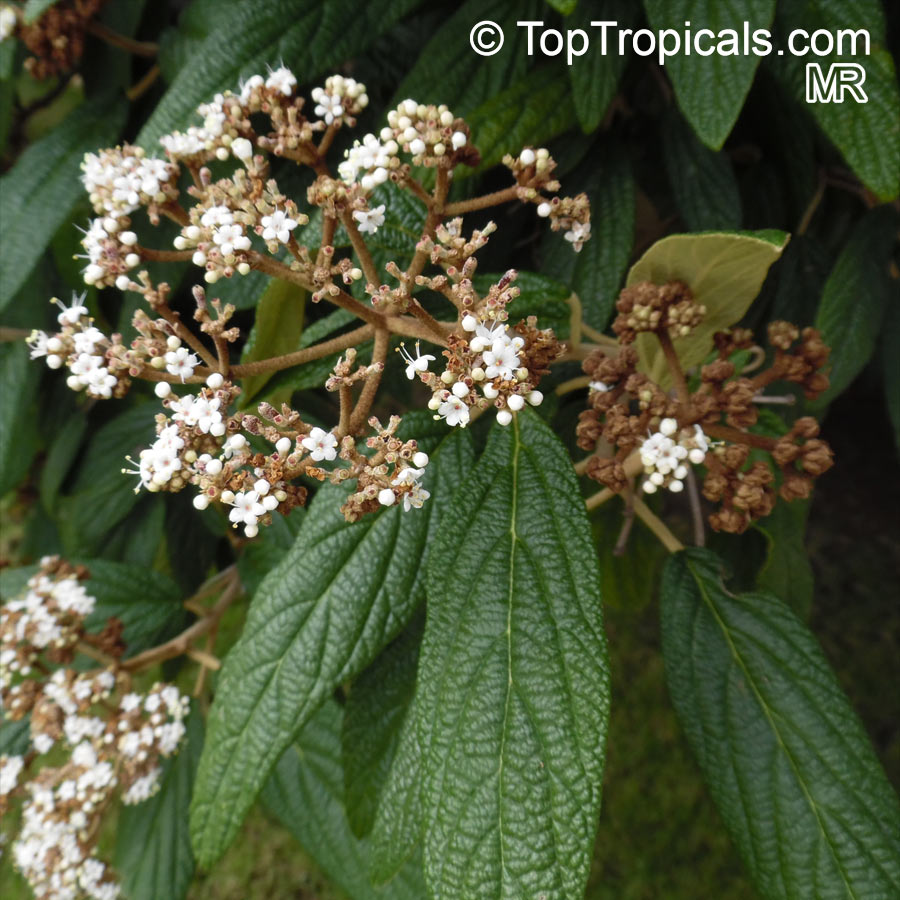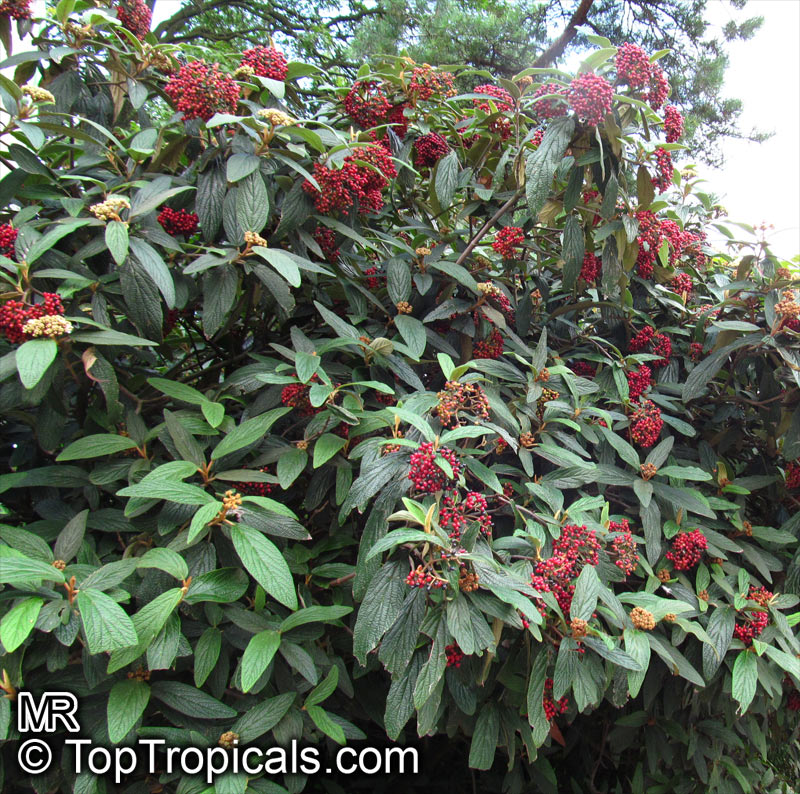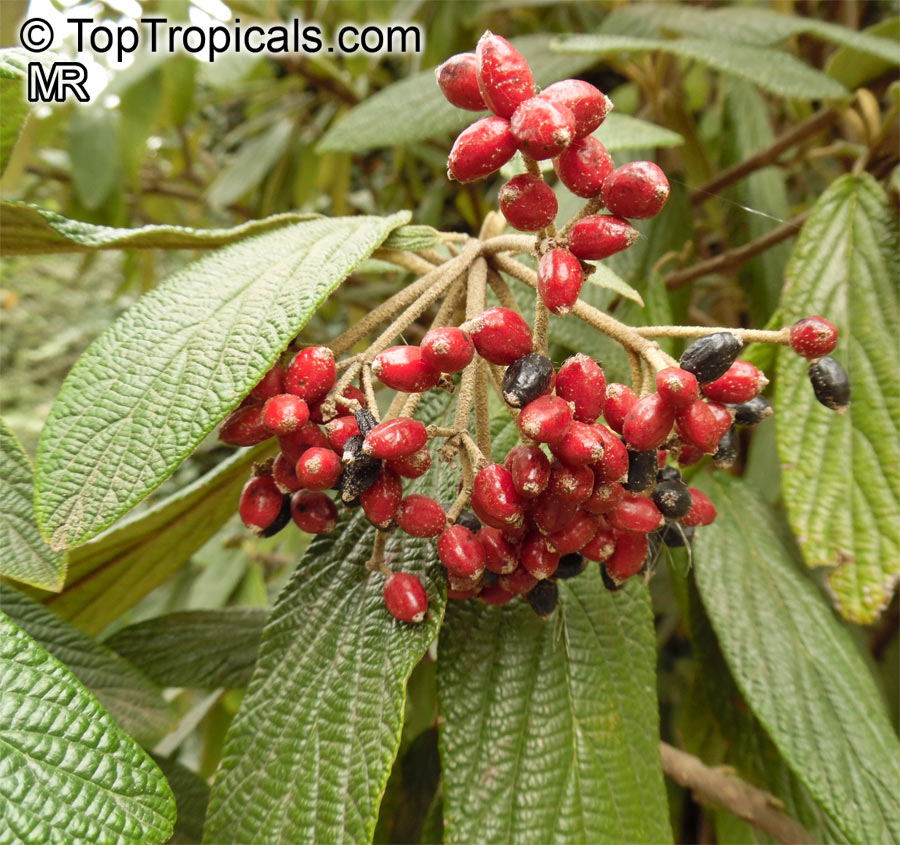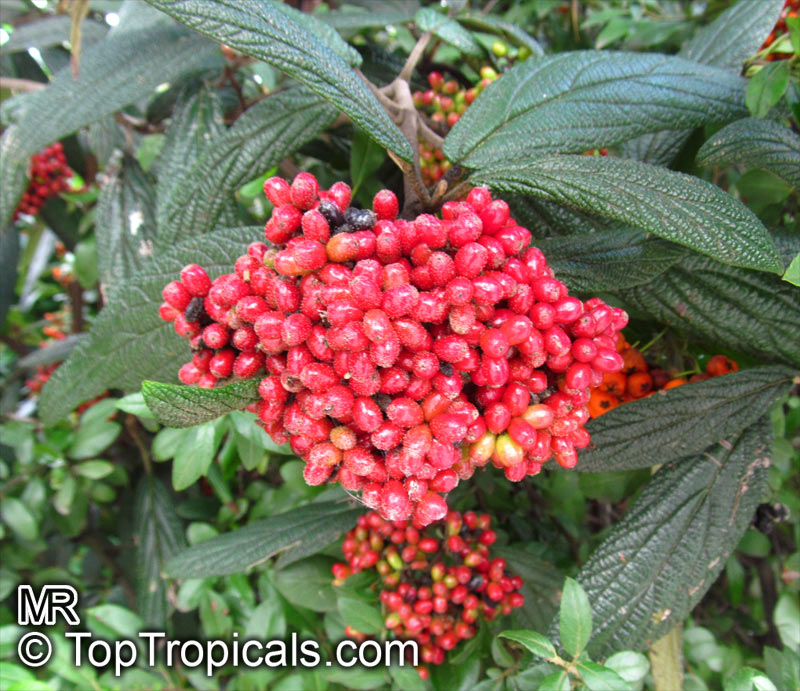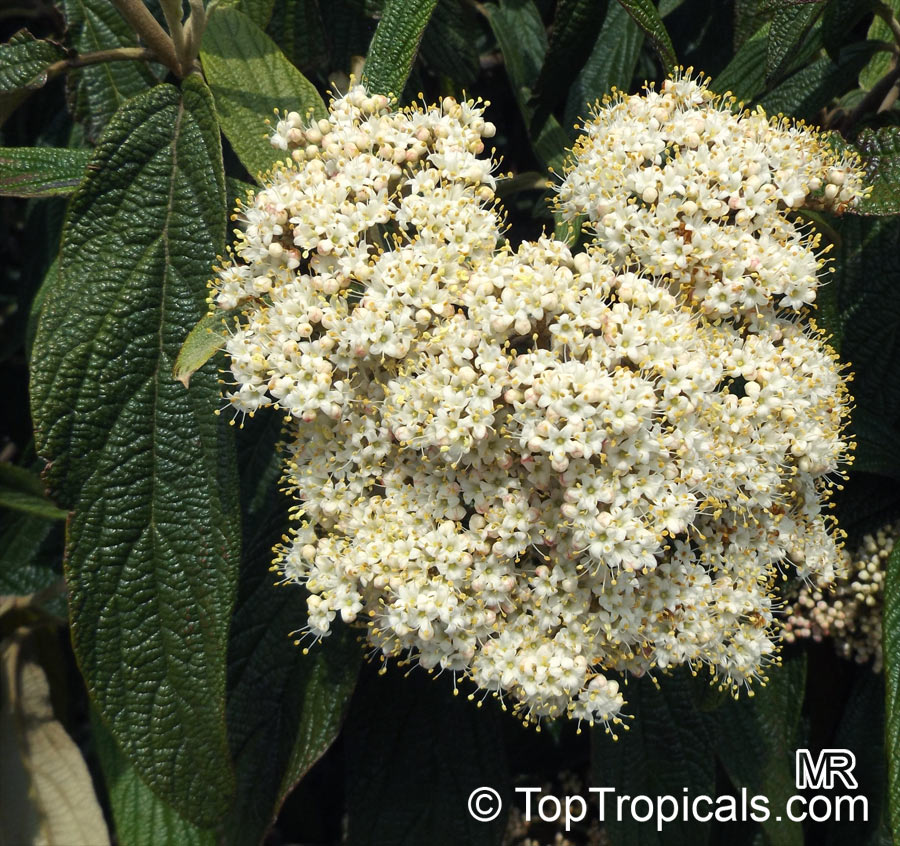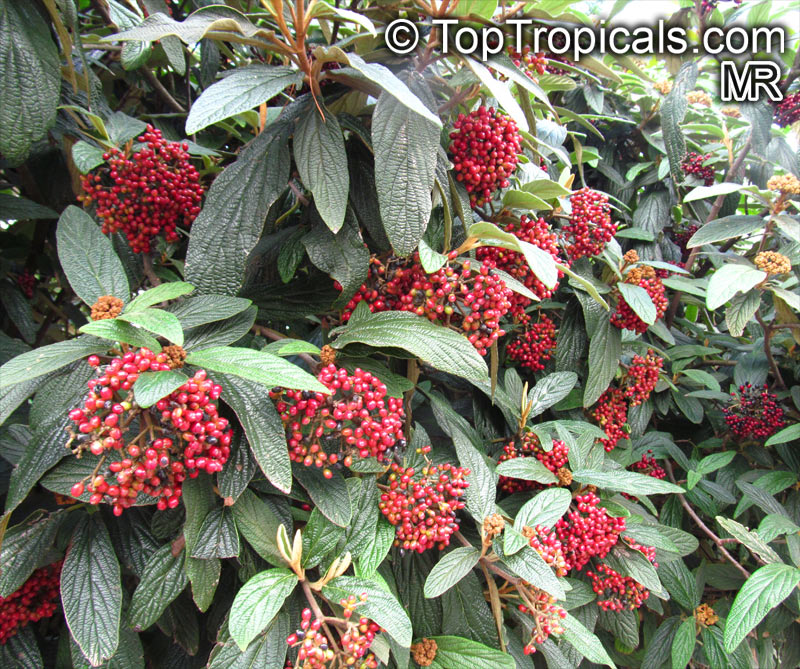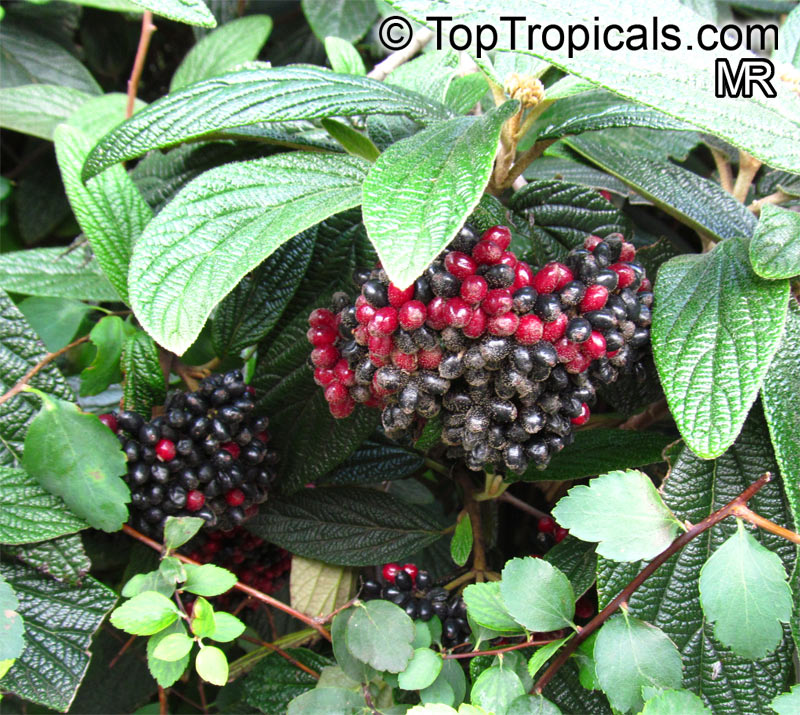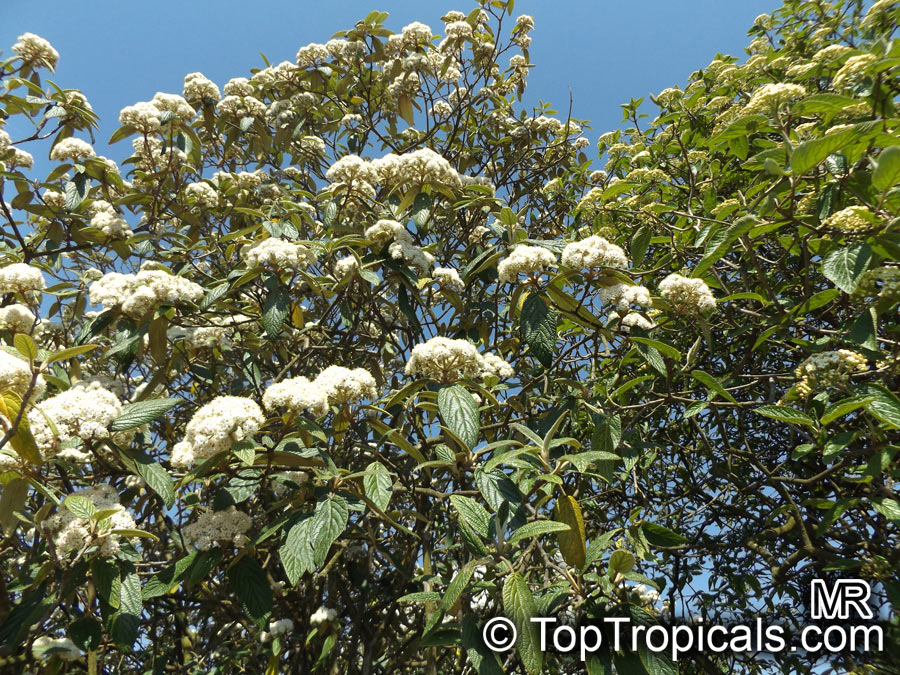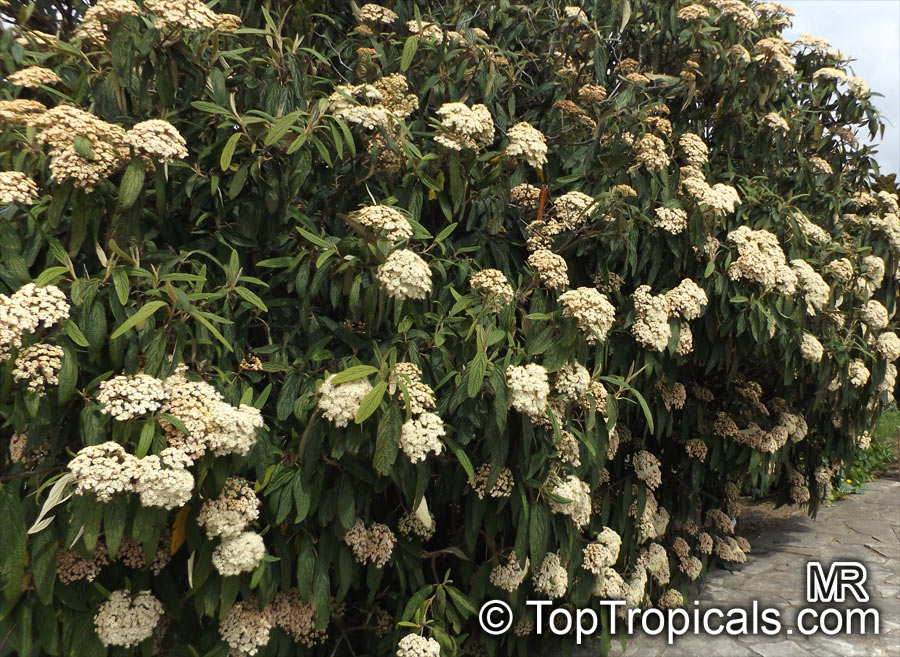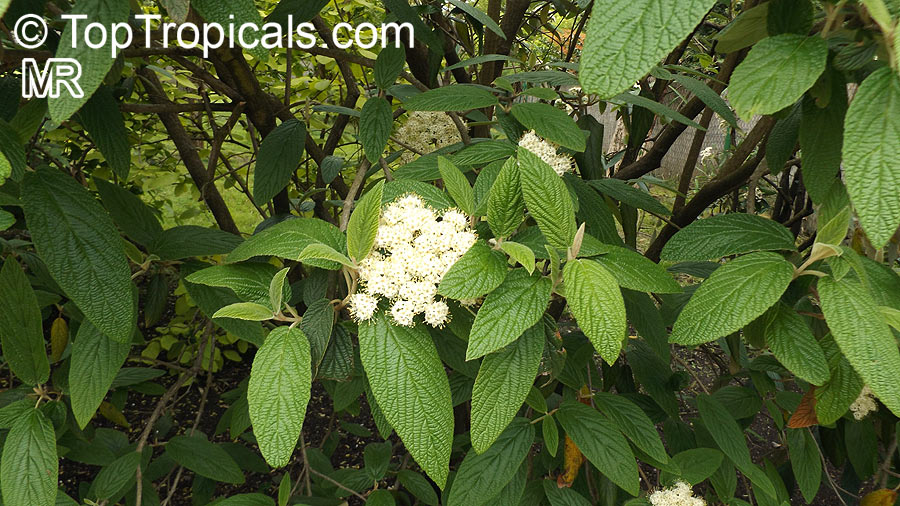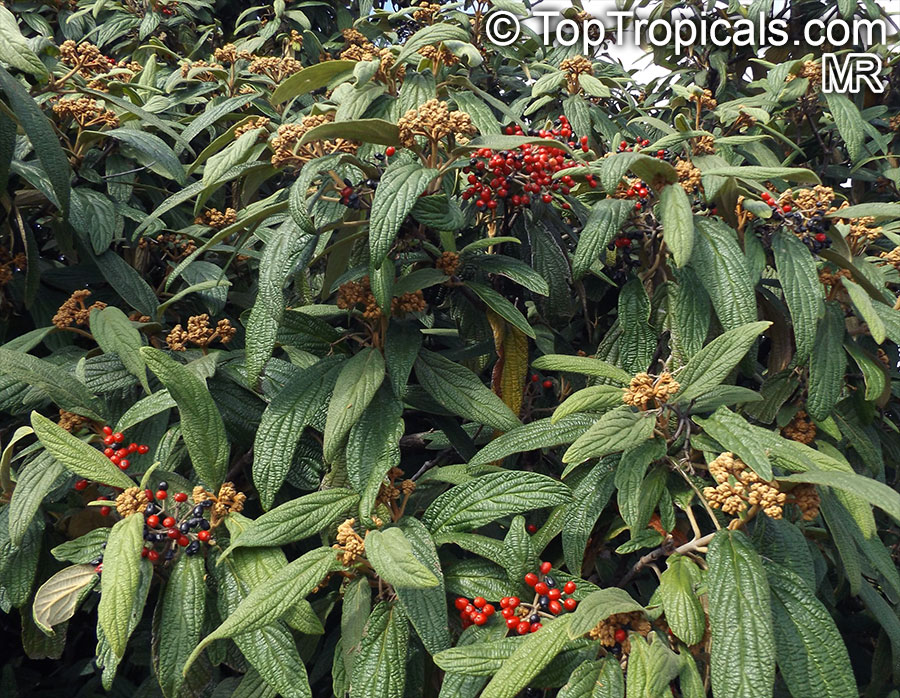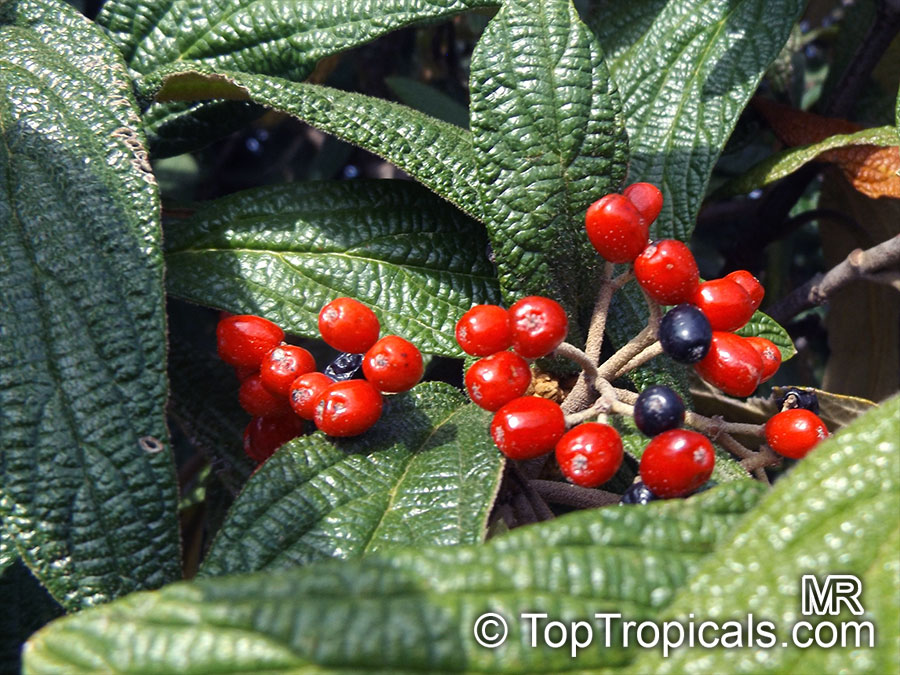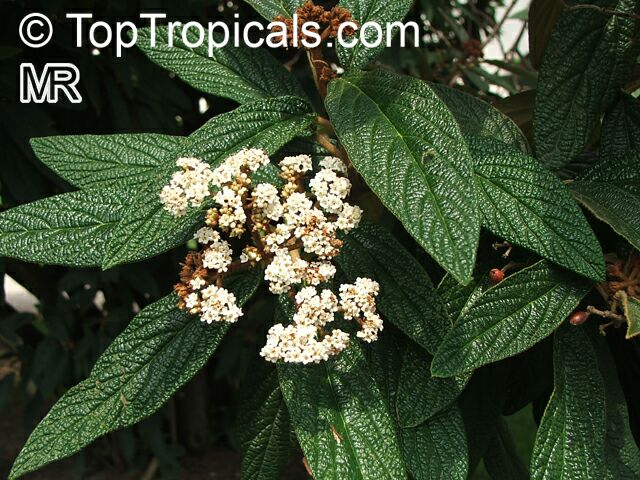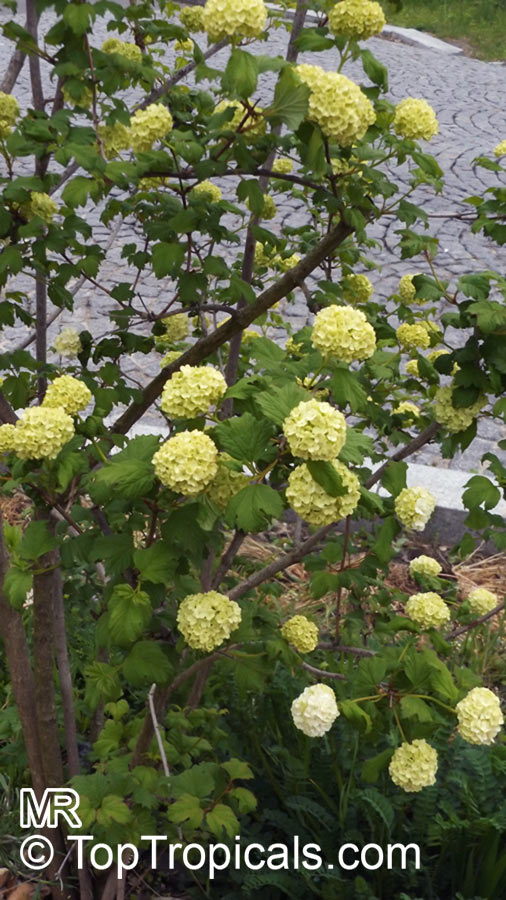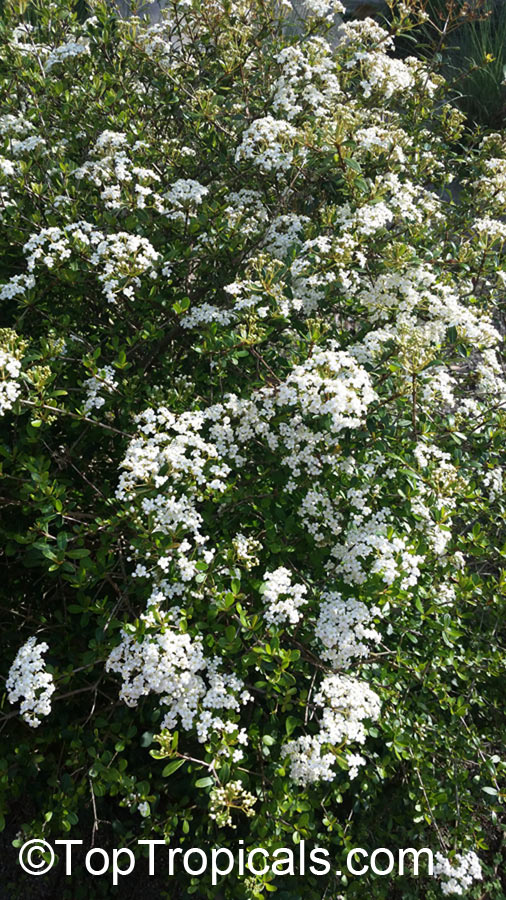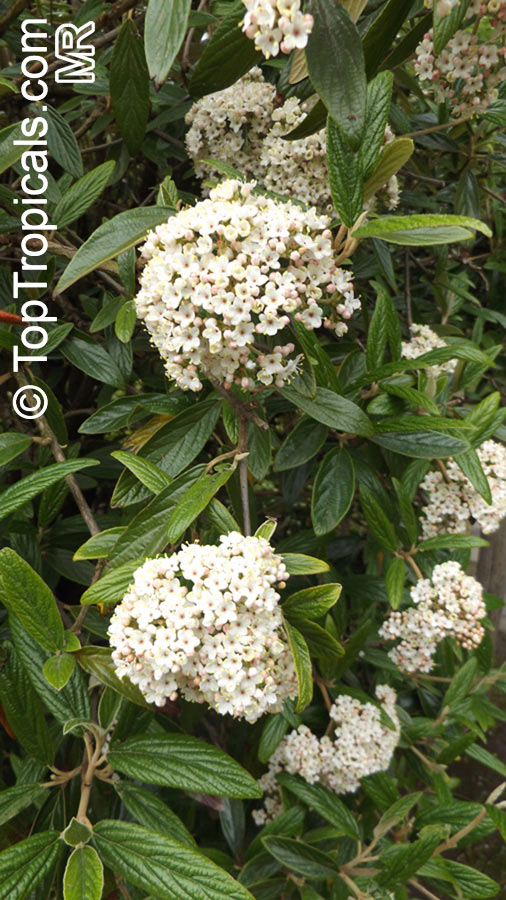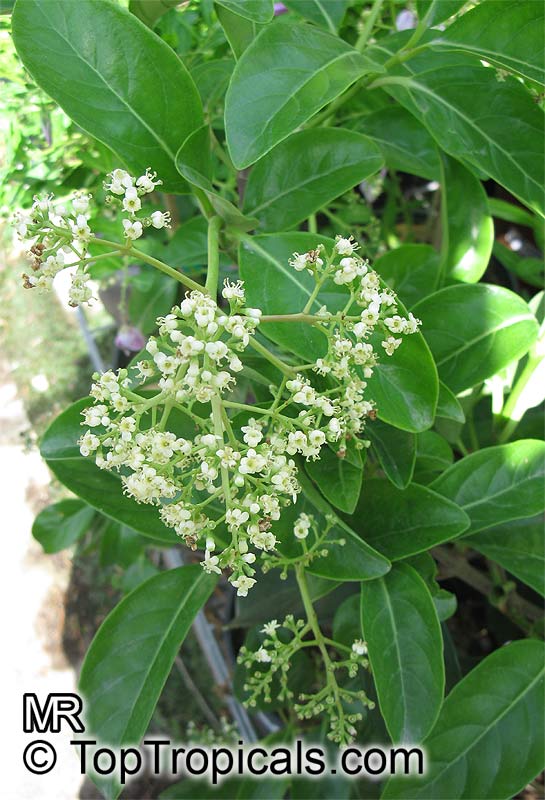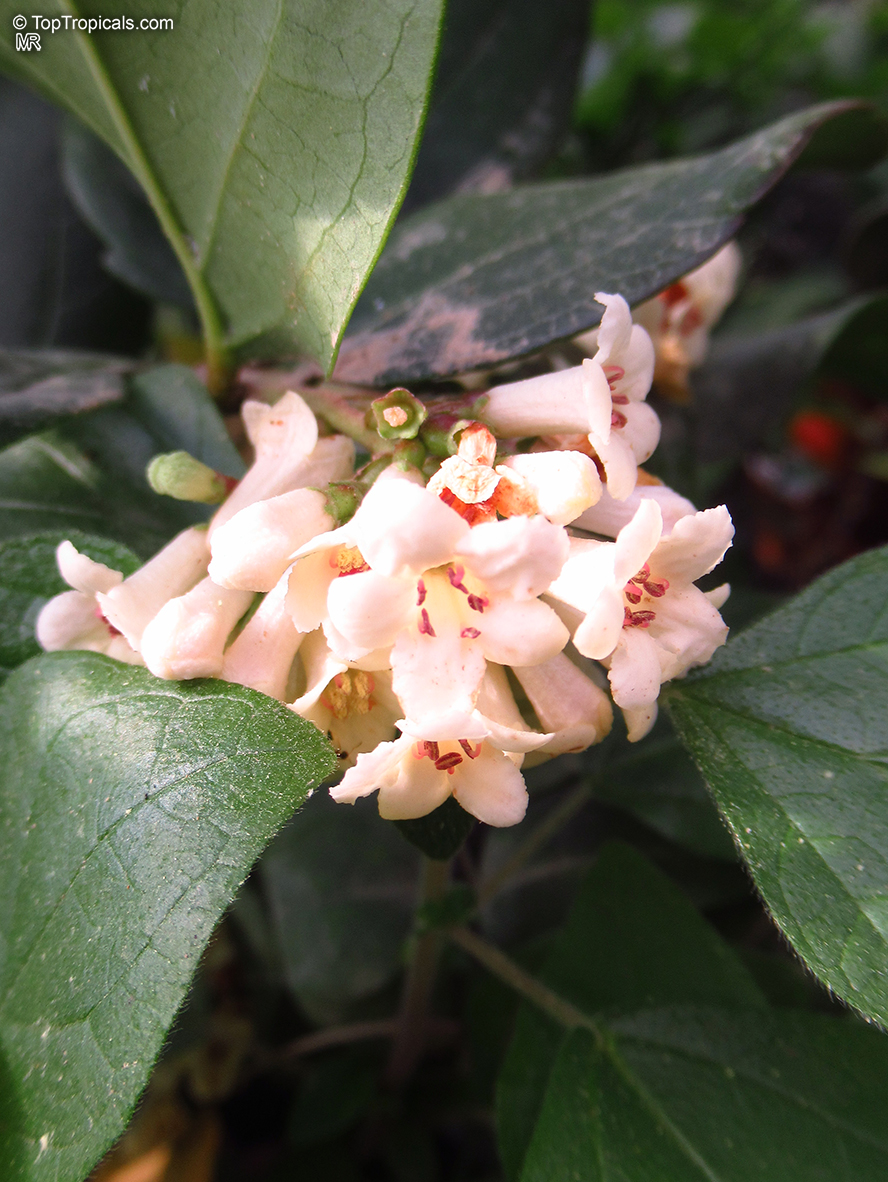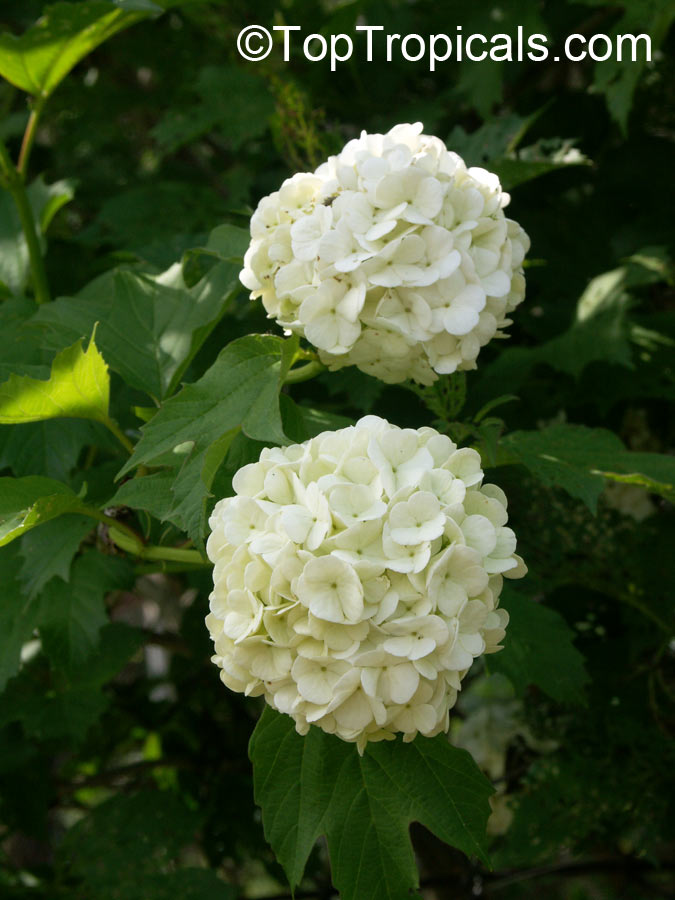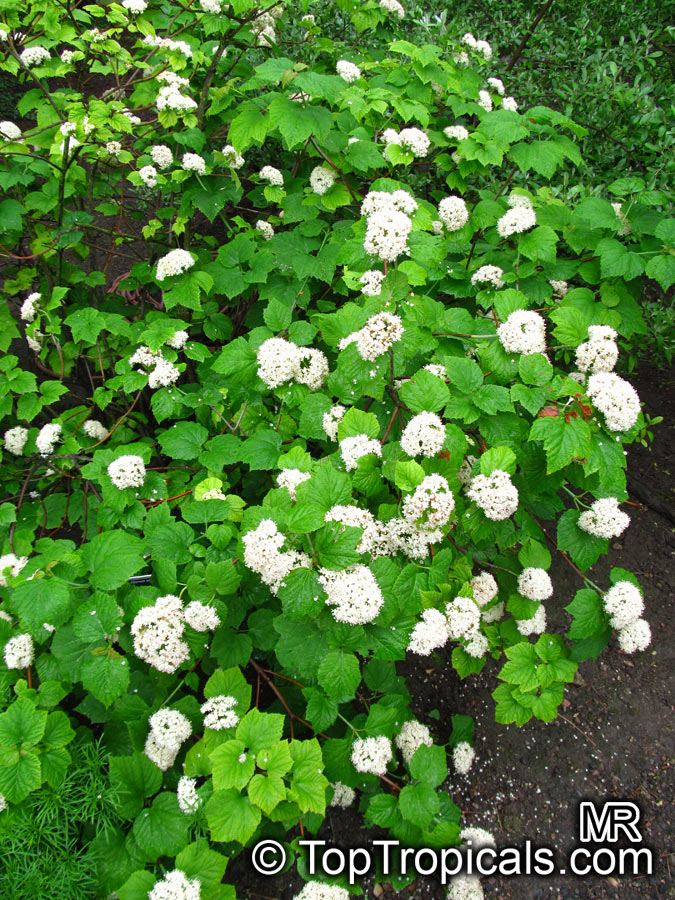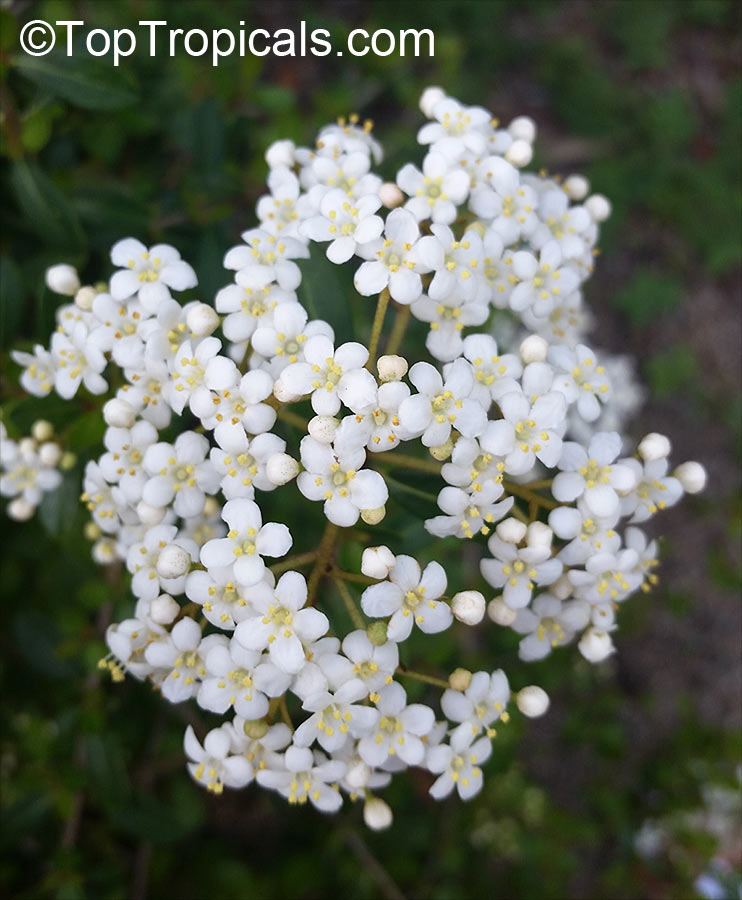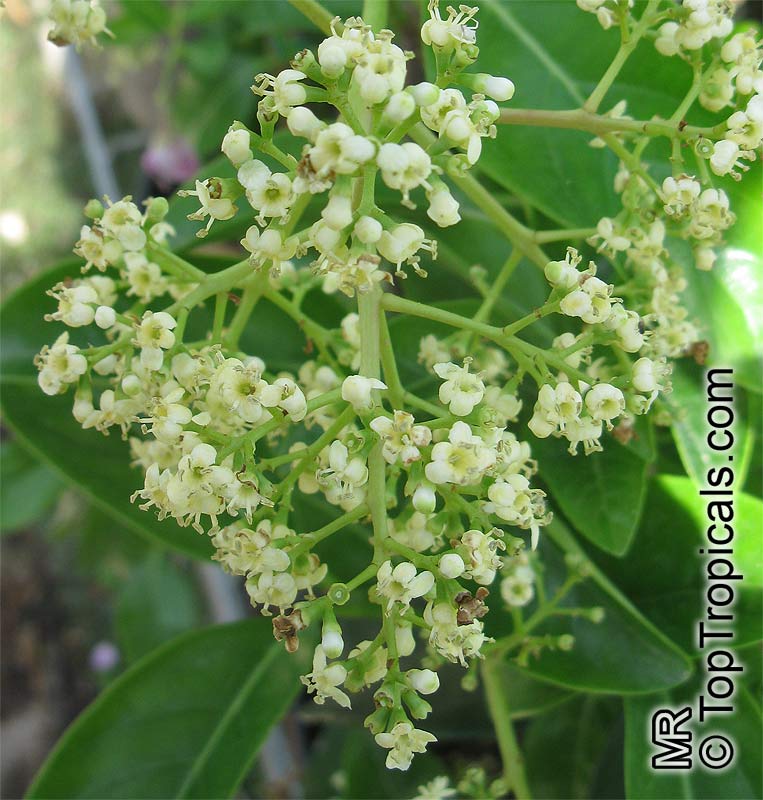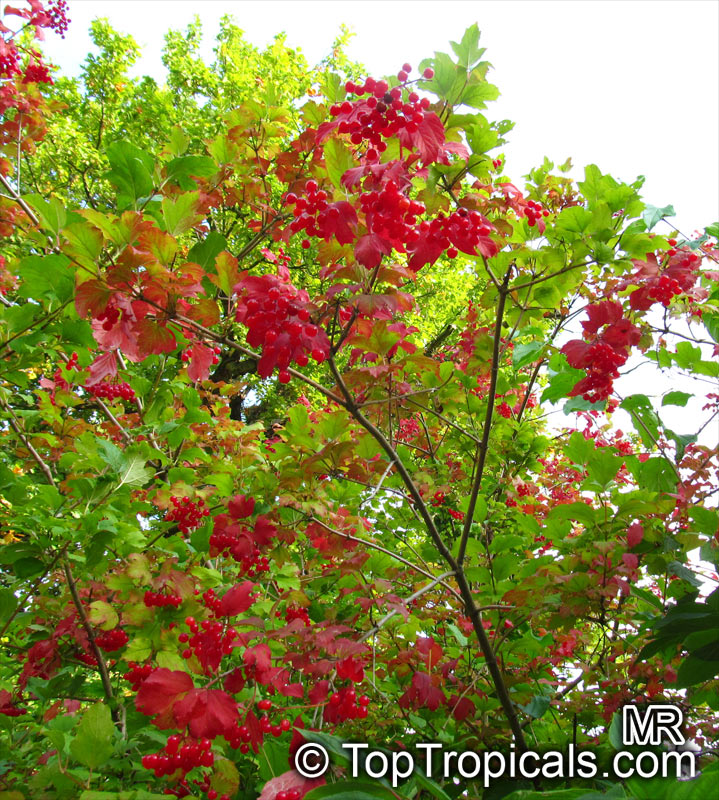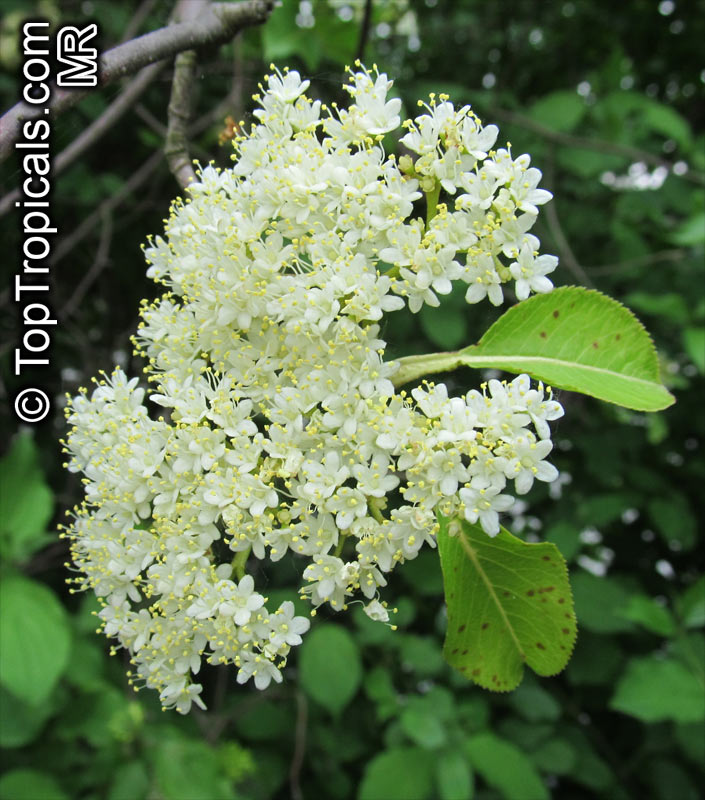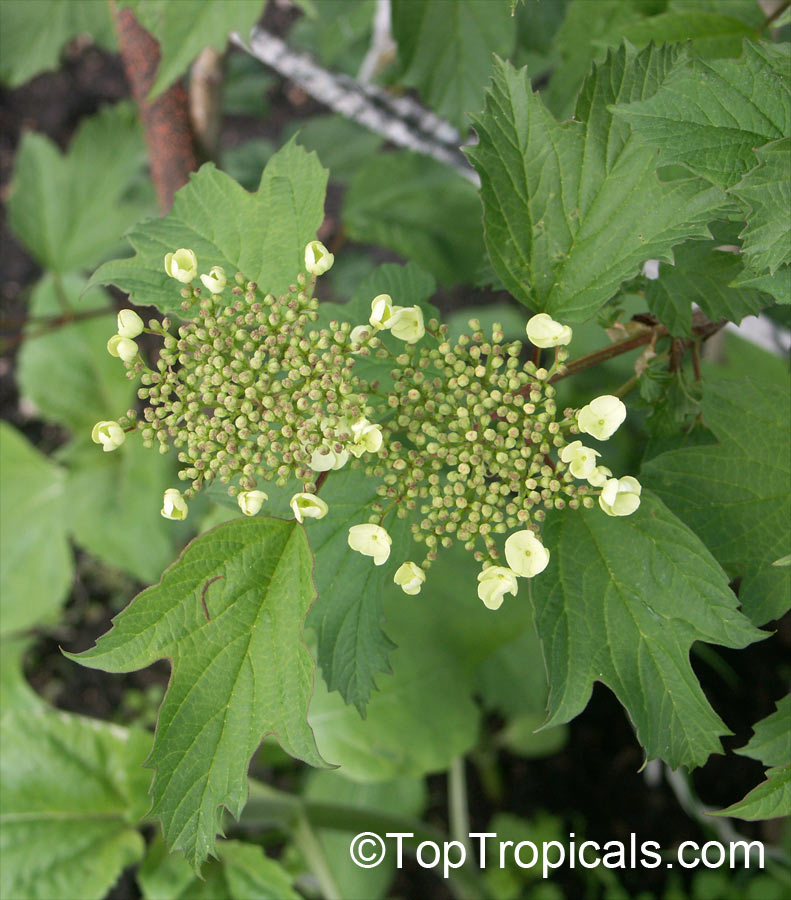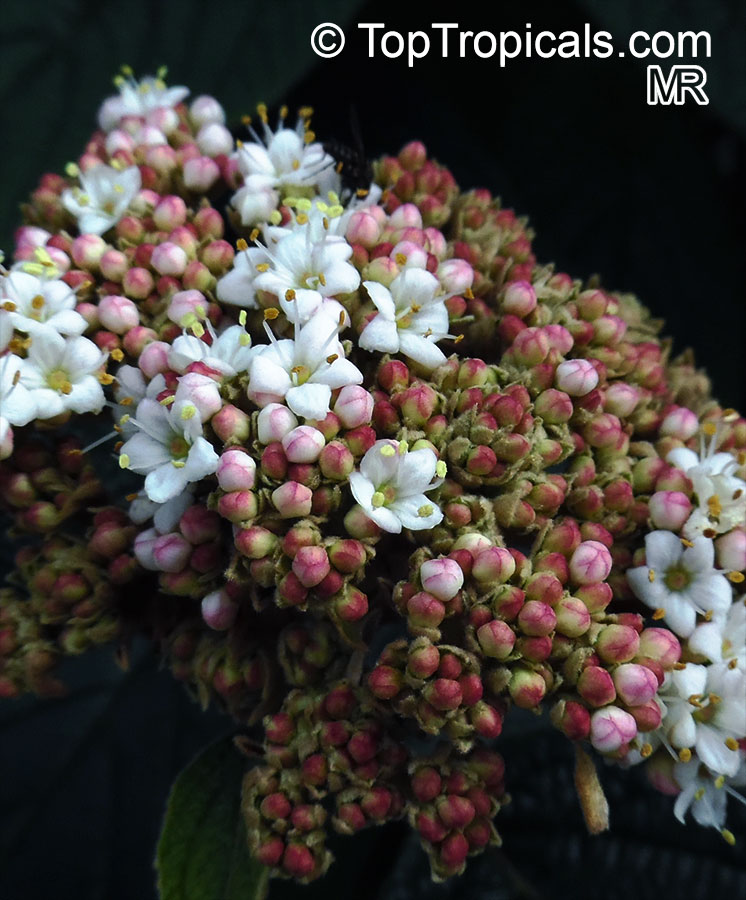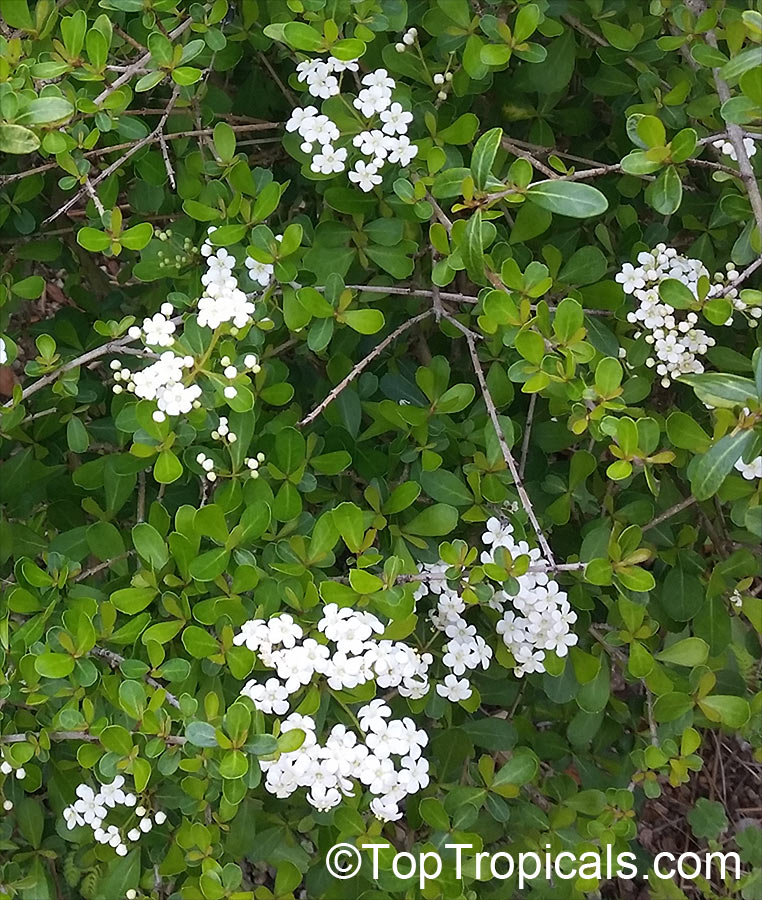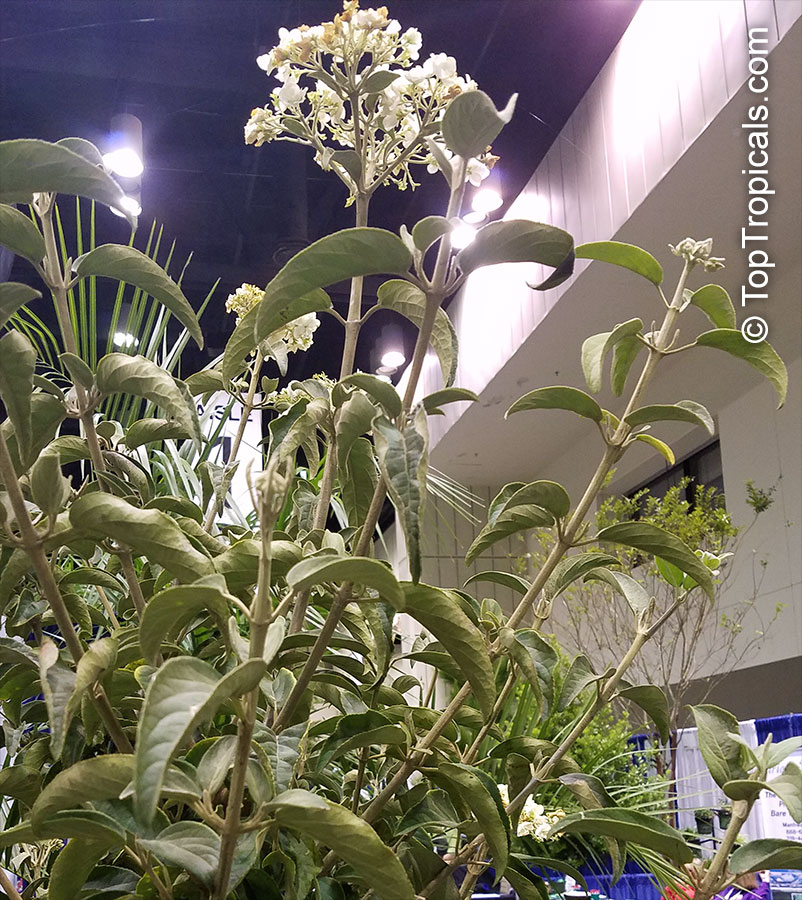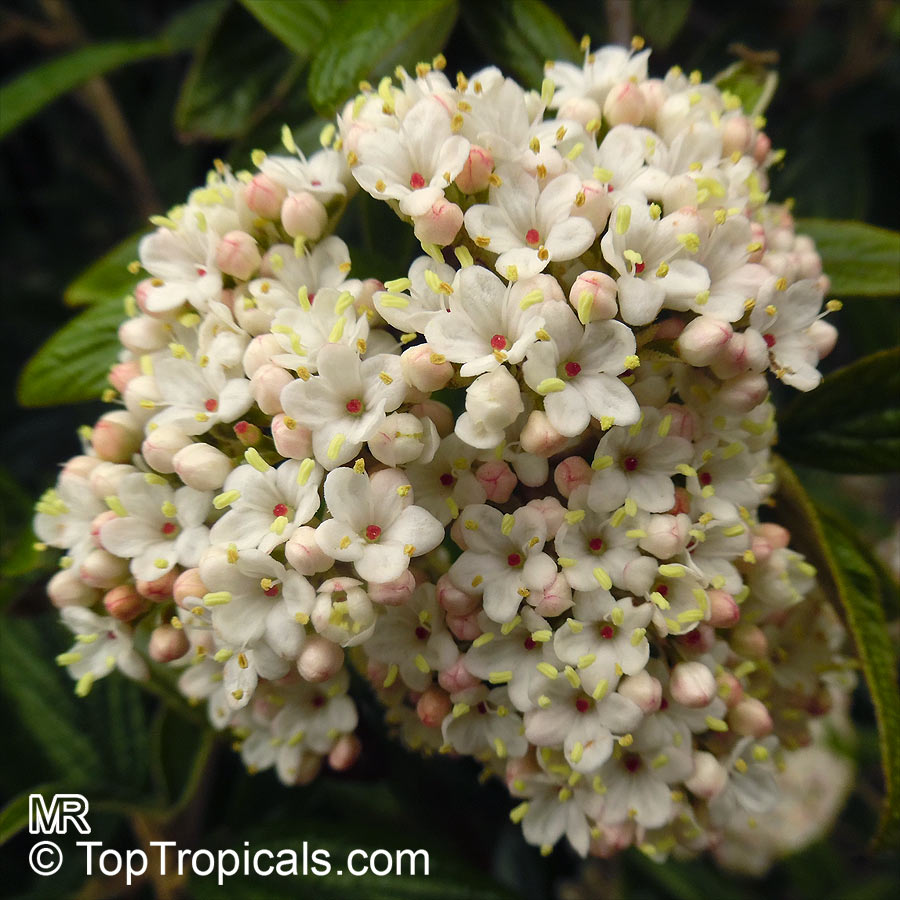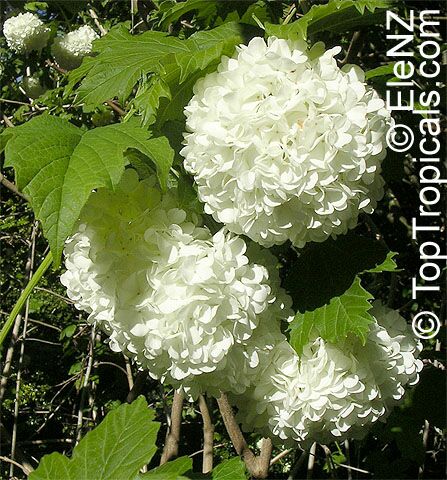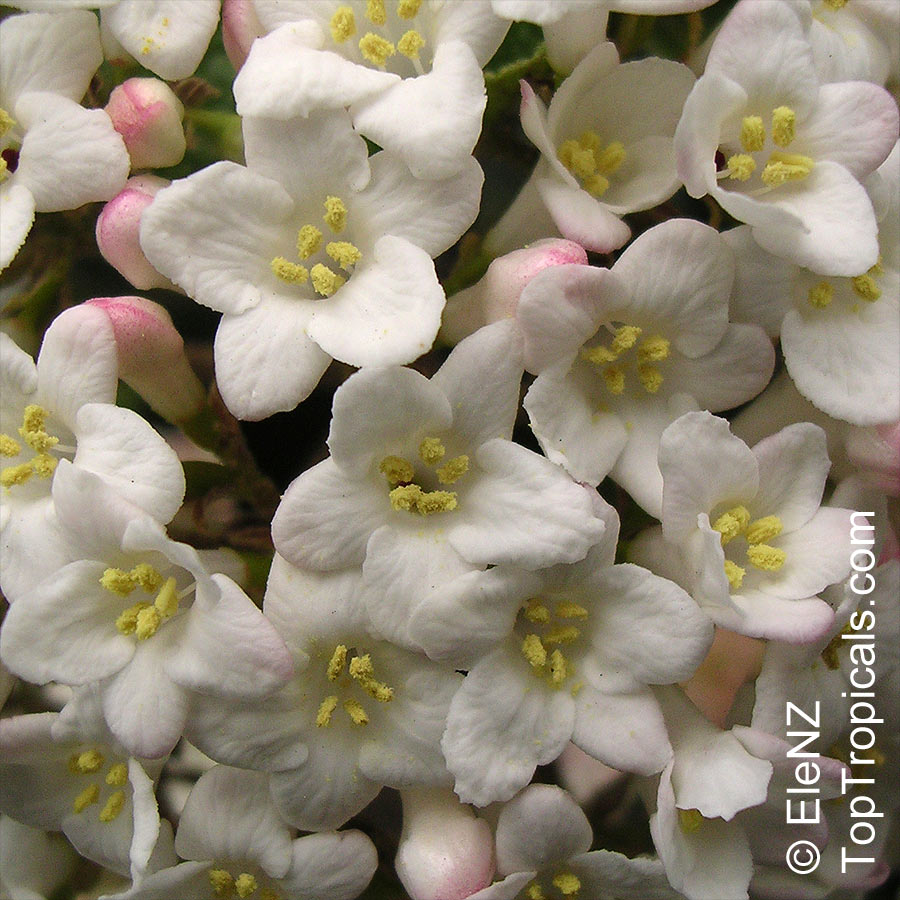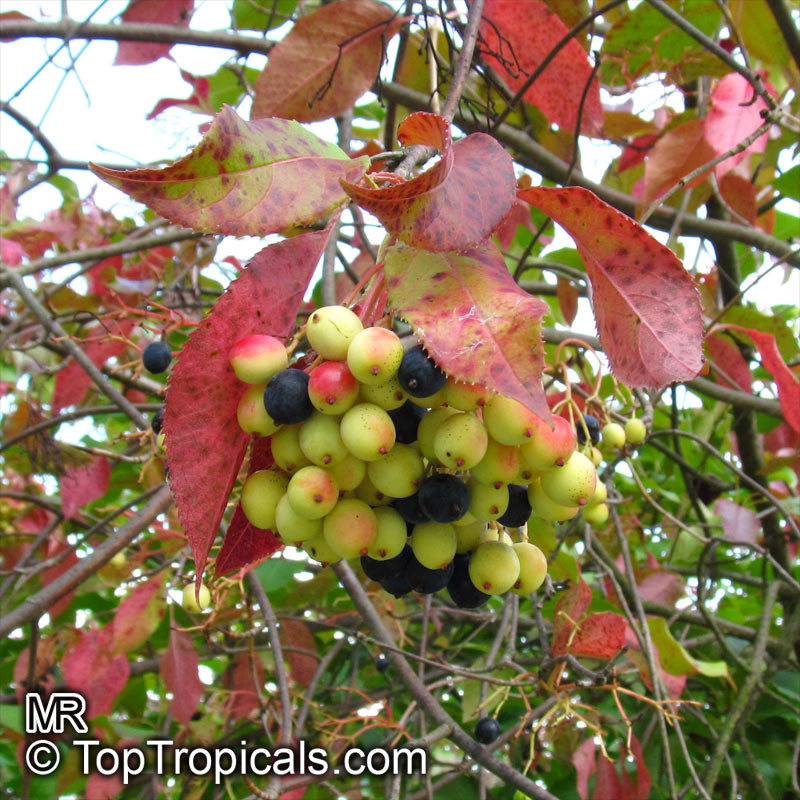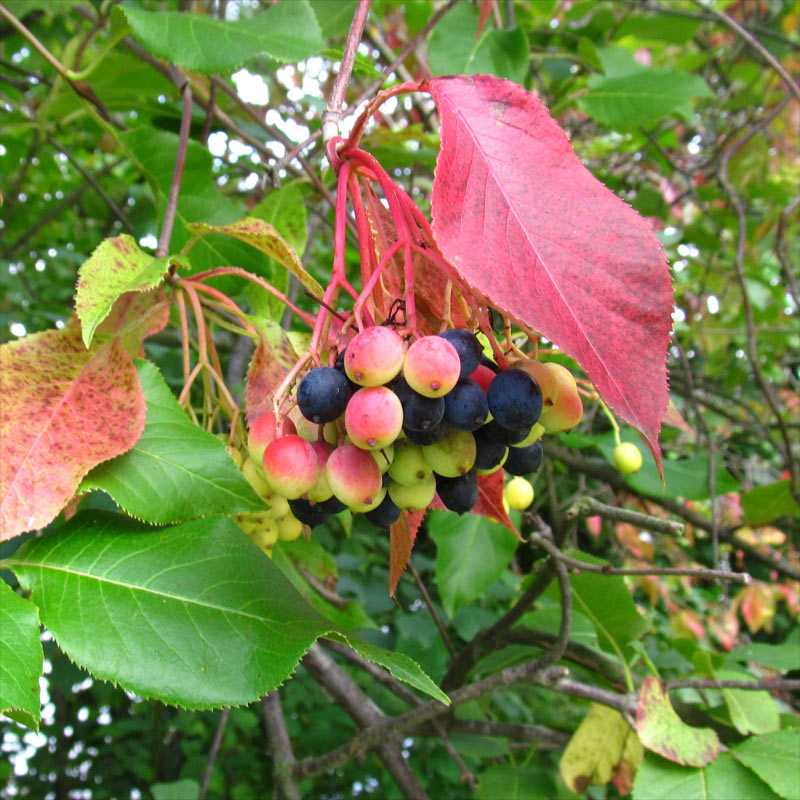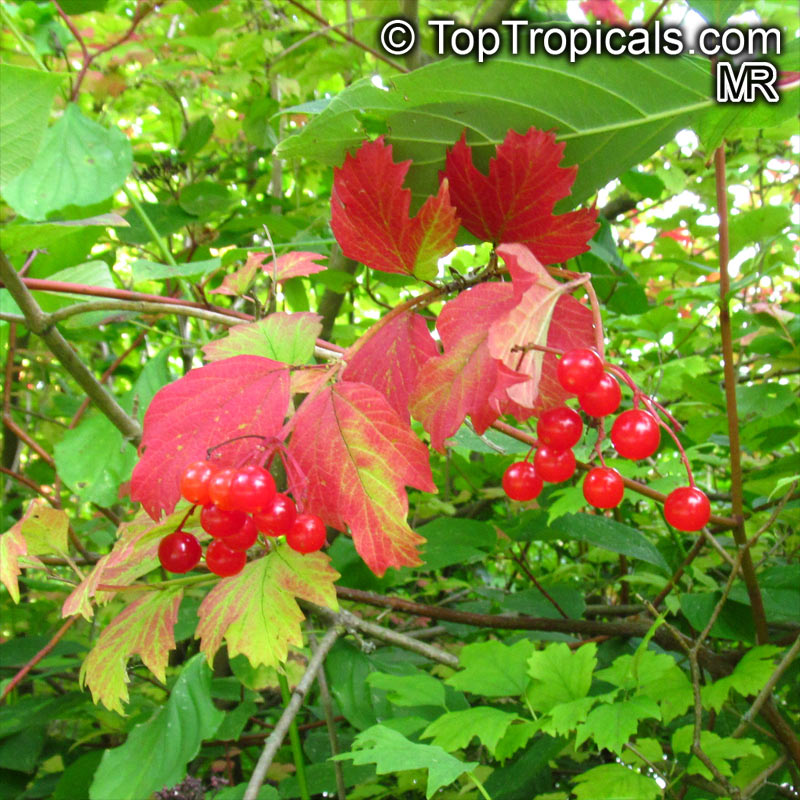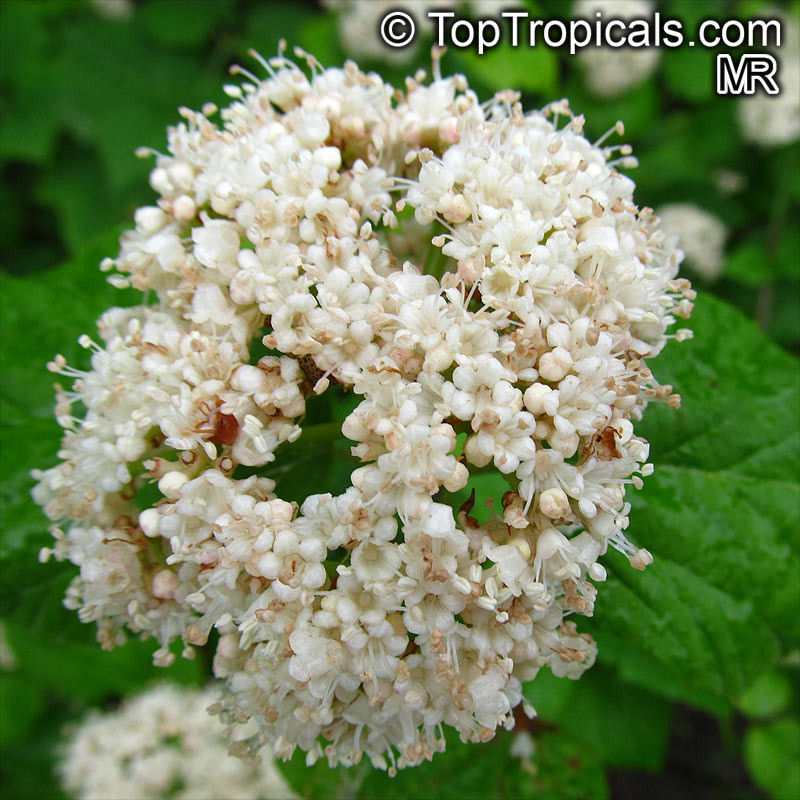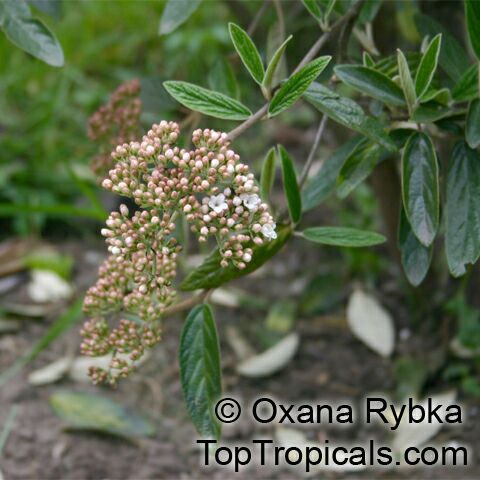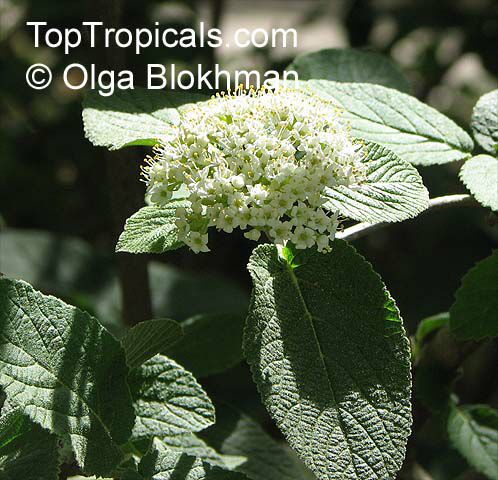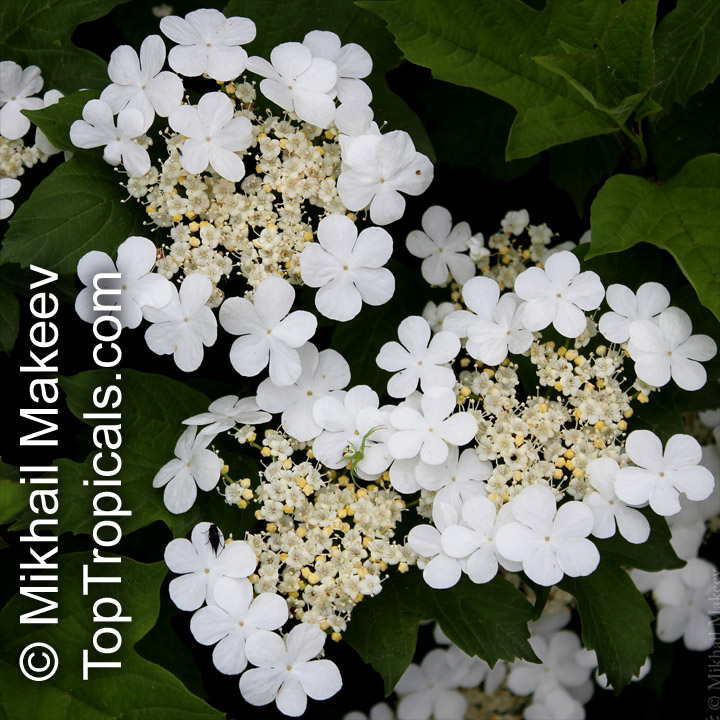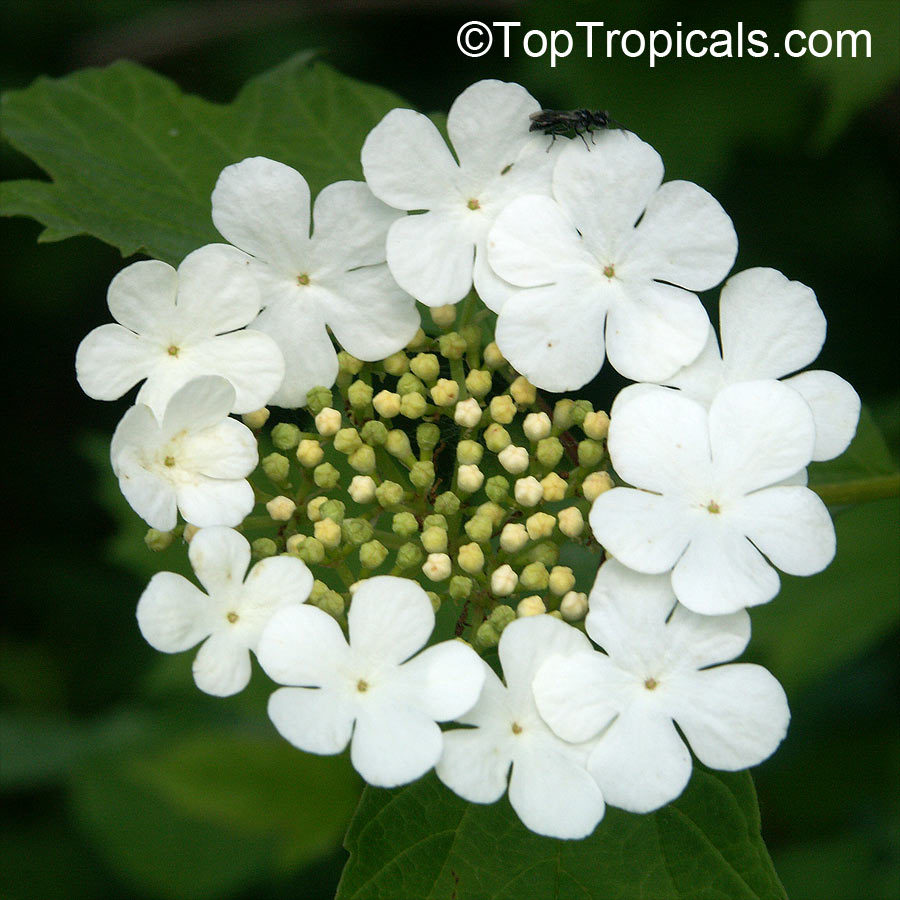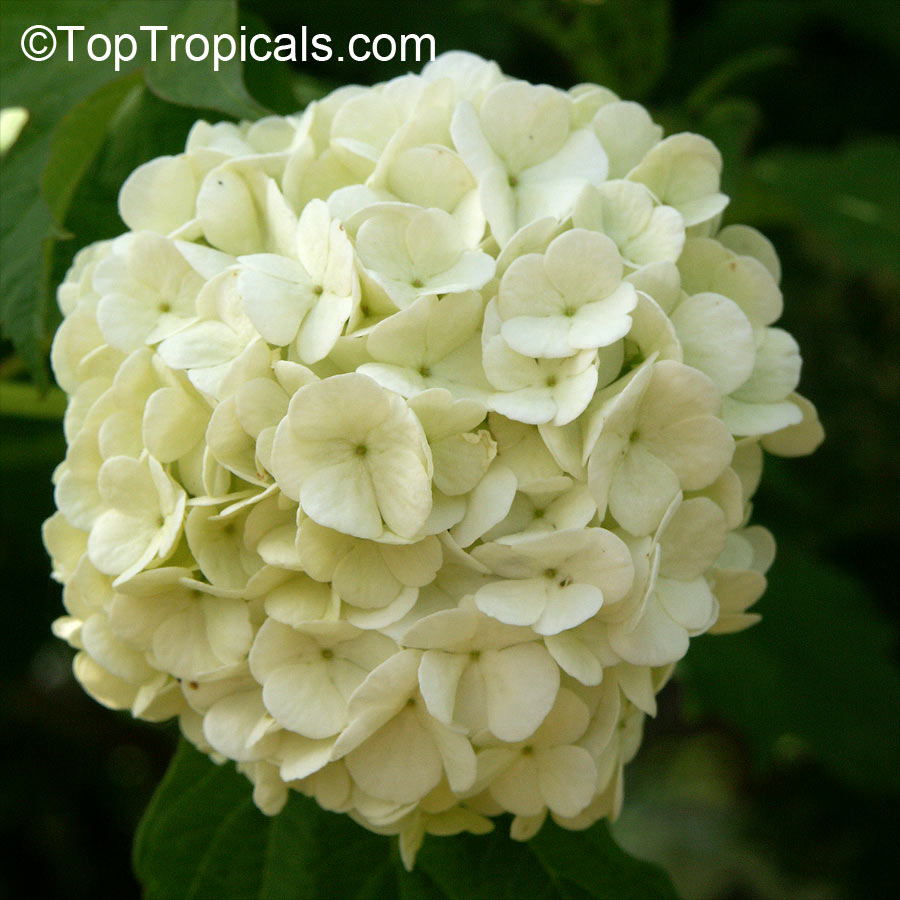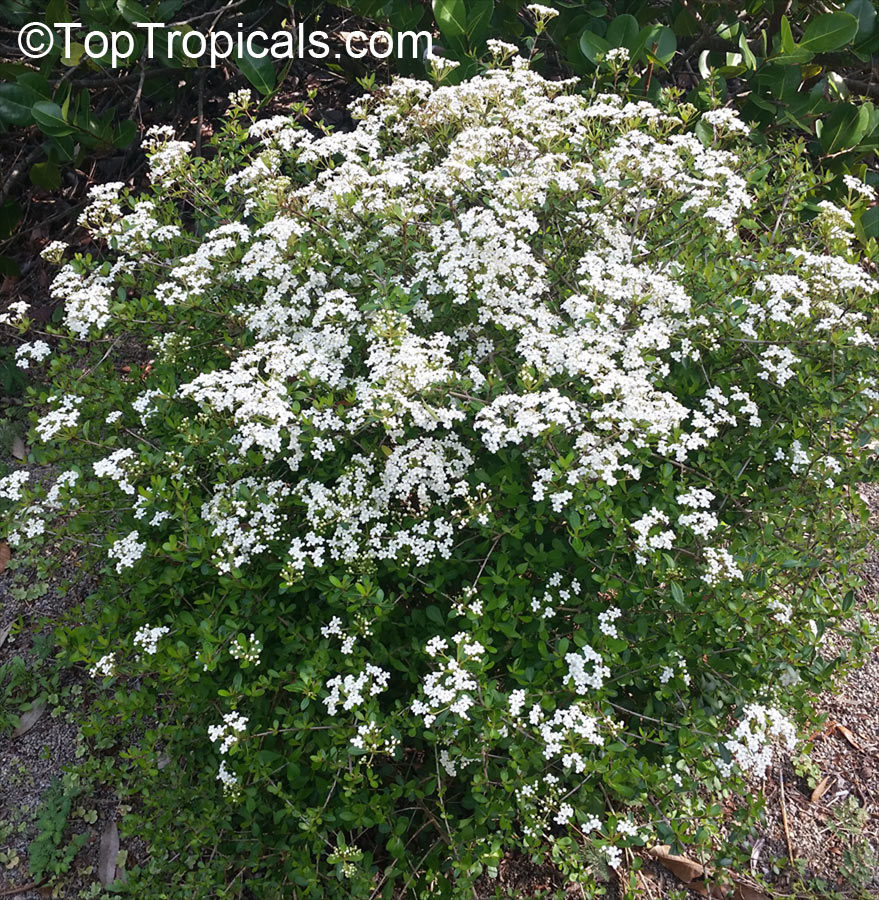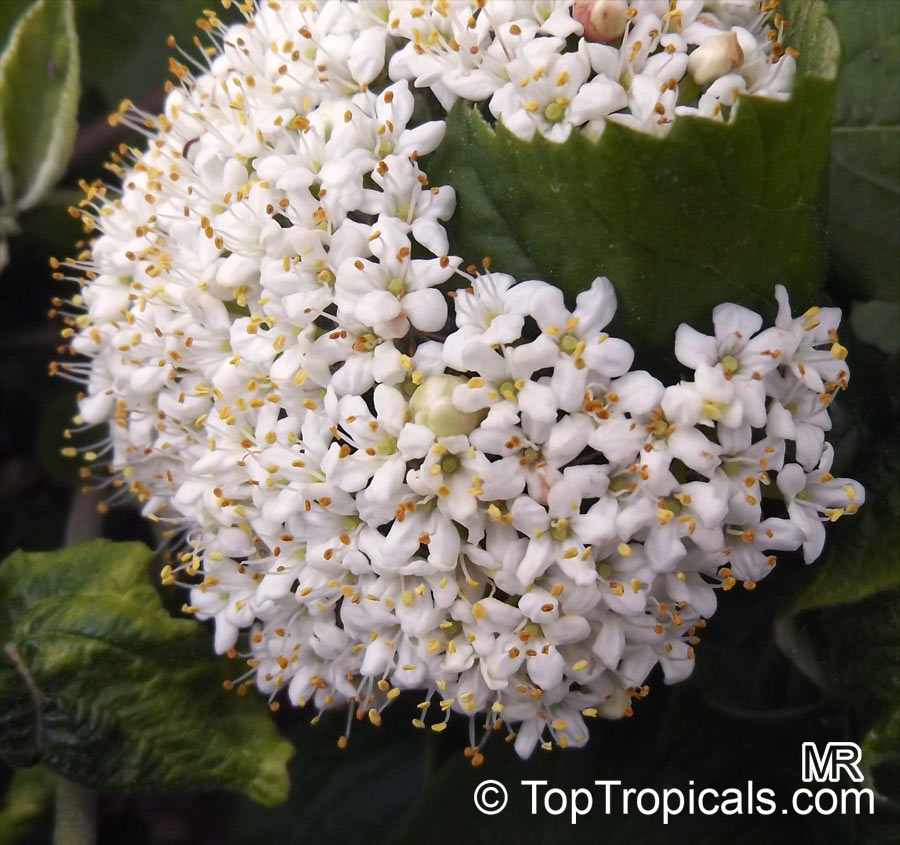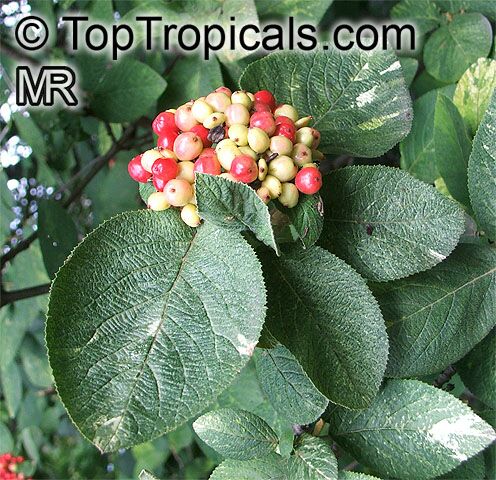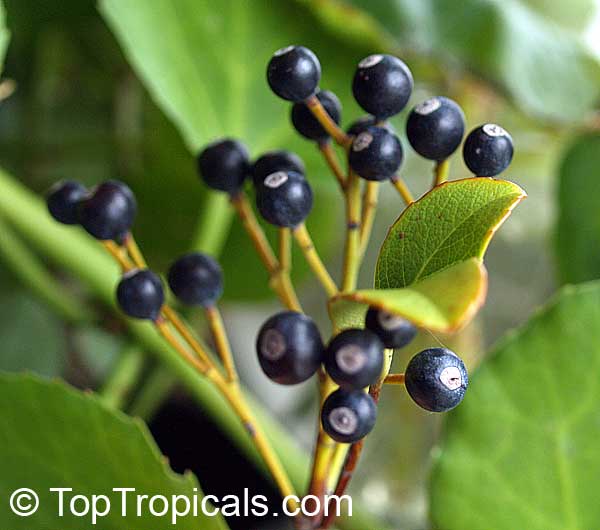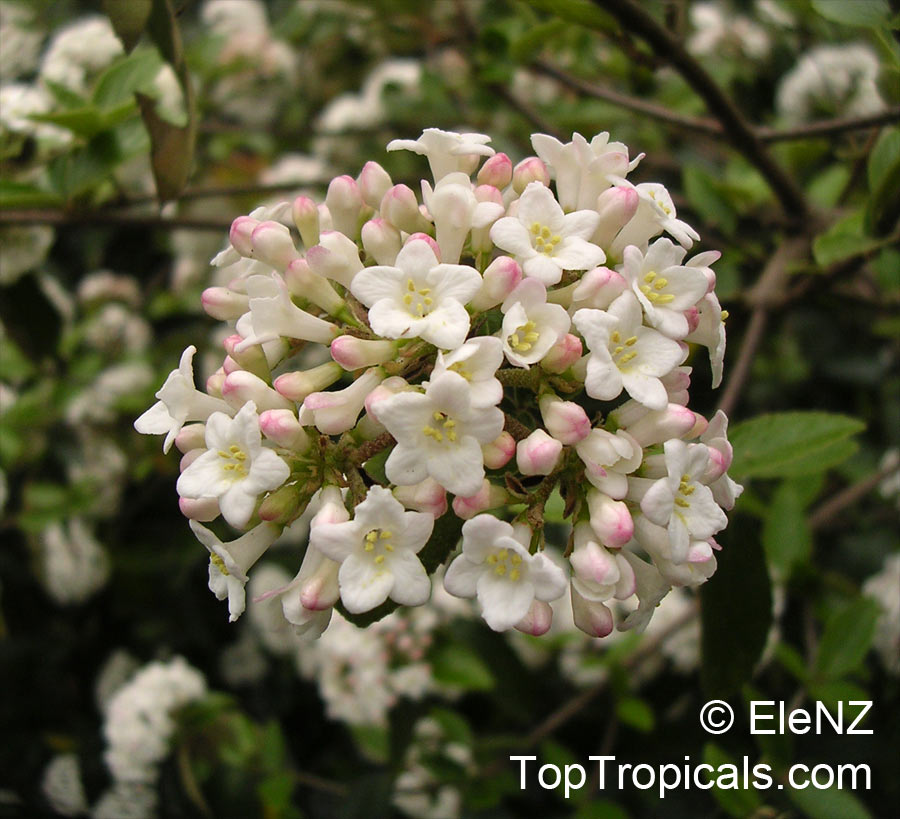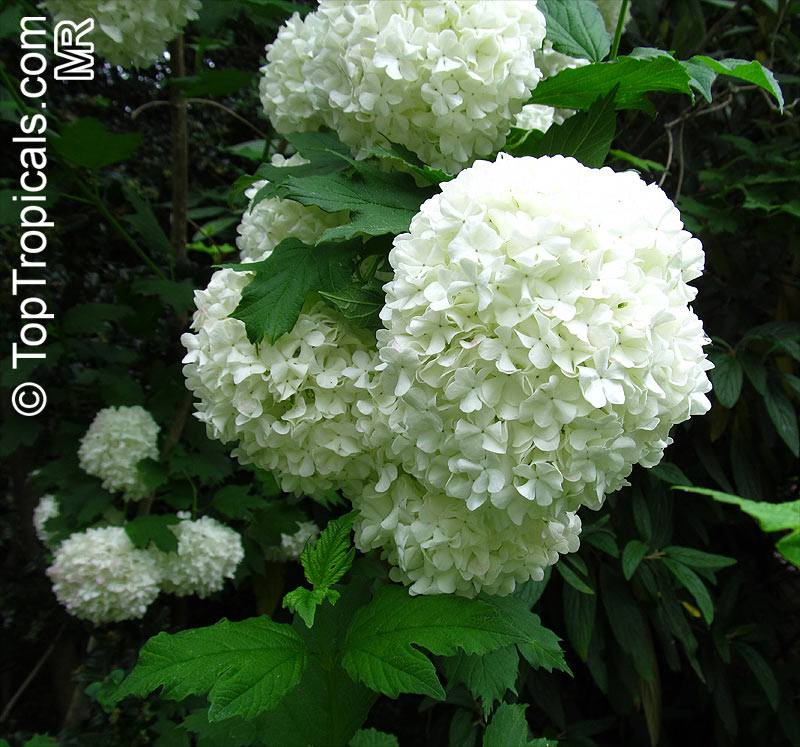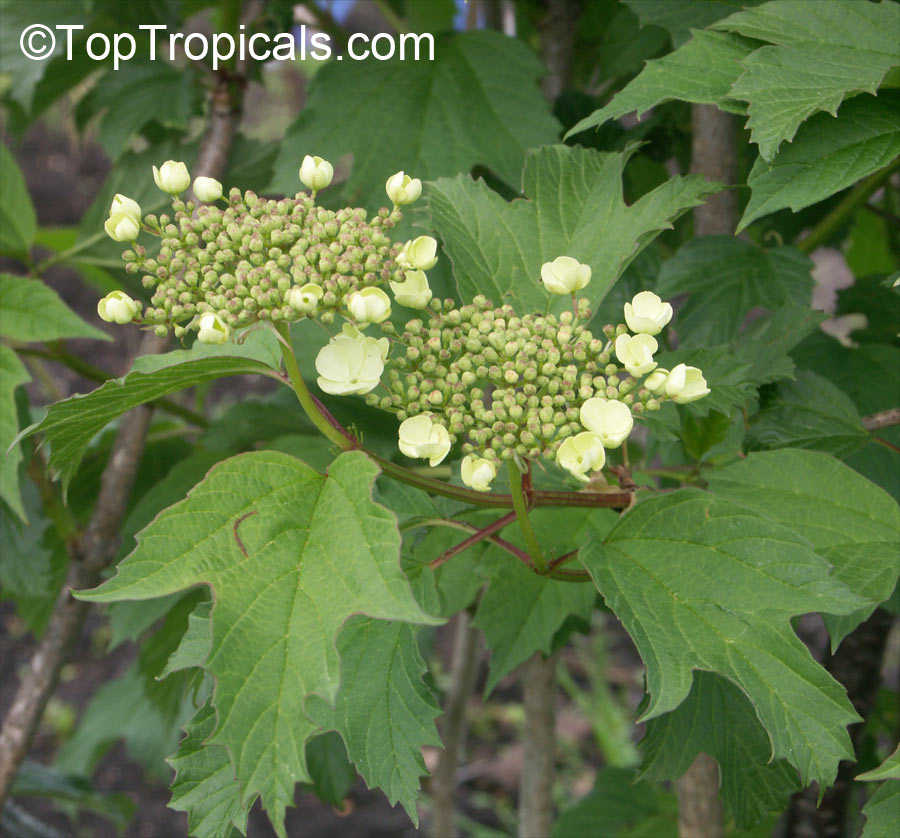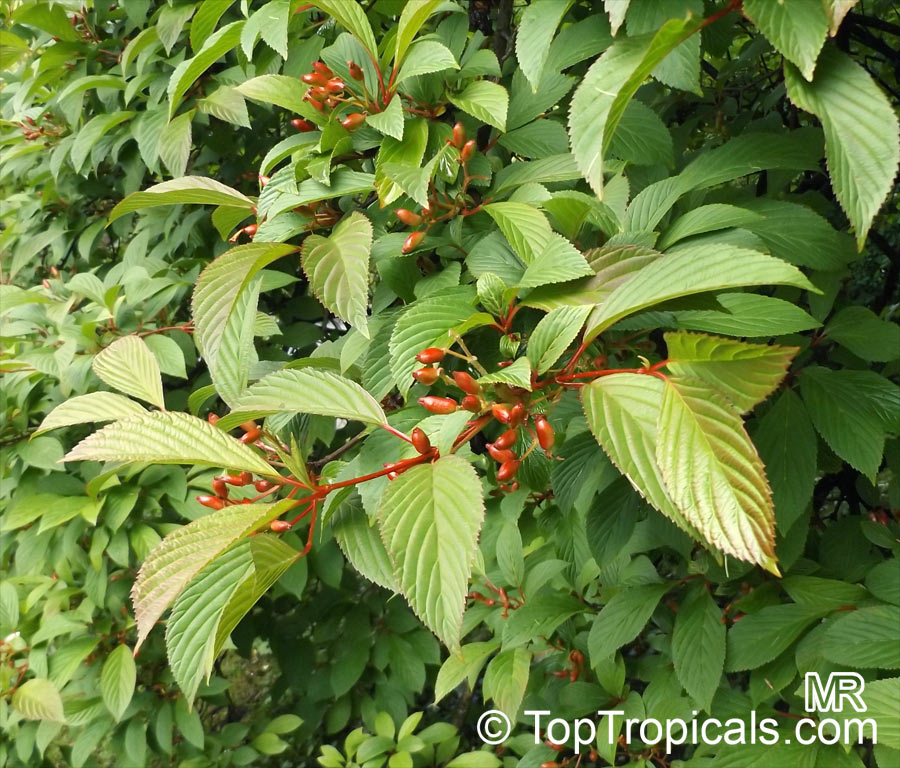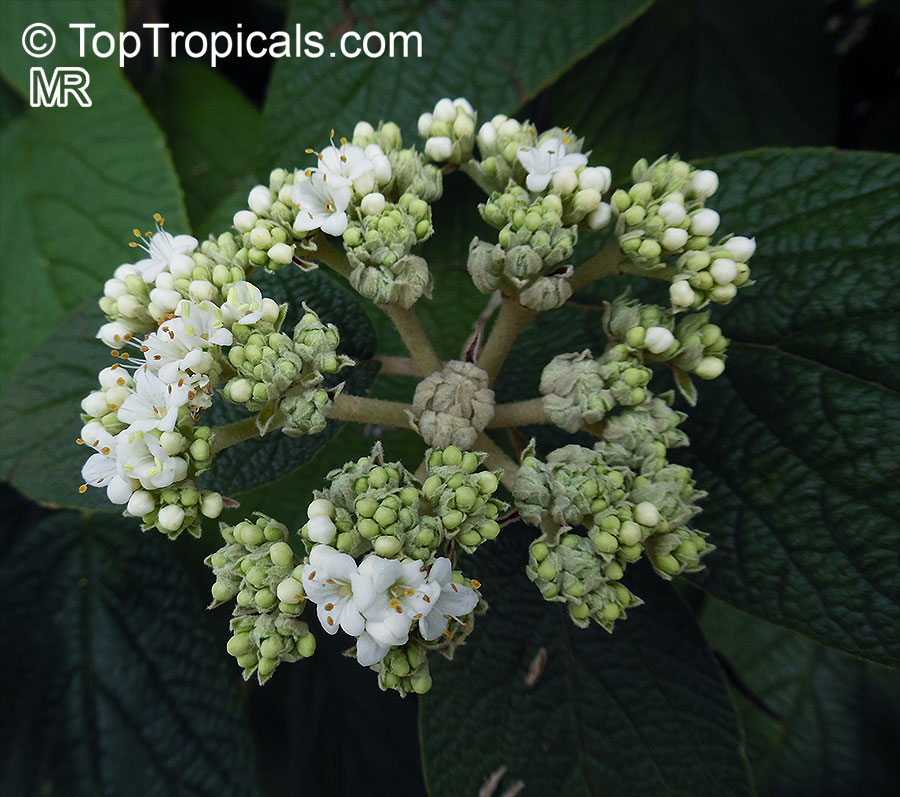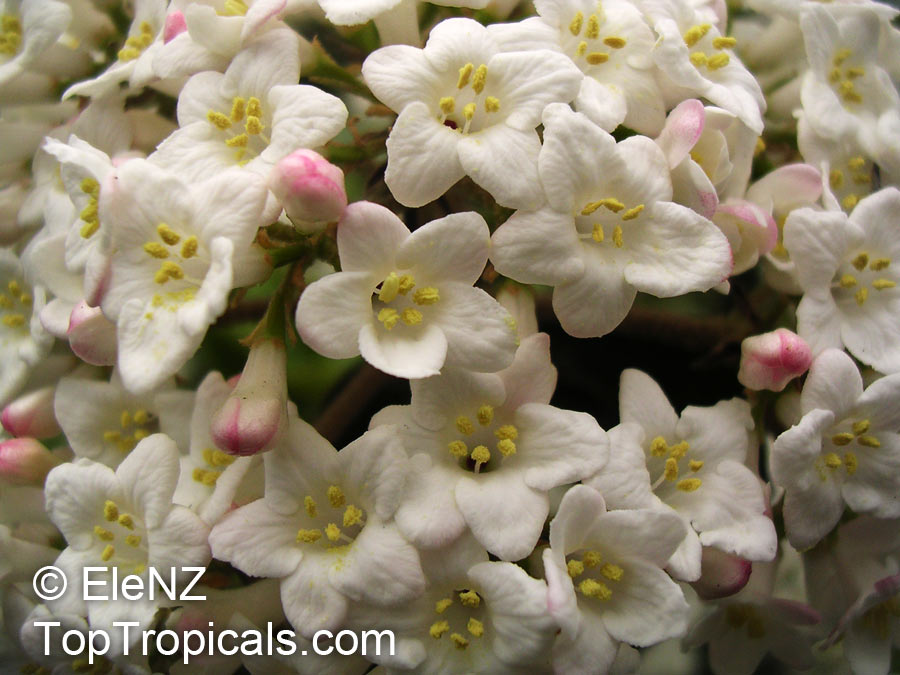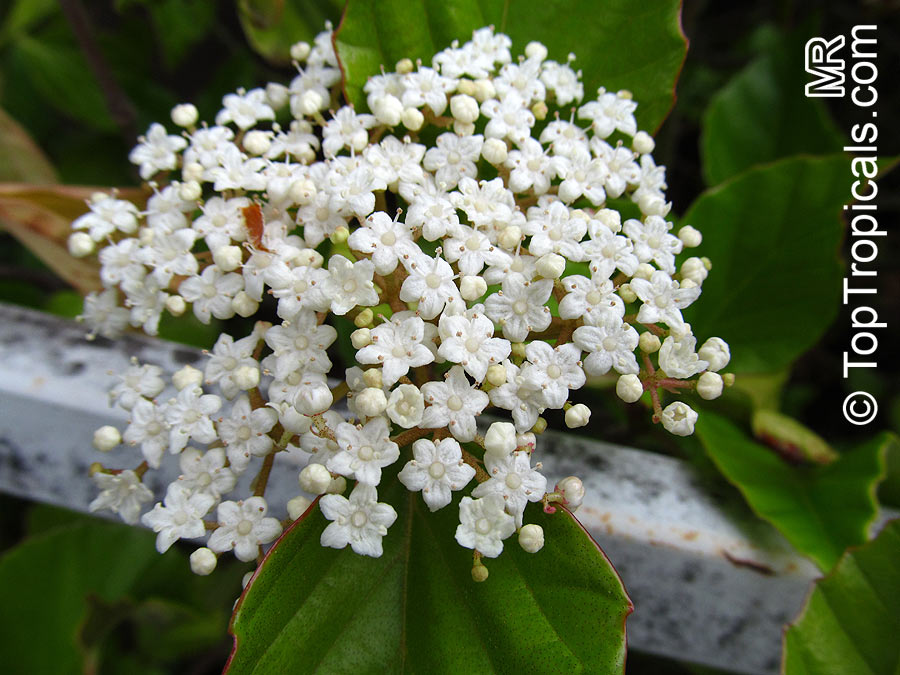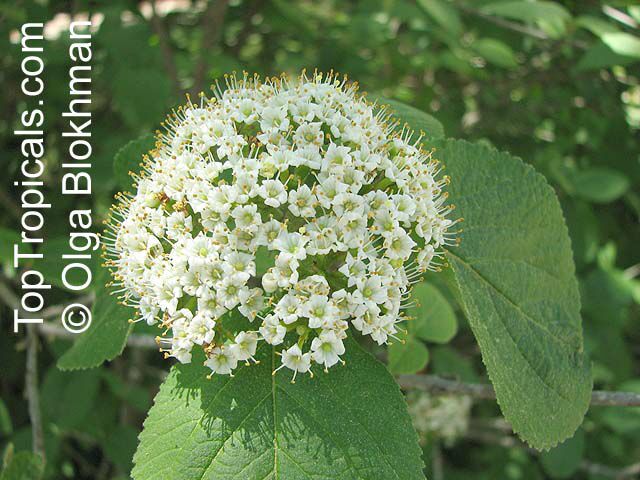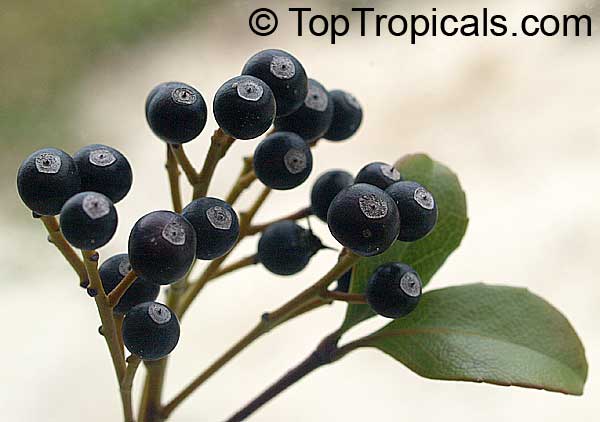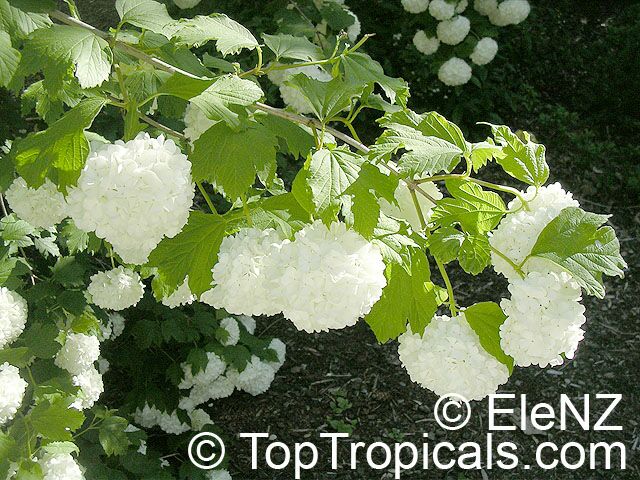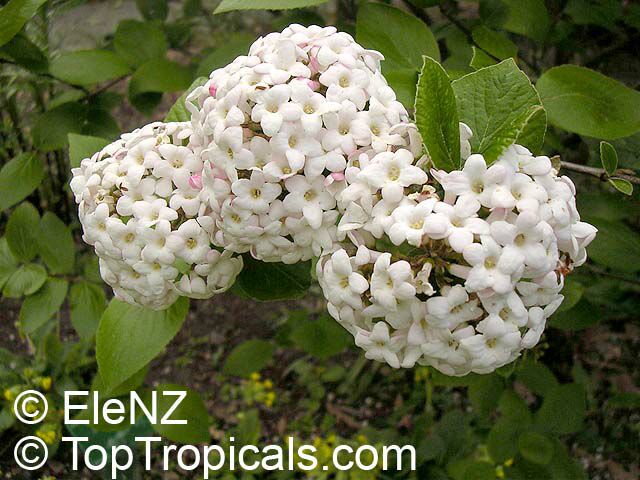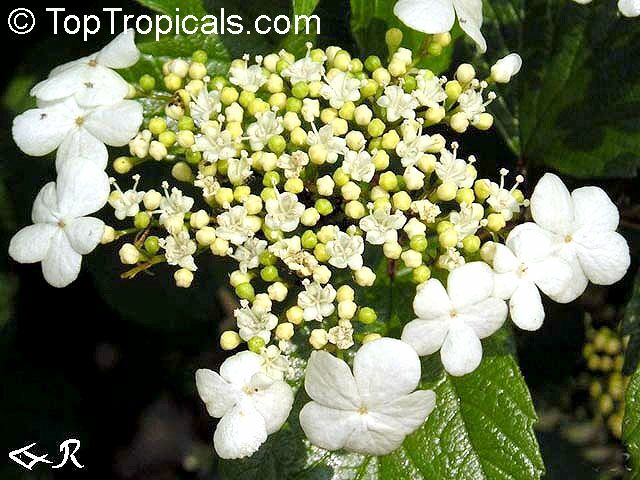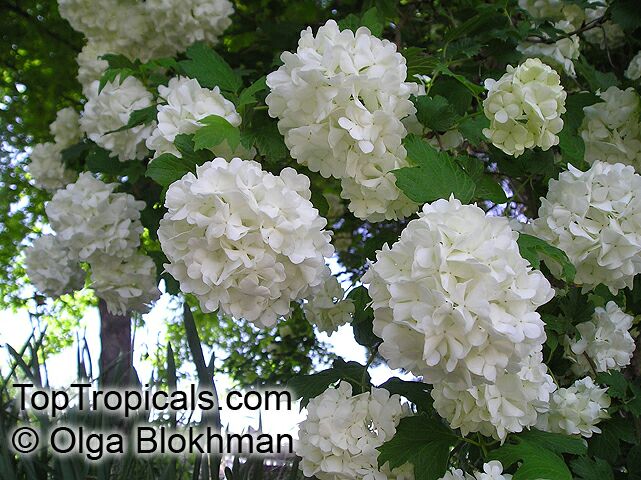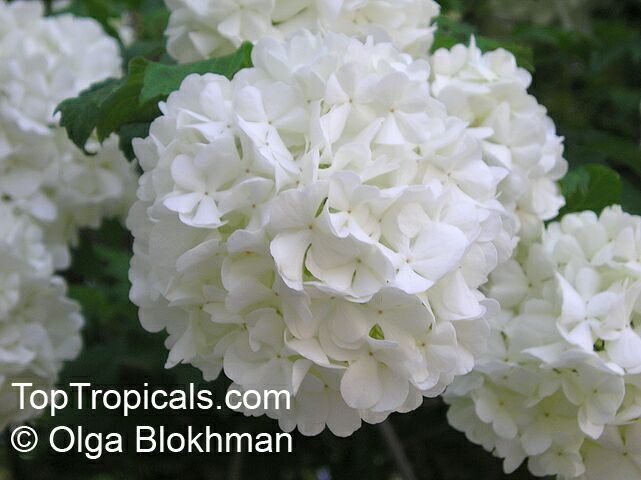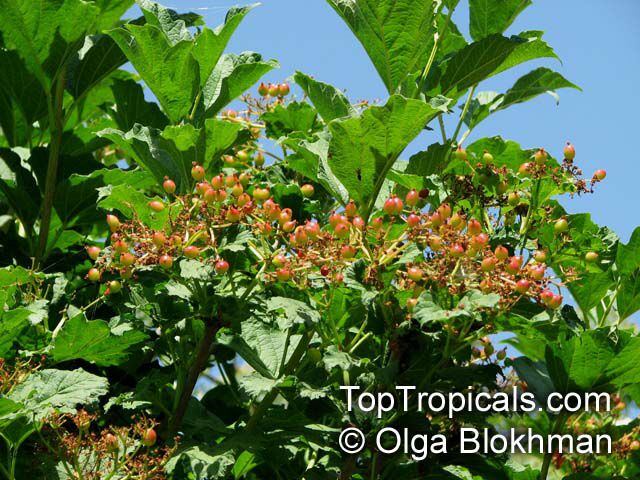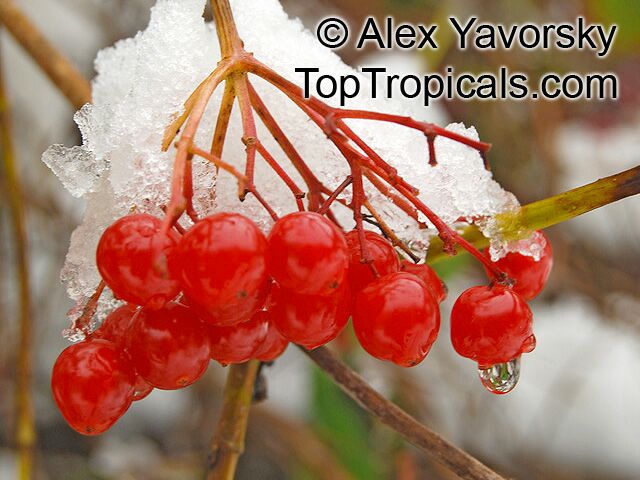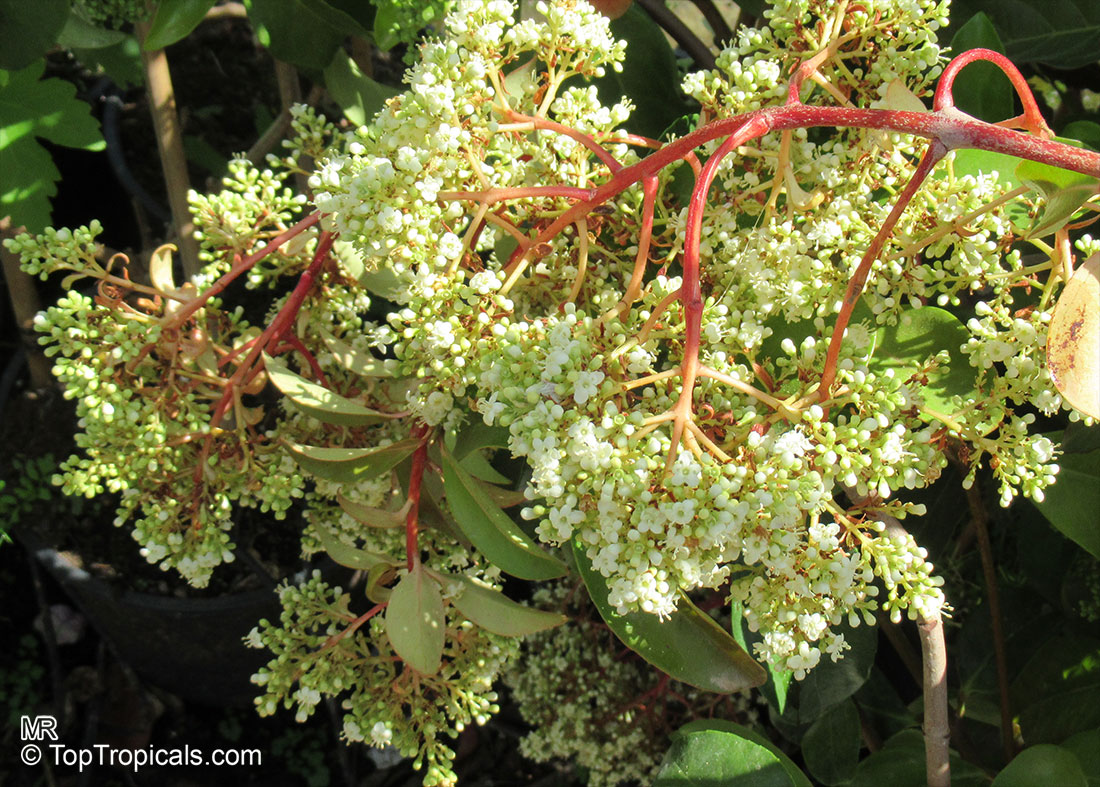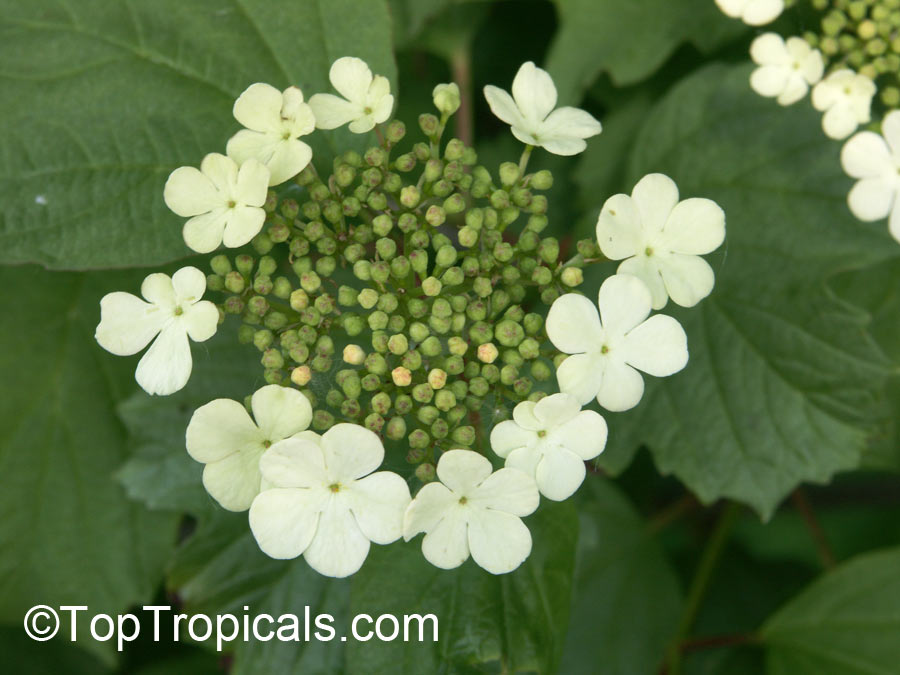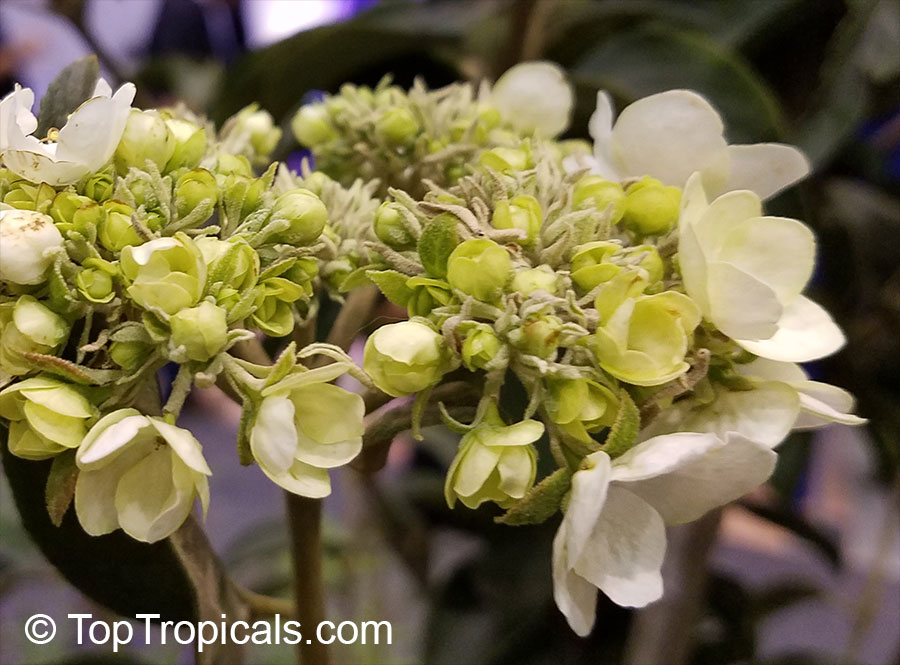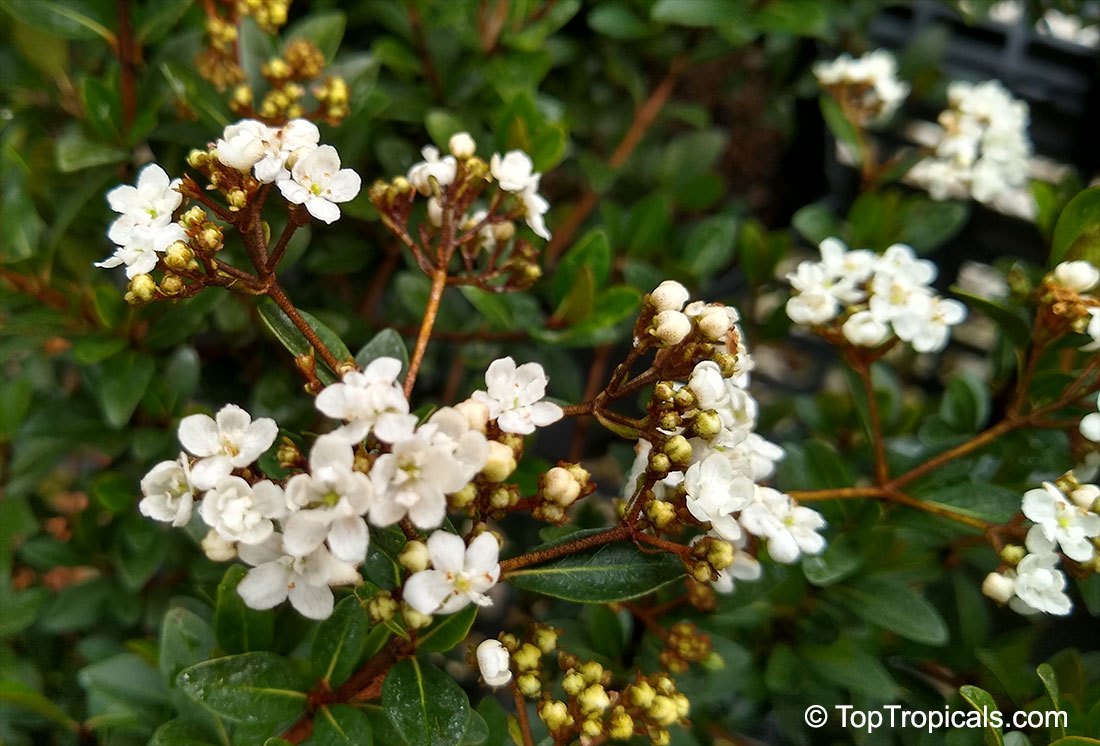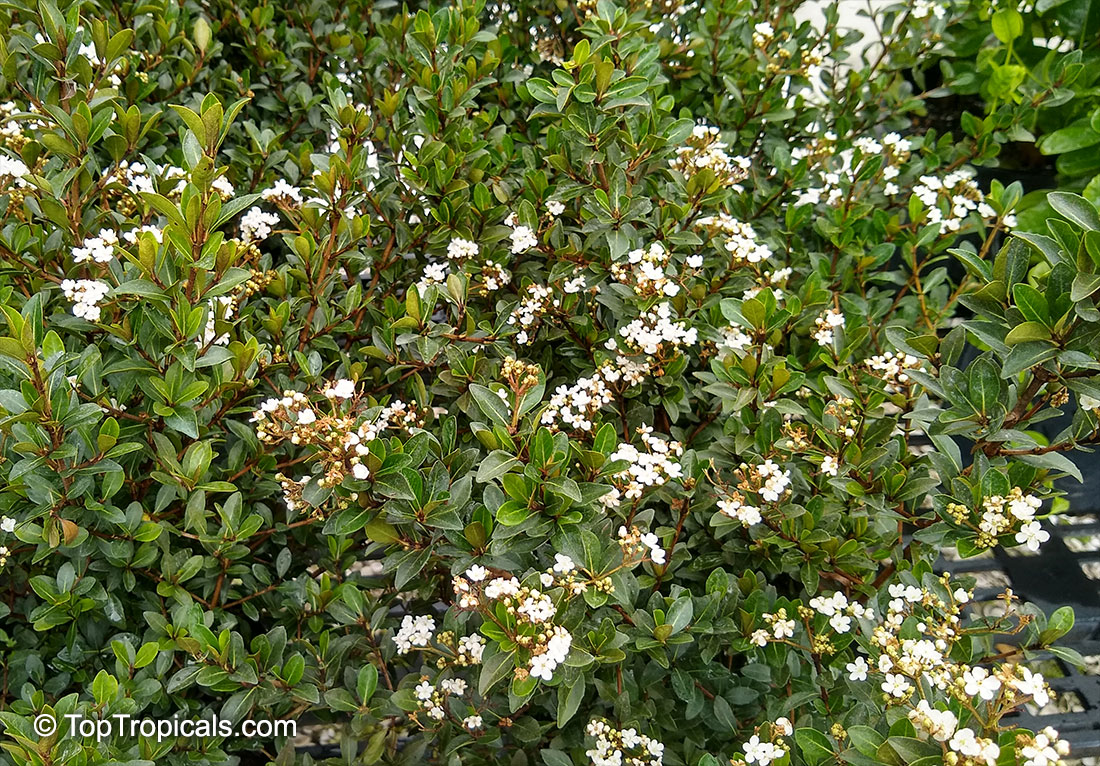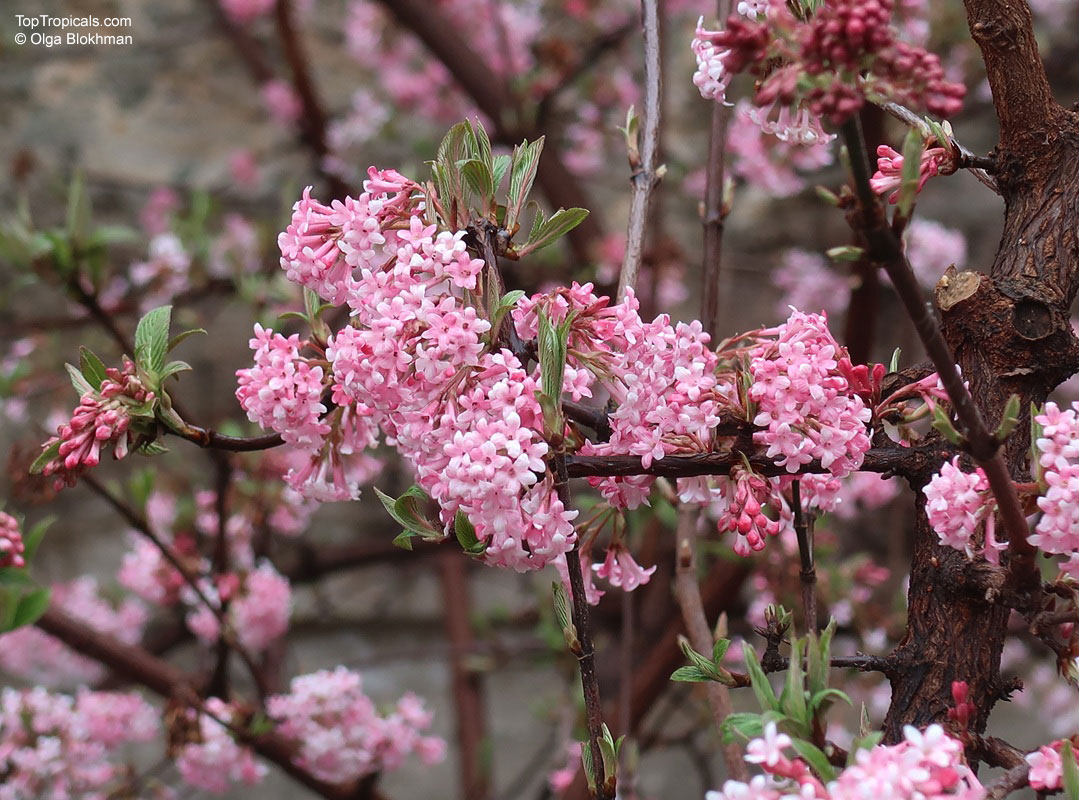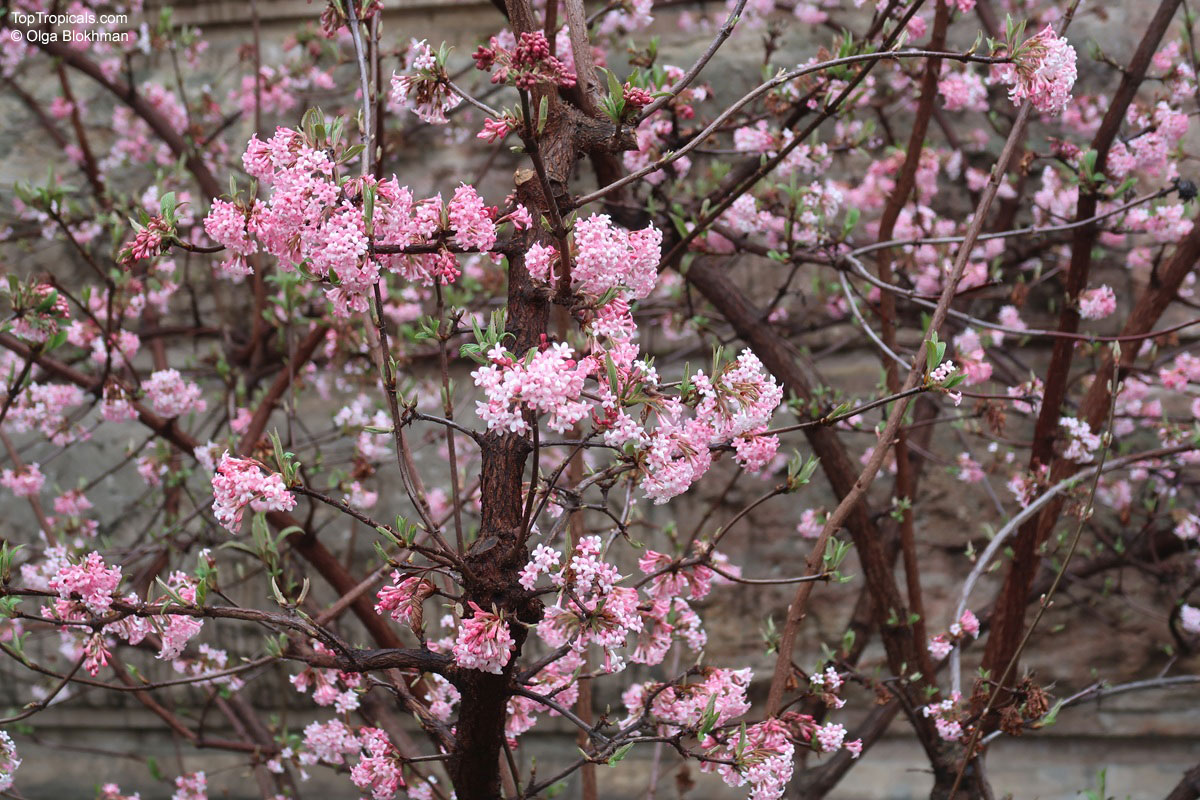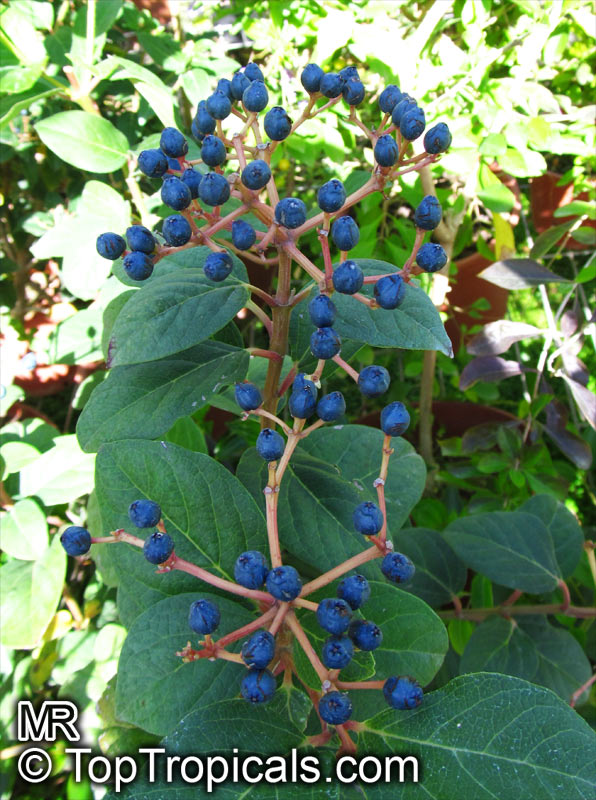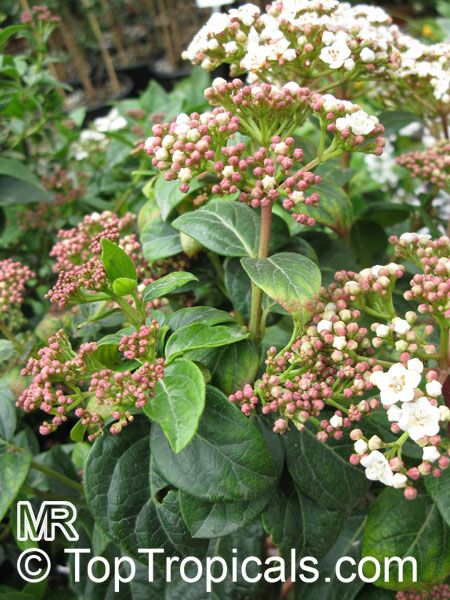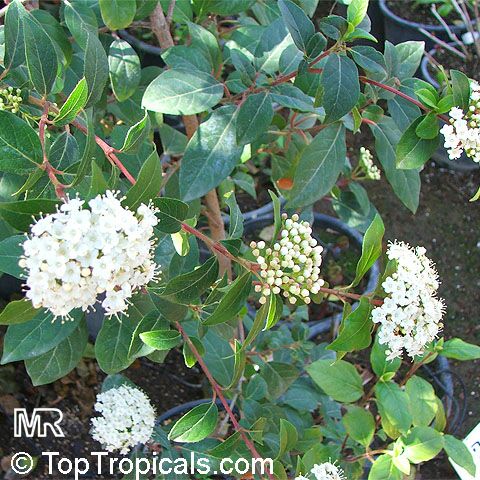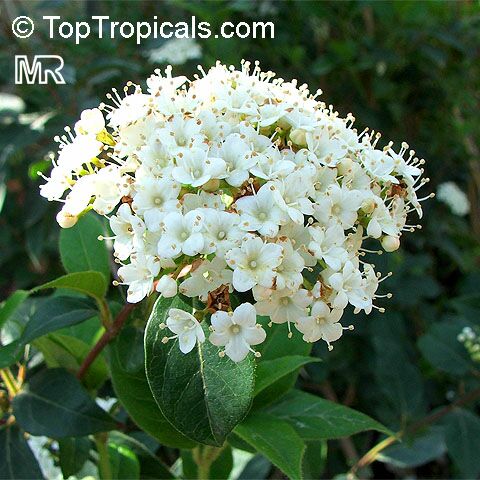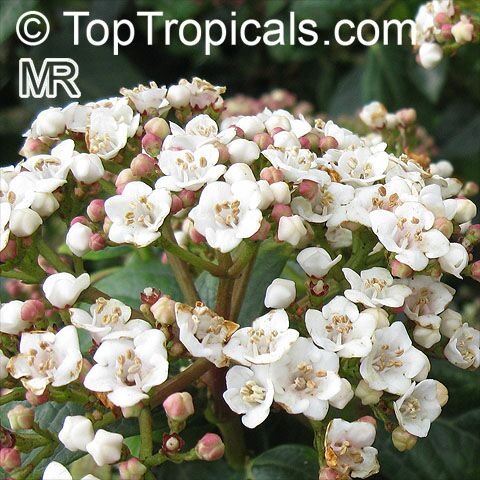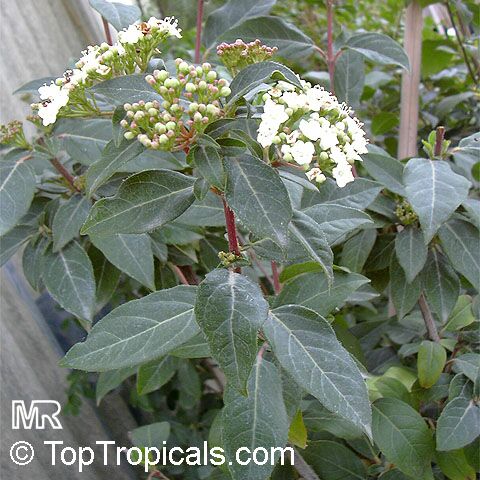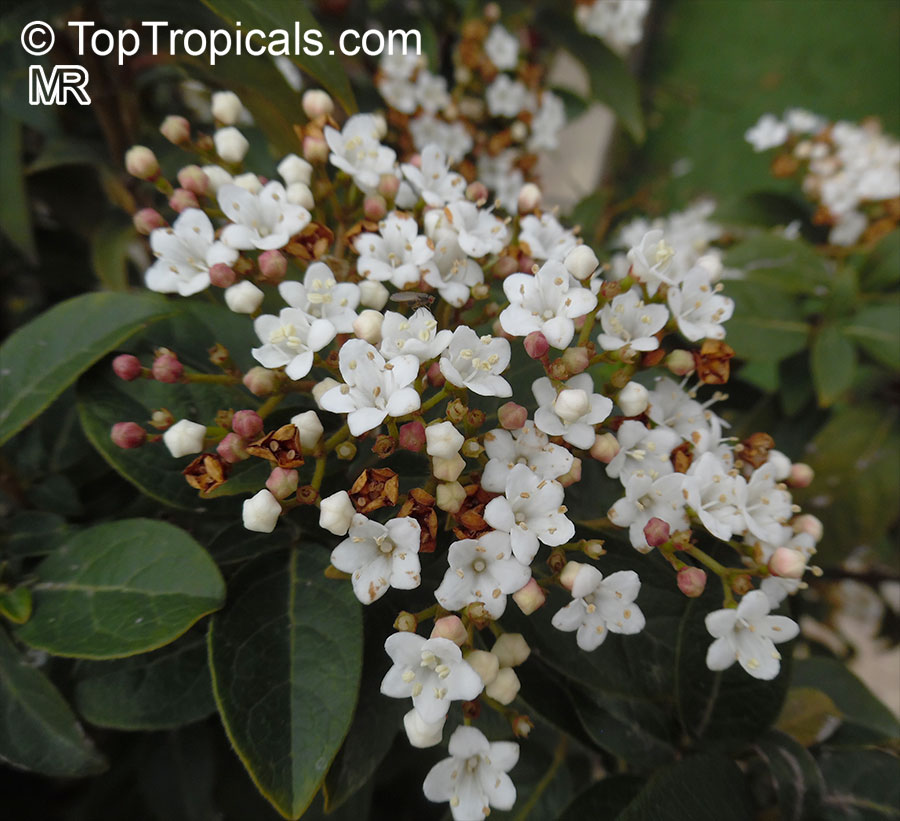Adoxaceae - Botanical Family
Top Tropicals Plant Encyclopedia
| Number of plants found: 6 |
Botanical name: Sambucus sp.
Common name: Elder
Family: Adoxaceae














Sambucus sp. (Elder) is a large shrub that typically grows 5-10 feet tall under ideal growing conditions. It likes full sun, but can tolerate semi-shade and prefers regular water, but can also manage with moderate water. In late spring, the shrub is covered with clusters of fragrant white or off-white flowers, with some species having yellow or orange flowers, too. These flowers are attractive to butterflies and hummingbirds.
This ethnomedical plant, also known as elderberry, is grown in USDA zones 3-9.
The berries of elderberry, once ripe, have a sweet-tart flavor and can be used to make pies, jams, and wines. Not only are elderberries edible, but they are also very healthy. They are high in vitamins A, B, and C, antioxidants, and the flavonoid anthocyanin, which gives the berries their dark purple color.
Apart from its edible fruits, the foliage of elderberry has also been used historically for medicinal purposes and to make dyes. In traditional herbalism, it is believed that the leaves and stems of elderberry help to reduce inflammation or fever, regulate and improve digestion, improve cardiovascular health, and reduce stress.
Botanical name: Viburnum odoratissimum
Common name: Sweet Viburnum
Family: Adoxaceae
Origin: Asia






Tiny white flowers are held in great panicles in spring and are pleasingly fragrant. Berries are drupes that turn from red to black and are attractive to birds. Full sun to light. Tolerates moderate shade, but may become scraggly under low light conditions. It is one of the most gratifying shrubs to use as a hedge, because of its fast rate of growth and the beautiful springtime fragrance. It's beautiful, versatile and rarely bothered by pests or disease.
Broadleaf evergreen shrub for informal hedges, screens, barriers, foundations, borders or open woodland areas.
Botanical name: Viburnum plicatum
Common name: Japanese Snowball
Family: Adoxaceae
Origin: Southeast Asia









It is a large shrub, typically growing 5-10 feet tall and wide, and is usually grown as an ornamental plant in gardens.
Viburnum plicatum is a large deciduous shrub that is native to Southeast Asia. It grows well with plenty of full sun to semi-shade and requires regular to moderate water. This plant produces white, or off-white flowers in late spring and early summer. The flowers of some cultivars are all sterile, making them look like a snowball.
When growing Viburnum plicatum, it is important to choose a well-draining spot. The soil should be kept moist and should not be allowed to dry out too quickly. Adding a layer of mulch can help keep the soil from drying out. This large shrub is easy to care for and can thrive with minimal attention.
Viburnum plicatum is relatively hardy. This plant is best grown in USDA hardiness zone 5-10. When planted in colder regions a large pot can be used to protect the plant. Place the pot in a warm area and bring indoors on cold nights. During the growing season, water regularly and fertilize in the early spring. Prune to shape in the spring and late summer to keep the plant tidy.
With its white flowers, and beautiful shape, Viburnum plicatum can be a great addition to your garden. It is easy to care for and can provide a stunning focal point all year round. If you are looking for a large shrub that can tolerate both the heat of the summer and the cold of the winter, this could be the perfect plant for you.
Botanical name: Viburnum rhytidophyllum
Common name: Leatherleaf Viburnum
Family: Adoxaceae
Origin: Asia









Leatherleaf Viburnum is a hardy large shrub, native to east and southeast Asia, and can grow up to 5-10 feet in height. With a moderate water requirement and full, off-white flowers blooming from winter to spring, it can easily attract butterflies and hummingbirds to the garden.
In terms of its growth requirements, Viburnum rhytidophyllum prefers moist, well-drained soil and thrives in full sun and semi-shade environments. It prefers regular water but can also find success in moderate water conditions.
When it comes to growing this plant in cold climates, the leatherleaf viburnum is cold hardy.
In the right environment and with adequate care, the leatherleaf viburnum will add a touch of elegance to the garden and uplift any garden atmosphere.
Botanical name: Viburnum sp.
Common name: Viburnum
Family: Adoxaceae
Origin: Asia
Hardiness: -15°F












This important genus is made up of some 150 species of evergreen, semi-evergreen and decidouos cool-climate shrubs or small trees. Fully to moderately frost hardy, most species are remarkably trouble-free plants, growing in any well-drained soil in sun or light shade.
Botanical name: Viburnum tinus
Common name: Laurustinus
Family: Adoxaceae
Origin: Canary Islands








Viburnum tinus (Laurustinus) is a large shrub, growing 5-10 ft tall, native to the Canary Islands. Known for its attractive and fragrant off-white or white blossoms, it's an ideal option for attracting butterflies and hummingbirds. Ideal for growing in USDA Zone 9-11, Viburnum tinus enjoys a sunny spot but can thrive in semi-shade too. The shrub is tolerant of both regular and moderate water amounts, making it an easy choice for those who want to enjoy a low maintenance garden.
When planted in cold regions, Viburnum tinus does best if kept in a pot, making it quite easy to move in and out of sunlight as necessary. As such, diurnal variation and changing seasons can be tracked by moving the pot. This also means it can be taken inside over the winter period, allowing for its continued enjoyment with minimal effort: simply remember to bring it back out in the spring, with additional care for wintered potting. To ensure, the shrub thrives, make sure to keep the soil well draining and moist, with adequate protection from the strong winds that can occur in these areas.
Viburnum tinus is an attractive and easy-to-care-for shrub, ideal for creating low maintenance, fragrant gardens and a great choice to enjoy over an extended period throughout the year.
Use link to repeat this search:
https://toptropicals.com/cgi-bin/garden_catalog/cat.cgi?search_op=and&keyword_op=and&language=e&family=Adoxaceae&number=10
&no_change_lang=1&user=tt&sale=1&first=0
